Microorganisms With Increased Photosynthetic Capacity
ROBERTS; James ; et al.
U.S. patent application number 16/874023 was filed with the patent office on 2020-12-17 for microorganisms with increased photosynthetic capacity. The applicant listed for this patent is LUMEN BIOSCIENCE, INC., RELIANCE HOLDING USA, INC.. Invention is credited to Damian CARRIERI, Mark HEINNICKEL, James ROBERTS.
| Application Number | 20200392189 16/874023 |
| Document ID | / |
| Family ID | 1000005051540 |
| Filed Date | 2020-12-17 |

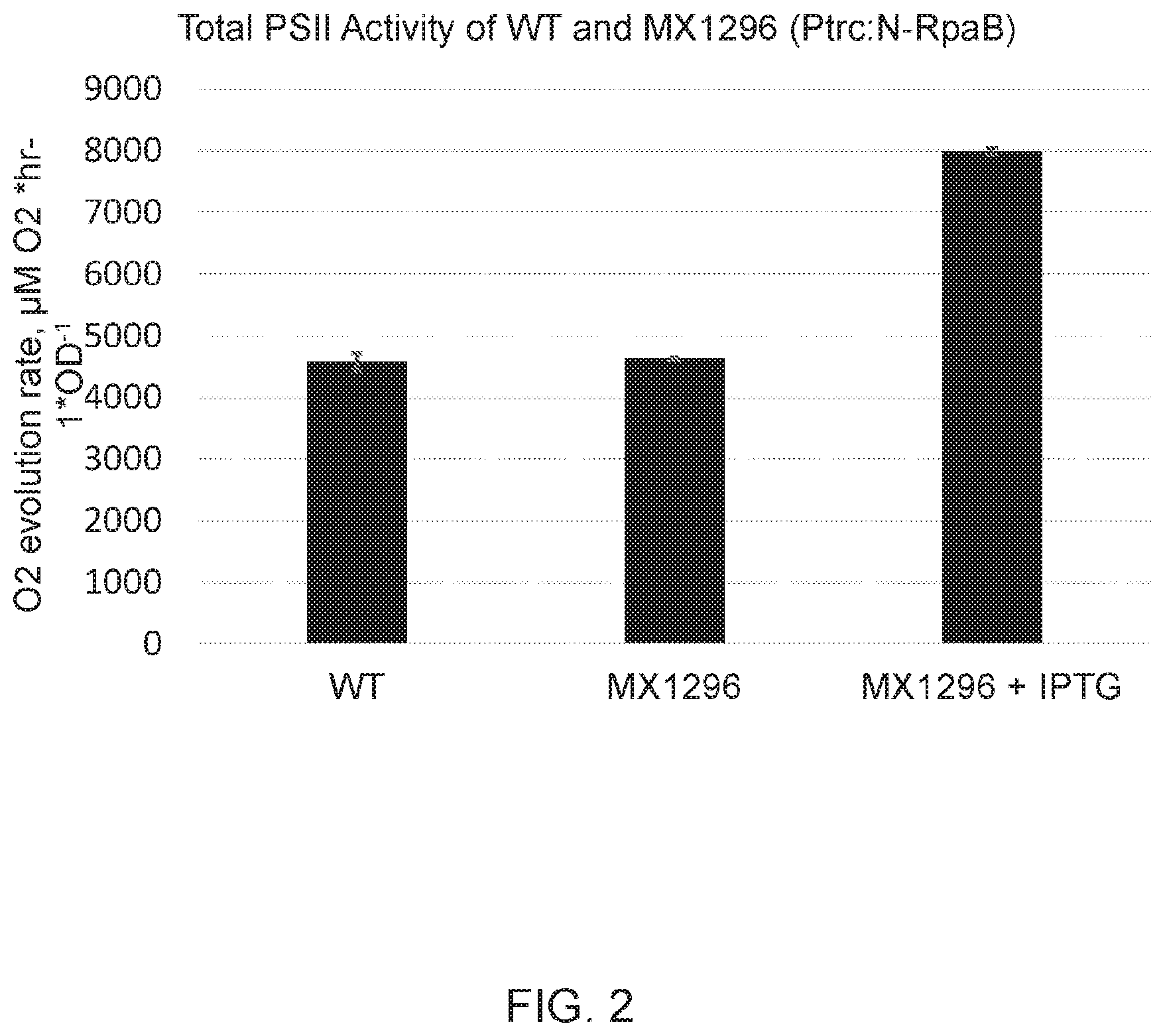
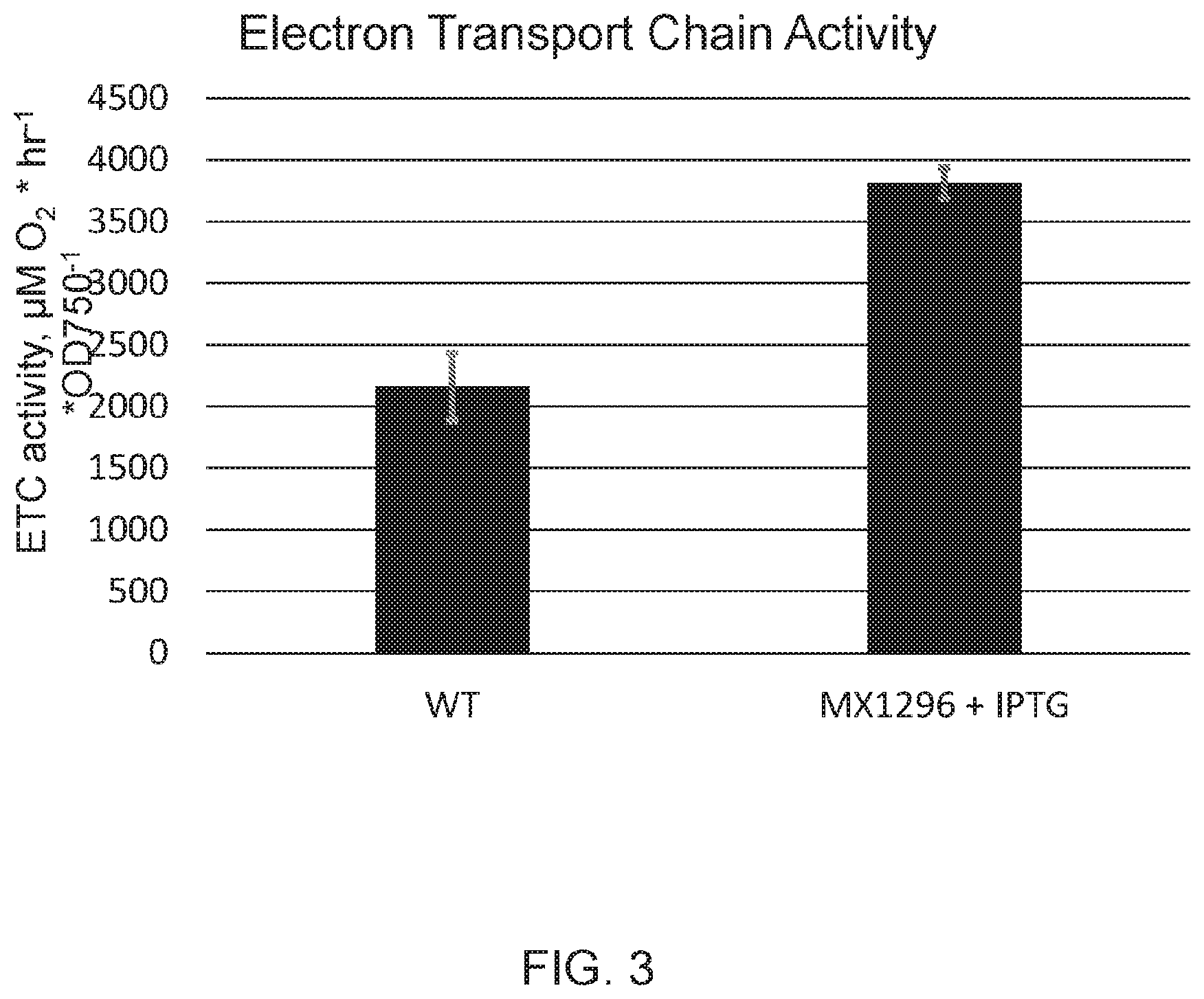
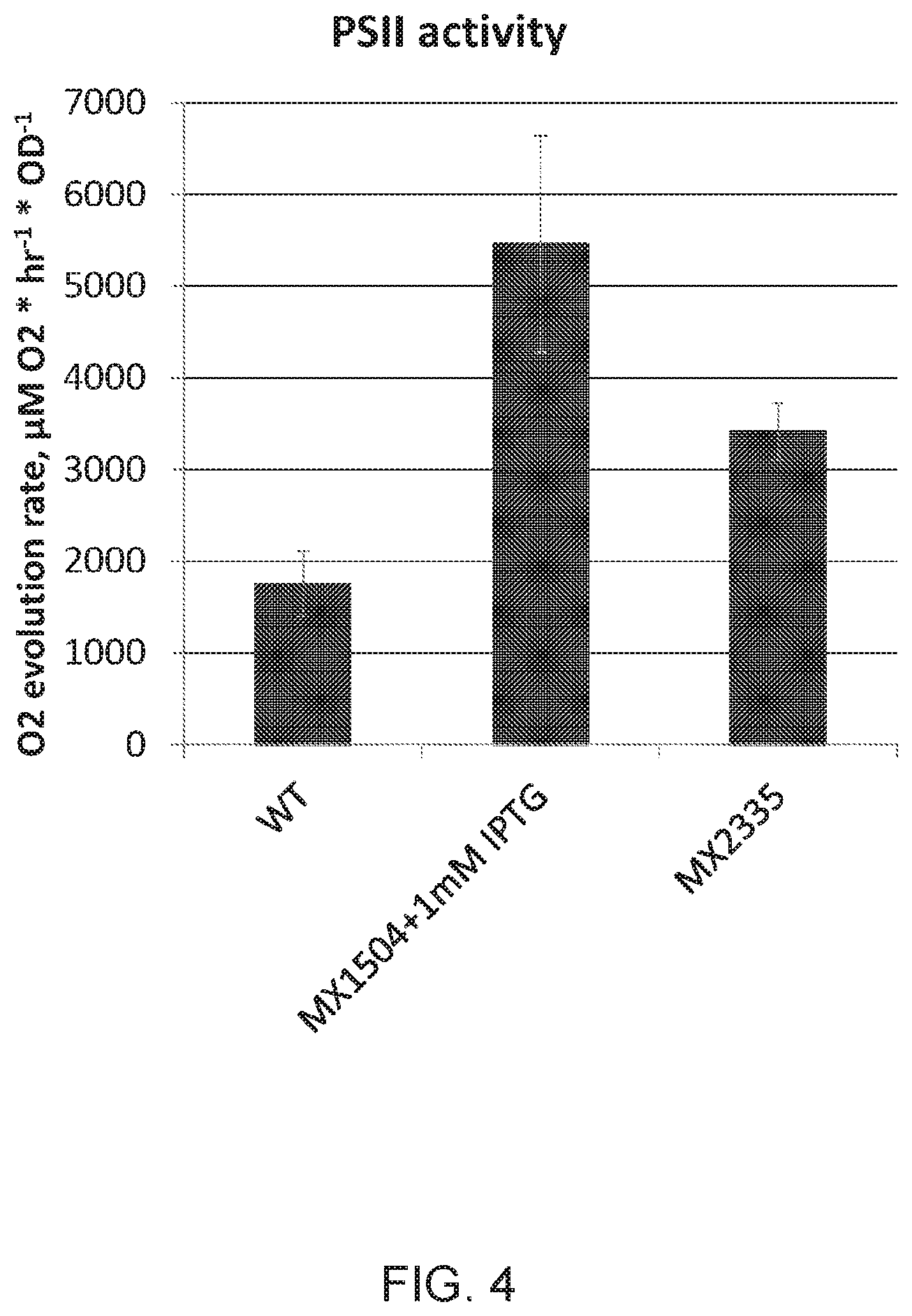
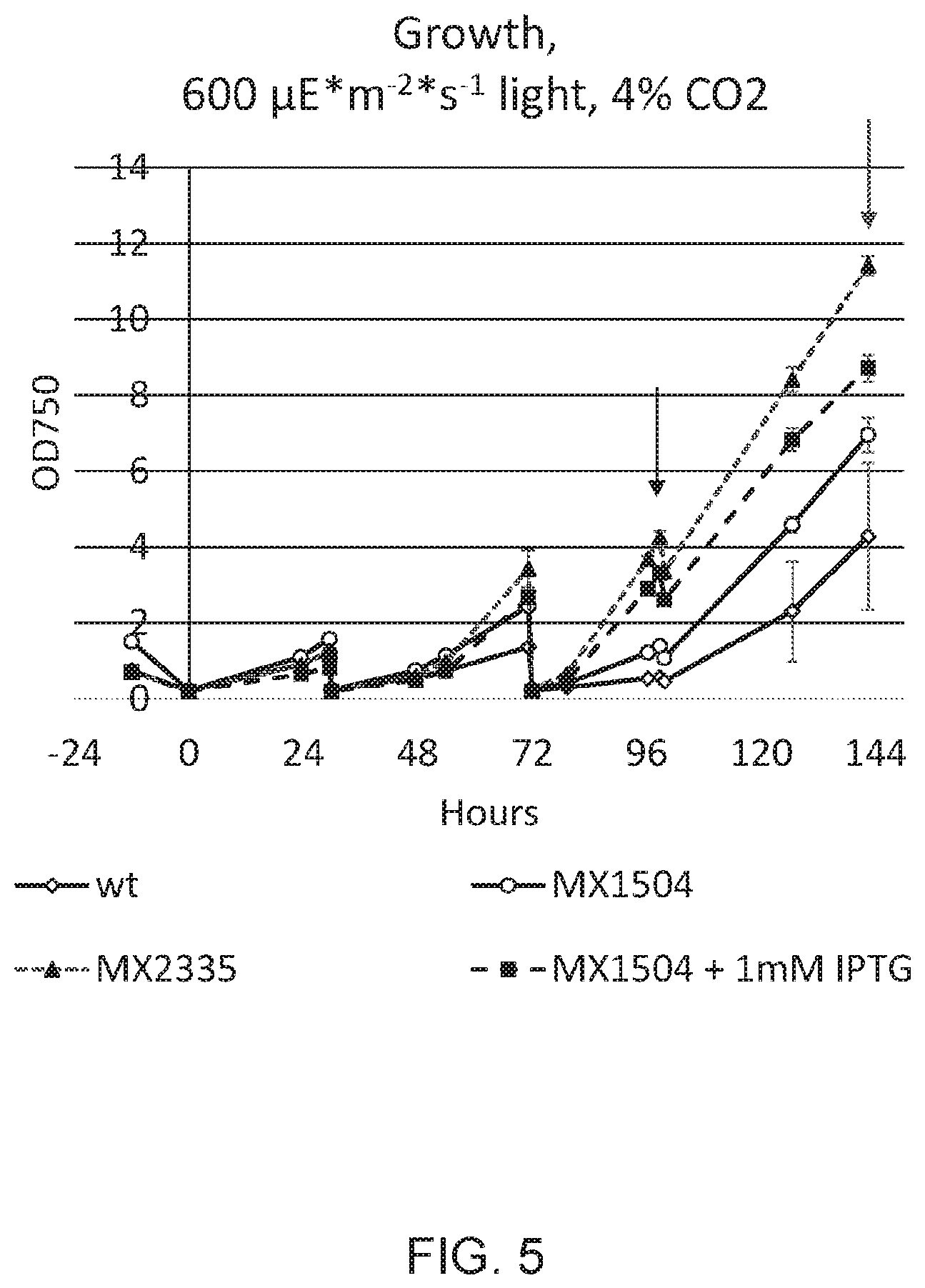
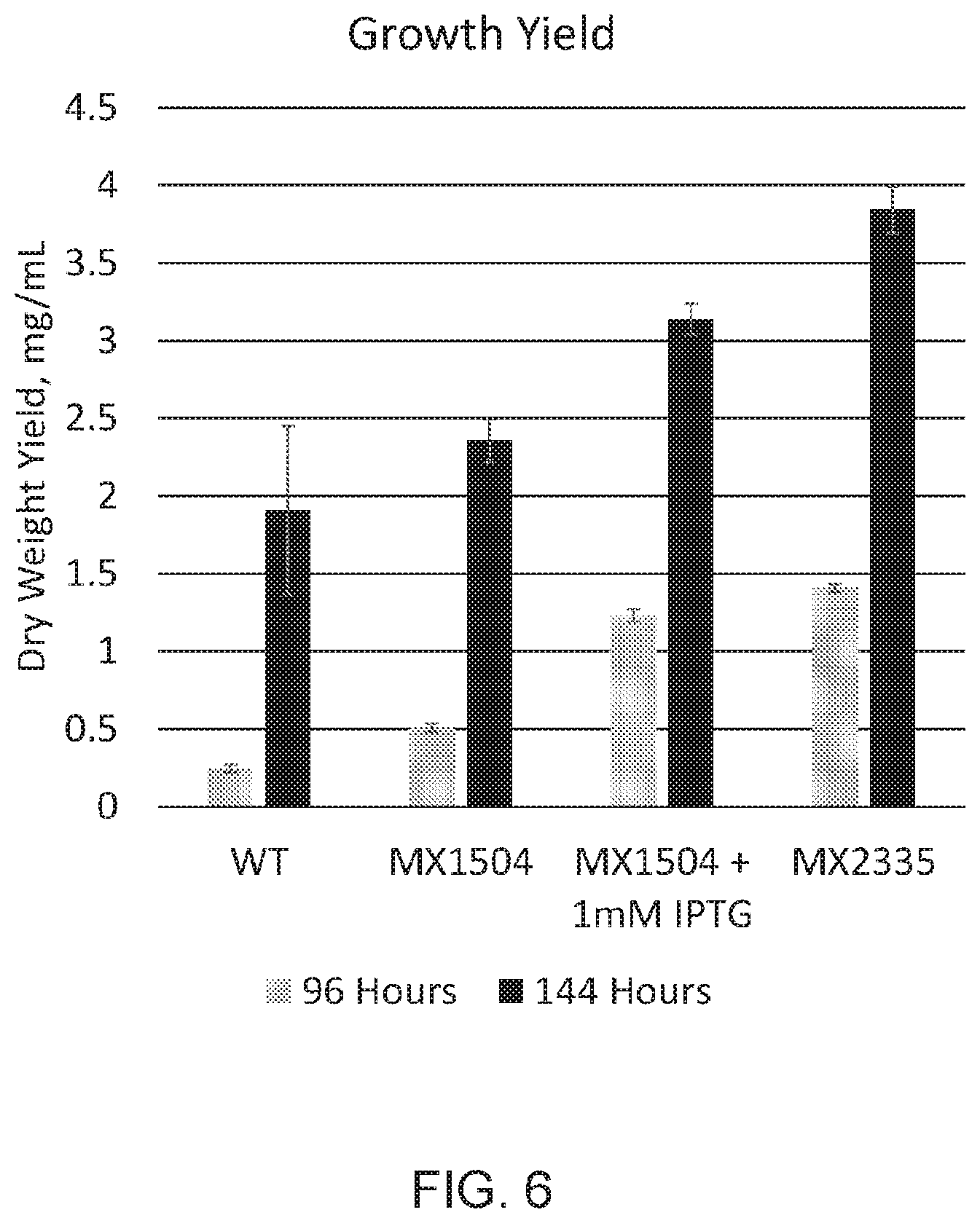
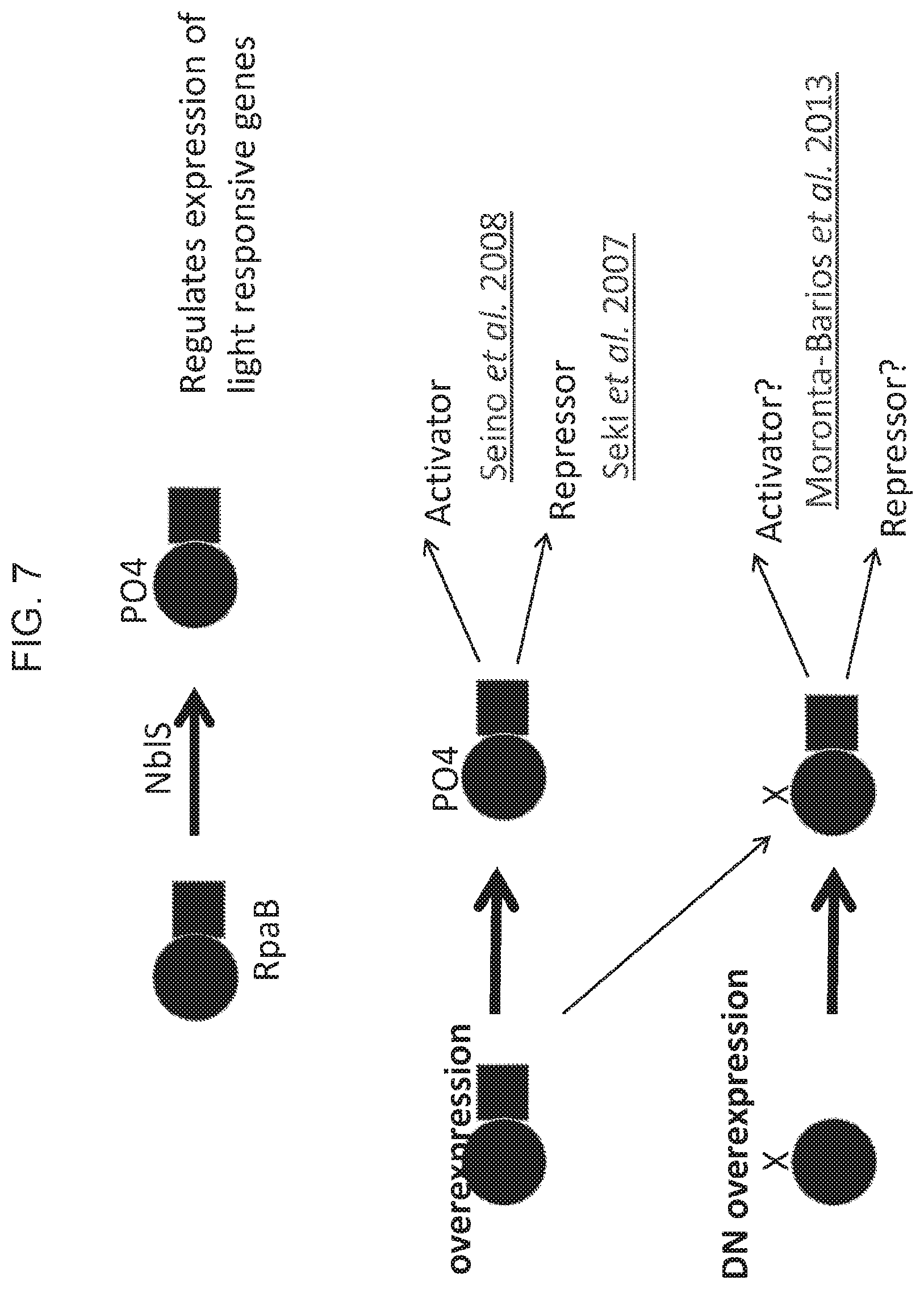

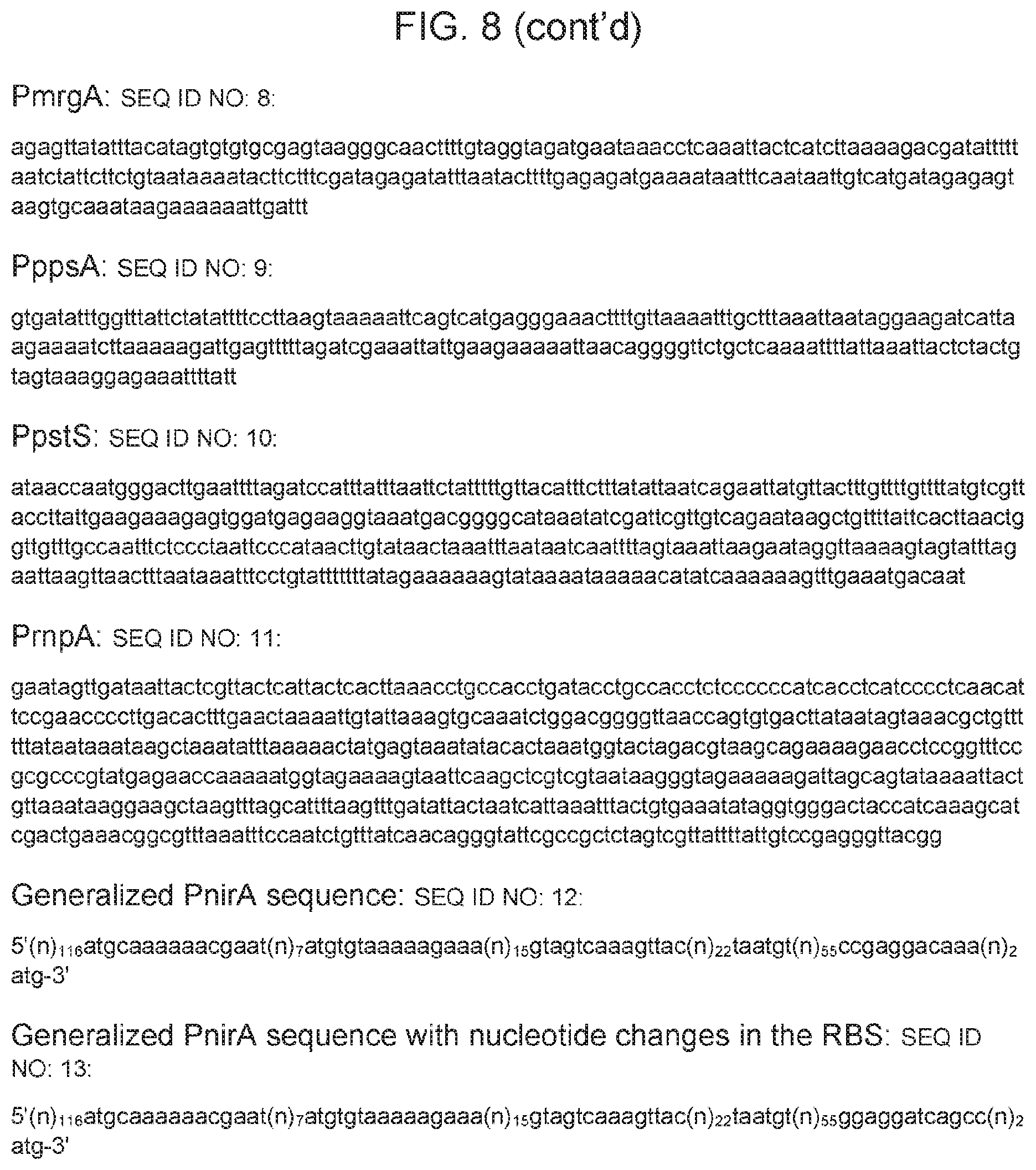

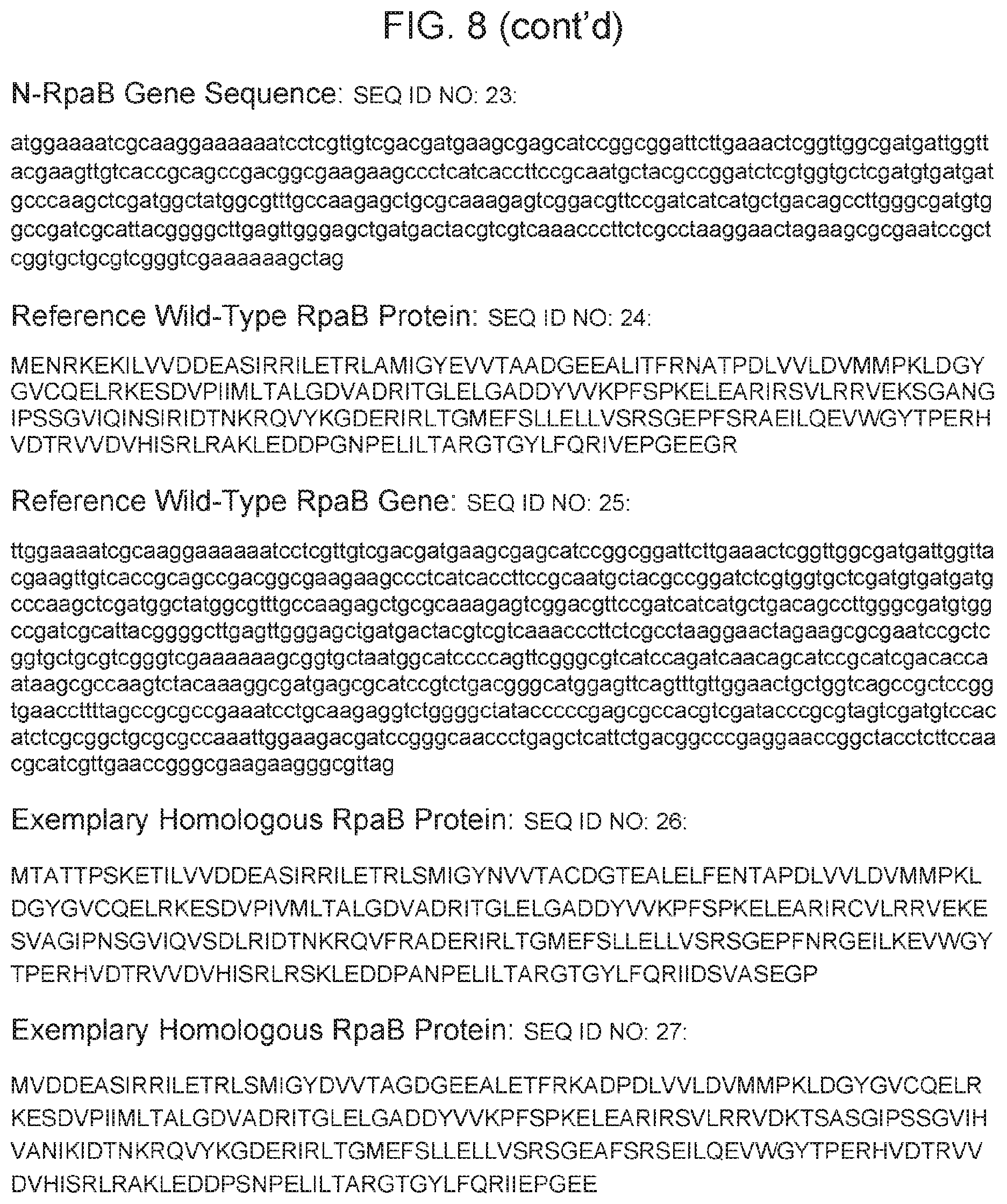
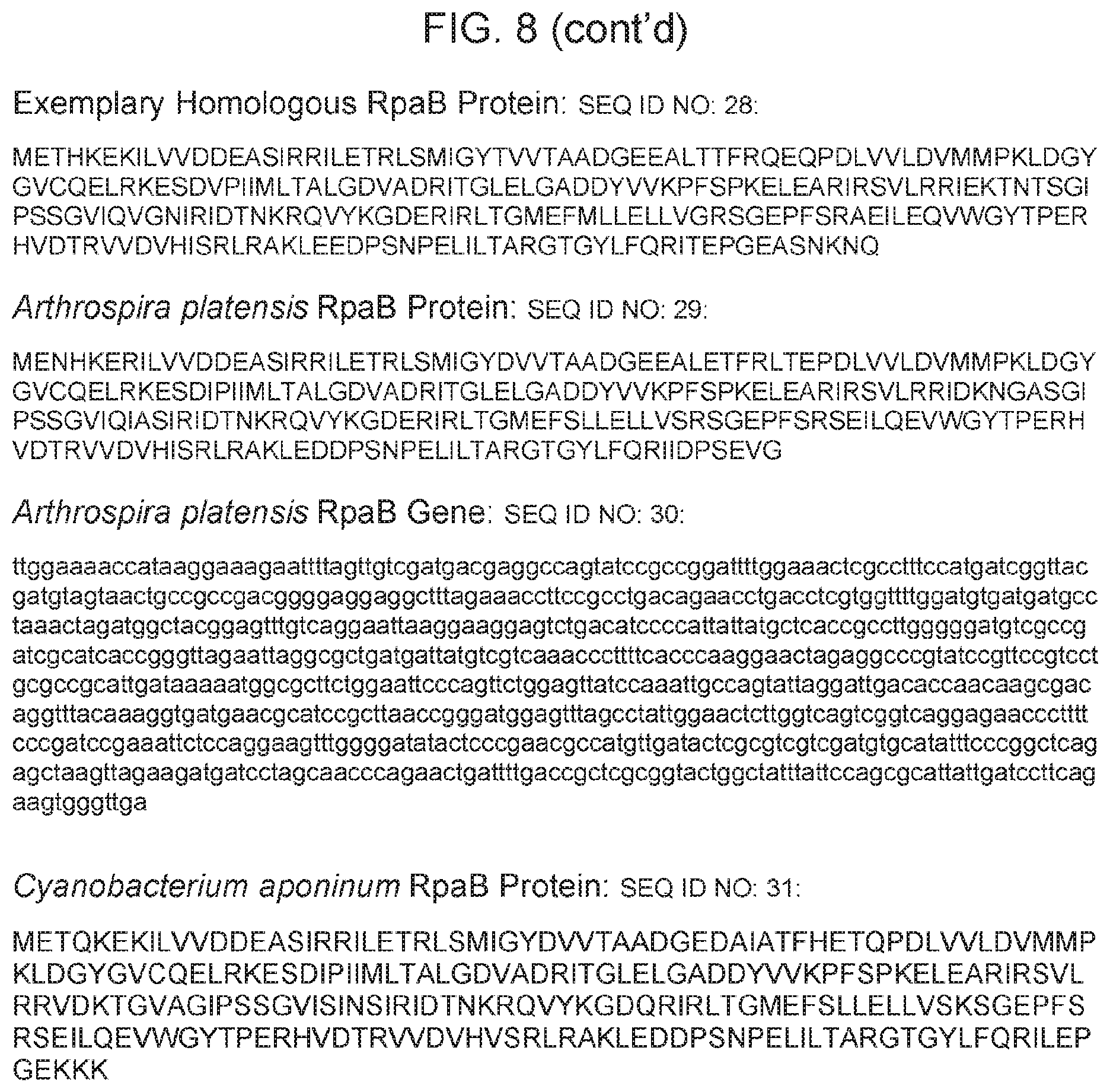
View All Diagrams
| United States Patent Application | 20200392189 |
| Kind Code | A1 |
| ROBERTS; James ; et al. | December 17, 2020 |
MICROORGANISMS WITH INCREASED PHOTOSYNTHETIC CAPACITY
Abstract
Microorganisms with increased photosynthetic capacity are described. Increased photosynthetic capacity is achieved by down-regulating activity of the RpaB pathway. The microorganisms include Cyanobacteria, including genetically-modified Cyanobacteria.
| Inventors: | ROBERTS; James; (Seattle, WA) ; CARRIERI; Damian; (Seattle, WA) ; HEINNICKEL; Mark; (Seattle, WA) | ||||||||||
| Applicant: |
|
||||||||||
|---|---|---|---|---|---|---|---|---|---|---|---|
| Family ID: | 1000005051540 | ||||||||||
| Appl. No.: | 16/874023 | ||||||||||
| Filed: | May 14, 2020 |
Related U.S. Patent Documents
| Application Number | Filing Date | Patent Number | ||
|---|---|---|---|---|
| 15569022 | Oct 24, 2017 | 10654901 | ||
| PCT/US16/28785 | Apr 22, 2016 | |||
| 16874023 | ||||
| 62152506 | Apr 24, 2015 | |||
| Current U.S. Class: | 1/1 |
| Current CPC Class: | C07K 14/195 20130101; C12N 2310/20 20170501; C12N 2800/80 20130101; C12N 15/90 20130101; C12N 9/22 20130101; C12N 15/11 20130101 |
| International Class: | C07K 14/195 20060101 C07K014/195; C12N 9/22 20060101 C12N009/22; C12N 15/11 20060101 C12N015/11; C12N 15/90 20060101 C12N015/90 |
Claims
1. A genetically-modified Cyanobacteria comprising an exogenous nucleotide sequence comprising a SrrA sequence that expresses a SrrA decoy under the control of a promoter that results in down-regulated RpaB pathway activity in the genetically-modified Cyanobacteria as compared to a Cyanobacteria of the same species without the genetic modification.
2. (canceled)
3. The genetically-modified Cyanobacteria of claim wherein the SrrA decoy is selected from: (a) an N-terminal fragment SrrA comprising a phosphor-receiver domain but no DNA binding domain or a non-functional DNA binding domain; (b) an N-terminal fragment of wild type SrrA including Asp64 or a conservative substitution thereof; (c) N-SrrA; or (d) an N-SrrA variant that maintains Asp64 or a conservative substitution thereof.
4-6. (canceled)
7. Tag genetically-modified Cyanobacteria of claim 1 wherein the exogenous nucleotide sequence comprises SEQ ID NO: 33.
8-15. (canceled)
16. Tag genetically-modified Cyanobacteria of claim 1 wherein the promoter is (a) an inducible promoter; or (b) endogenous to the genome of the genetically-modified photosynthetic microorganism.
17-18. (canceled)
19. The genetically-modified Cyanobacteria of claim 1 wherein the genetically-modified photosynthetic microorganism is a Cyanobacteria selected from Synechococcus elongatus, Arthrospira maxima, Arthrospira platensis, and Cyanobacterium aponinum.
20. Tag genetically-modified Cyanobacteria of claim 1 wherein the genetically-modified Cyanobacteria has increased (a) photosynthetic capacity as compared to a Cyanobacteria of the same species without the modification or as compared to a wild type Cyanobacteria of the same species; and/or (b) photosynthetic biomass accumulation from photoautotrophic growth as compared to a Cyanobacteria of the same species without the modification or as compared to a wild type Cyanobacteria of the same species.
21. (canceled)
22. A method of increasing photosynthetic capacity and/or biomass accumulation of a Cyanobacteria comprising modifying the Cyanobacteria to reduce RpaB pathway activity within the Cyanobacteria as compared to a Cyanobacteria of the same species without the modification or as compared to a wild type Cyanobacteria of the same species, wherein the modifying comprises inserting an exogenous nucleotide sequence that expresses an SrrA decoy under the control of a promoter into the Cyanobacteria.
23. (canceled)
24. The method of claim 22 wherein the SrrA decoy is selected from: (a) an N-terminal fragment of SrrA comprising a phosphor-receiver domain but no DNA binding domain or a non-functional DNA binding domain; (b) an N-terminal fragment of wild type SrrA including Asp64 or a conservative substitution thereof; (c) N-SrrA; and (d) an N-SrrA variant that maintains Asp64 or a conservative substitution thereof.
25-27. (canceled)
28. The method of claim 22 wherein the exogenous nucleotide sequence comprises SEQ ID NO: 33.
29-36. (canceled)
37. The method of claim 22 wherein the promoter is (a) an inducible promoter; or (b) endogenous to the genome of the genetically-modified Cyanobacteria.
38-39. (canceled)
40. The method of claim 22 wherein the genetically-modified Cyanobacteria is selected from Synechococcus elongatus, Arthrospira maxima, Arthrospira platensis, and Cyanobacterium aponinum.
41. Tag method of claim 22 wherein the genetically-modified Cyanobacteria has increased (a) photosynthetic capacity as compared to a Cyanobacteria of the same species without the modification or as compared to a wild type Cyanobacteria of the same species; and/or (b) photosynthetic biomass accumulation from photoautotrophic growth as compared to a Cyanobacteria of the same species without the modification or as compared to a wild type Cyanobacteria of the same species.
42. (canceled)
43. A method of increasing photoautotrophic growth of a Cyanobacteria comprising: modifying the Cyanobacteria to reduce RpaB pathway activity within the Cyanobacteria as compared to a Cyanobacteria of the same species without the modification or as compared to a wild type Cyanobacteria of the same species and culturing the modified Cyanobacteria in a liquid culture, thereby increasing photoautotrophic growth of the Cyanobacteria as compared to the Cyanobacteria of the same species without the modification or as compared to the wild type Cyanobacteria of the same species, wherein the modifying comprises inserting an exogenous nucleotide sequence that expresses an SrrA decoy under the control of a promoter into the Cyanobacteria.
44. (canceled)
45. The method of claim 43 wherein the SrrA decoy is selected from: (a) an N-terminal fragment of RpaB or SrrA comprising a phosphor-receiver domain but no DNA binding domain or a non-functional DNA binding domain; (b) an N-terminal fragment of wild type SrrA including Asp64 or a conservative substitution thereof; (c) N-SrrA; and (d) an N-SrrA variant that maintains Asp64 or a conservative substitution thereof.
46-48. (canceled)
49. The method of claim 43 wherein the exogenous nucleotide sequence comprises SEQ ID NO: 33.
50-57. (canceled)
58. Tag method of claim 43 wherein the promoter is (a) an inducible promoter; or (b) endogenous to the genome of the genetically-modified Cyanobacteria.
59-60. (canceled)
61. The method of claim 43 wherein the modified Cyanobacteria is selected from Synechococcus elongatus, Arthrospira maxima, Arthrospira platensis, and Cyanobacterium aponinum.
Description
CROSS REFERENCE TO RELATED APPLICATION
[0001] This application is a continuation of U.S. Non-Provisional patent application Ser. No. 15/569,022 filed Oct. 24, 2017, which is a National Stage Entry of PCT/US2016/028785 filed Apr. 22, 2016 which claims priority to U.S. Provisional Patent Application No. 62/152,506 filed Apr. 24, 2015, the entire contents of which are incorporated by reference herein.
STATEMENT REGARDING SEQUENCE LISTING
[0002] The contents of the text file submitted electronically herewith are incorporated herein by reference in their entirety: a computer readable format copy of the sequence listing (filename: LUBI-003/02US_SubSeqList_ST25.txt, date recorded: Sep. 3, 2020, file size 62.1 kilobytes).
FIELD OF THE DISCLOSURE
[0003] The disclosure provides microorganisms with increased photosynthetic capacity. Increased photosynthetic capacity is achieved by down-regulating activity of the RpaB pathway. The microorganisms include Cyanobacteria, including genetically-modified Cyanobacteria.
BACKGROUND OF THE DISCLOSURE
[0004] Photosynthesis is a process by which solar energy is converted into chemical bond energy. The process of photosynthesis ultimately results in biomass accumulation. Biomass can be used to produce energy, fuel, chemicals, and food. As examples, bioethanol can be produced through alcohol fermentation of saccharified carbohydrate, and biodiesel oil and biojetfuel can be produced from neutral lipids such as waxesters and triglycerides. Further, photosynthesis processes environmental carbon dioxide.
[0005] Photosynthetic crops such as soy beans, corn, and palms have been used as raw materials to produce biofuel and other products. Use of edible crops for such purposes, however, can contribute to food shortages. Non-edible crops such as jatropha and camelina have also been used, but these crops have low yields per unit area.
[0006] Photosynthetic microorganisms similarly can be cultivated to produce energy, fuel, chemicals, and food, as well as to process environmental carbon dioxide. In fact, many of these photosynthetic microorganisms are capable of producing larger amount of oils, fats and carbohydrates than plants.
SUMMARY OF THE DISCLOSURE
[0007] The present disclosure provides modified photosynthetic microorganisms with increased photosynthetic capacity. Increased photosynthetic capacity is achieved by down-regulating activity of the RpaB pathway. Increased photosynthetic capacity can increase total carbon fixation, production of carbon containing compounds, and growth (biomass accumulation), among other uses.
BRIEF DESCRIPTION OF THE FIGURES
[0008] FIG. 1 depicts relative mRNA expression levels of hliA in wild type (e.g., non-modified) and mutant strain MX1296 (Ptrc:N-rpaB) without and with addition of 1 mM IPTG.
[0009] FIG. 2 depicts total photosystem II (PSII) activity of wild type and strain MX1296 grown without or with 1 mM IPTG in medium. Activity was measured by determining the rate of oxygen evolution of whole cells in the presence of para-benzoquinone and potassium ferricyanide, which serve to accept electrons directly from PSII, allowing for PSII oxygen evolution to run at maximal rate, independent of down-stream proteins in the electron transport chain.
[0010] FIG. 3 depicts total electron transport chain activity of wild type and strain MX1296 grown with 1 mM IPTG in medium. Activity was measured by determining the rate of oxygen uptake of whole cells in the presence of methyl viologen and potassium cyanide, which serve to accept electrons directly from photosystem I (PSI), allowing for the entire electron transport chain to run at maximal rate, independent of down-stream proteins in, e.g., carbon fixation or nitrate reduction.
[0011] FIG. 4 depicts total photosystem II (PSII) activity of wild type, strain MX1504 (N-RpaB) with 1 mM IPTG in medium, and strain MX2335 (N-SrrA, without added IPTG). Activity was measured by determining the rate of oxygen evolution of whole cells in the presence of para-benzoquinone and potassium ferricyanide, as described in relation to FIG. 2. MX1504 is an N-RpaB strain built in a different WT background than MX1296. The appropriate WT control for MX1296 is named TGA1-75 where the appropriate WT control for MX1504 is named TGA1-30. This FIG. indicates Ptrc_N-SrrA is effective without induction with IPTG, whereas Ptrc_N-RpaB is more effective with IPTG.
[0012] FIG. 5 depicts growth, as measured by optical density at 750 nm (OD750) of wild type, MX2335, and MX1504 with and without 1 mM IPTG after repeated dilutions with fresh media. Arrows indicate time points at which sample aliquots were removed for dry weight determination, which is given in FIG. 6.
[0013] FIG. 6 depicts growth yields of WT, MX1504 without and with 1 mM IPTG, and MX2335 as determined 96 and 144 hours into the experiment. This growth experiment is the same as that for which data in FIG. 5 is presented. FIGS. 5 and 6 show that photoautotrophic growth of photosynthetic microorganism with down-regulated RpaB pathway activity is increased by repeatedly replacing a volume fraction of the liquid culture with an equivalent volume of new growth media.
[0014] FIG. 7 provides a scheme depicting multiple routes through which RpaB may affect expression of light responsive genes. Overexpression of full-length RpaB may increase the amount of full length, phosphorylated RpaB, which acts as an activator for some genes and a repressor for others. Dephosphorylated RpaB may as act as an activator or repressor for other sets of genes.
[0015] FIG. 8A-J provides exemplary sequences referenced throughout the disclosure.
DETAILED DESCRIPTION
[0016] Photosynthesis is a process by which solar energy is converted into chemical bond energy. The overall reaction of photosynthesis is the light-driven conversion of carbon dioxide and water to glucose and oxygen:
6CO.sub.2+6H.sub.2O.fwdarw.C.sub.6H.sub.12O.sub.6+6O.sub.2
Photosynthesis is observed in plants as well as in bacteria, and blue-green algae.
[0017] The process of photosynthesis ultimately results in biomass accumulation. Biomass can be used to produce energy, fuel, chemicals, and food. As examples, bioethanol can be produced through alcohol fermentation of saccharified carbohydrate, and biodiesel oil and biojetfuel can be produced from neutral lipids such as waxesters and triglycerides. Further, photosynthesis processes environmental carbon dioxide.
[0018] Photosynthesis includes two stages called the light reactions and the dark reactions. The light reactions require the presence of light, while the dark reactions do not depend on direct light exposure. In the light reactions, sunlight is absorbed and drives an electron transport chain that results in the formation of the energy carriers NADPH and ATP, forming O.sub.2 as a by-product. In the dark reactions, a reaction driven by NADPH and ATP reduces CO.sub.2 to glucose.
[0019] Photosystems are large multiprotein complexes that allow, in collaboration with other components, the conversion of captured solar energy into chemical bond energy via the electron transport chain. In general, photosystems are made up of two components: (1) a photochemical reaction center that allows solar energy to be converted into chemical energy, and (2) an antenna complex which captures light energy and transfers it to the photochemical reaction center, resulting in excitation of the photosystem.
[0020] The source of electron replenishment in a photosynthesis system differs according to the reaction center type. In purple non-sulfur bacteria, for example, electrons are cycled back to the reaction center by water-soluble electron carriers, for example, a cytochrome c type protein. In oxygenic photosynthetic organisms, including Cyanobacteria, red and green algae and plants, electron flow is non-cyclic, and occurs in two steps that involve two photosystems: Photosystem I (PSI) and Photosystem II (PSII). In these types of reactions, the deficit of electrons can be replenished by electrons taken from water molecules.
[0021] PSII is a complex composed of proteins, pigments and cofactors, located within thylakoid membranes. PSII splits water into oxygen, protons and electrons. Oxygen is released into the atmosphere and is responsible for maintaining aerobic life on Earth. The electrons are immediately energized by a photon (.lamda.=680 nm) in PSII and passed from one compound to another, all of which compose the electron transport chain. Most of the electron carriers are quinones (Q), plastiquinones (PQ), or cytochromes (Cyt).
[0022] More particularly, the process of electron transfer in PSII includes the following steps: upon illumination, a P.sub.680 chlorophyll is photoexcited. The photoexcited P.sub.680 transfers electrons via intermediate cofactors called pheophytin a and plastoquinone A (PQ, Q.sub.A) in order to finally doubly reduce a transiently bound PQ molecule (Q.sub.B). Q.sub.B.sup.2- is protonated and released from the reaction center into the thylakoid membrane. The redox active cofactors that enable electron transfer from water to the secondary quinone acceptor Q.sub.B are mainly embedded within two proteins called D1 and D2. Under normal conditions of illumination, the D1 protein of the reaction center core is irreversibly damaged over time and is replaced in a fashion that preserves the integrity of the PSII complex.
[0023] A second input of light energy (.lamda.=700 nm) occurs during PSI and the energized electrons are passed to the terminal electron carrier, ferredoxin (Fd). Reduced Fd can serve as an electron donor to the ferredoxin-NADP*-reductase (FNR) enzyme. In a parallel process (photophosphorylation), H.sup.+ are released where they generate a H.sup.+ gradient that is used to drive ATP production via ATP synthase. NADPH and ATP are subsequently used to produce starch and other forms of energy storage biomass.
[0024] Cyanobacteria are the only group of organisms that are able to reduce nitrogen and carbon in aerobic conditions. The water-oxidizing photosynthesis is accomplished by coupling the activity of PSII and PSI (the Z-scheme). In anaerobic conditions, Cyanobacteria are also able to use only PSI (i.e., cyclic photophosphorylation) with electron donors other than water (e.g., hydrogen sulfide, thiosulphate, or molecular hydrogen), similar to purple photosynthetic bacteria. Furthermore, Cyanobacteria share an archaeal property--the ability to reduce elemental sulfur by anaerobic respiration in the dark. The Cyanobacterial photosynthetic electron transport system shares the same compartment as the components of respiratory electron transport. Typically, the plasma membrane contains only components of the respiratory chain, while the thylakoid membrane hosts both respiratory and photosynthetic electron transport.
[0025] Phycobilisomes are complexes of phycobiliproteins and colorless polypeptides which function as the major light harvesting antennae in blue-green and red algae. The phycobilisome components (phycobiliproteins) are responsible for the blue-green pigmentation of most Cyanobacteria. Color variations are mainly due to carotenoids and phycoerythrins, which may provide the cells with a red-brownish coloration. In some Cyanobacteria, the color of light influences the composition of phycobilisomes. In green light, the cells accumulate more phycoerythrin, whereas in red light they produce more phycocyanin. Thus, the bacteria appear green in red light and red in green light. This process is known as complementary chromatic adaptation and represents a way for the cells to maximize the use of available light for photosynthesis.
[0026] As suggested, photosynthetic organisms must cope with environmental changes in their habitats, such as fluctuations in incident light. Changes in light quantity or quality (i.e., spectral composition) can result in imbalanced excitation of PSII and PSI and decrease the efficiency of photosynthetic light reactions. Photosynthetic organisms can counteract such excitation imbalances with changes in gene expression.
[0027] OmpR response regulators are response regulators wherein their phosphorylation promotes specific DNA binding by enhancing dimer or oligomer formation. In some cases, dephosphorylated OmpR response regulators have >10-fold lower affinity to their binding sites than phosphorylated forms. RpaA and RpaB are two types of OmpR response regulators.
[0028] The NblS kinase (NblS)-RpaB signaling pathway is the most conserved two-component system in Cyanobacteria. This pathway is involved in regulation of circadian-based changes in gene expression, regulation of photosynthesis, and acclimatization to a variety of environmental conditions.
[0029] The full length protein RpaB has an N-terminal phospho-receiver domain and a C-terminal DNA binding domain. The C-terminal domain is responsible for binding promoter regions such as HLR1 (high light-responsive element 1) and repressing transcription of downstream genes when RpaB is phosphorylated (at the N-terminal side of the protein). N-terminal fragments of the RpaB protein can have a phospho-receiver domain but no known DNA binding domain. The phosphorylatable residue of RpaB is thought to be Asp56.
[0030] With regard to regulation of circadian-based changes in gene expression, RpaB binds the KaiBC promoter and represses transcription of kaiBC and other target genes during subjective night (e.g., .about.LL0). During subjective day (e.g., .about.LL4-8), RpaB is released from these promoters, likely through the effects of RpaA, to allow transcription of the repressed genes.
[0031] As stated, with regard to regulation of photosynthesis, RpaB binds to the promoter HLR1. The HLR1 motif includes two direct repeats of SEQ ID NO: 1 separated by two nucleotides. When bound to HLR1, RpaB represses transcription of genes, such as rpoD3 and hliA. Under high light stress, RpaB is dephosphorylated in a process mediated by NblS to allow translation of these genes.
[0032] Decreasing the copy number of RpaB genes in Cyanobacteria decreases energy transfer from phycobilisomes to PSII and increases energy transfer from phycobilisomes to PSI. Thus, it is been suggested that RpaA and RpaB regulate expression of proteins involved in the coupling of phycobilisomes to PSI or PSII. With regard to acclimation to other environmental conditions, RpaB has been shown to modulate transcription of genes in response to cold shock as well as osmotic, salt and oxidative stresses. In spite of the importance of the NblS-RpaB signaling pathway, actual input signals and output responses remain largely unknown.
[0033] SrrA is homologous to RpaB, but has distinctly different regulatory roles in Synechococcus elongatus PCC 7942 and is coded by a non-essential gene. SrrA is also known as Crr71. RpaB and SrrA are the only known substrates of the NblS kinase.
[0034] The current disclosure provides microorganisms with increased photosynthetic capacity. Increased photosynthetic capacity can be achieved by down-regulating activity of the RpaB pathway. Numerous mechanisms to down-regulate activity of the RpaB pathway are described herein. Particular examples include expression of RpaB decoys, expression of SrrA decoys and/or direct down-regulation of NblS, through, for example, CRISPRi.
[0035] Aspects of the current disclosure are now described in more detail.
[0036] Photosynthetic Microorganisms. Photosynthetic microorganisms of the disclosure may be any type of organism capable of performing photosynthesis wherein the microorganism has been modified to have down-regulated RpaB pathway activity.
[0037] Exemplary photosynthetic microorganisms that are either naturally photosynthetic or can be engineered to be photosynthetic include bacteria (e.g., Cyanobacteria); fungi; archaea; protists; eukaryotes, such as a green algae; and animals such as plankton, planarian, and amoeba. Examples of naturally occurring photosynthetic microorganisms include Arthrospira (Spirulina) maxima, Arthrospira (Spirulina) platensis, Dunaliella salina, Botycoccus braunii, Chloella vulgaris, Chlorella pyrenoidosa, Serenastrum capricomutum, Scenedesmus auadricauda, Porphyridium cruentum, Scenedesmus acutus, Dunaliella sp., Scenedesmus obliquus, Anabaenopsis, Aulosira, Cylindrospermum, Synechoccus sp., Synechocystis sp., Cyanobacterium aponinum, and Tolypothrix sp.
[0038] Cyanobacteria, also known as blue-green algae, blue-green bacteria, or Cyanophyta, is a phylum of bacteria that obtain their energy through photosynthesis. As stated, Cyanobacteria can produce metabolites, such as carbohydrates, proteins, lipids and nucleic acids, from CO.sub.2, water, inorganic salts and light. Any Cyanobacteria may be used according to the disclosure. In particular embodiments the Cyanobacteria must be genetically manipulatable, e.g., permissible to the introduction and expression of exogenous genetic material (e.g., exogenous nucleotide sequences).
[0039] Cyanobacteria include both unicellular and colonial species. Colonies may form filaments, sheets or even hollow balls. Some filamentous colonies show the ability to differentiate into several different cell types, such as vegetative cells, the normal, photosynthetic cells that are formed under favorable growing conditions; akinetes, the climate-resistant spores that may form when environmental conditions become harsh; and thick-walled heterocysts, which contain the enzyme nitrogenase, vital for nitrogen fixation.
[0040] Examples of Cyanobacteria that may be utilized and/or genetically modified according to the methods described herein include Chroococcales Cyanobacteria from the genera Arthrospira, Aphanocapsa, Aphanothece, Chamaesiphon, Chroococcus, Chroogloeocystis, Coelosphaenum, Crocosphaera, Cyanobacterum, Cyanobium, Cyanodictyon, Cyanosarcina, Cyanothece, Dactylococcopsis, Gloecapsa, Gloeothece, Merismopedia, Microcystis, Radiocystis, Rhabdoderma, Snowella, Synychococcus, Synechocystis, Thermosenechococcus, and Woronichinia; Nostacales Cyanobacteria from the genera Anabaena, Anabaenopsis, Aphanizomenon, Aulosira, Calothrix, Coleodesmium, Cyanospira, Cylindrospermosis, Cylindrospermum, Fremyella, Gleotrichia, Microchaete, Nodularia, Nostoc, Rexia, Richelia, Scytonema, Sprirestis, and Toypothrix; Oscillatoriales Cyanobacteria from the genera Arthrospira, Geitlerinema, Halomicronema, Halospirulina, Katagnymene, Leptolyngbya, Limnothrix, Lyngbya, Microcoleus, Oscillatoria, Phormidium, Planktothricoides, Planktothrix, Plectonema, Pseudoanabaena/Limnothrix, Schizothix, Symploca, Trichodesmium, and Tychonema; Pleurocapsales Cyanobacteria from the genera Chroococcidiopsis, Dermocarpa, Dermocarpella, Myxosarcina, Pleurocapsa, Stanieria, and Xenococcus; Prochlorophytes Cyanobacteria from the genera Prochloron, Prochlorococcus, and Prochlorothrix; and Stigonematales Cyanobacteria from the genera Capsosira, Chlorogeoepsis, Fischerella, Hapalosiphon, Mastigocladopsis, Nostochopsis, Stigonema, Symphyonema, Symphonemopsis, Umezakia, and Westiellopsis. In particular embodiments, the Cyanobacteria is from the genus Synechococcus, including Synechococcus bigranulatus, Synechococcus elongatus, Synechococcus leopoliensis, Synechococcus lividus, Synechococcus nidulans, and Synechococcus rubescens. Cyanobacteria Thermosynechococcus, and Gloeobacter can also be used.
[0041] More particular embodiments include or utilize Anabaena sp. strain PCC 7120, Synechocystis sp. strain PCC 6803, Nostoc muscorum, Nostoc ellipsosporum, or Nostoc sp. strain PCC 7120. In particular embodiments, the Cyanobacteria is Synechococcus elongatus sp. strain PCC 7942. Additional examples of Cyanobacteria that may utilized include Synechococcus sp. strains WH7803, WH8102, WH8103 (typically genetically modified by conjugation), Baeocyte-forming Chroococcidiopsis spp. (typically modified by conjugation/electroporation), non-heterocyst-forming filamentous strains Planktothrix sp., Plectonema boryanum M101 (typically modified by electroporation), Heterocyst-forming Anabaena sp. ATCC 29413 (typically modified by conjugation), Tolypothrix sp. strain PCC 7601 (typically modified by conjugation/electroporation) and Nostoc punctiforme strain ATCC 29133 (typically modified by conjugation/electroporation).
[0042] In particular embodiments, the Cyanobacteria may be, e.g., a marine form of Cyanobacteria or a fresh water form of Cyanobacteria. Examples of marine forms of Cyanobacteria include Synechococcus WH8102, Synechococcus RCC307, Synechococcus NKBG 15041c, and Trichodesmium. Examples of fresh water forms of Cyanobacteria include S. elongatus PCC 7942, Synechocystis PCC6803, Plectonema boryanum, Cyanobacterum aponinum, and Anabaena sp.
[0043] In other embodiments, a genetically modified Cyanobacteria may be capable of growing in brackish or salt water. When using a fresh water form of Cyanobacteria, the overall net cost of their use will depend on both the nutrients required to grow the culture and the price for freshwater. One can foresee freshwater being a limited resource in the future, and in that case it would be more cost effective to find an alternative to freshwater. Two such alternatives include: (1) the use of waste water from treatment plants; and (2) the use of salt or brackish water.
[0044] Salt water in the oceans can range in salinity between 3.1% and 3.8%, the average being 3.5%, and this is mostly, but not entirely, made up of sodium chloride (NaCl) ions. Brackish water, on the other hand, has more salinity than freshwater, but not as much as seawater. Brackish water contains between 0.5% and 3% salinity, and thus includes a large range of salinity regimes and is therefore not precisely defined. Waste water is any water that has undergone human influence. It includes liquid waste released from domestic and commercial properties, industry, and/or agriculture and can encompass a wide range of possible contaminants at varying concentrations.
[0045] There is a broad distribution of Cyanobacteria in the oceans, with Synechococcus filling just one niche. Specifically, Synechococcus sp. PCC 7002 (formerly known as Agmenellum quadruplicatum strain PR-6) grows in brackish water, is unicellular and has an optimal growing temperature of 38.degree. C. While this strain is well suited to grow in conditions of high salt, it will grow slowly in freshwater. In particular embodiments, the disclosure includes the use of a Cyanobacteria PCC 7942, altered in a way that allows for growth in either waste water or salt/brackish water. A Synechococcus elongatus PCC 7942 mutant resistant to sodium chloride stress has been described (Bagchi et al., Photosynth Res., 2007; 92:87-101), and a genetically modified S. elongatus PCC 7942 tolerant of growth in salt water has been described (Waditee et al., PNAS, 2002; 99:4109-4114). Salt water tolerant Cyanobacteria may also be prepared as described in the Examples of U.S. Pat. No. 8,394,614. According to the disclosure a salt water tolerant strain is capable of growing in water or media having a salinity in the range of 0.5% to 4.0% salinity, although it is not necessarily capable of growing in all salinities encompassed by this range. In particular embodiments, a salt tolerant strain is capable of growth in water or media having a salinity in the range of 1.0% to 2.0% salinity. In particular embodiments, a salt water tolerant strain is capable of growth in water or media having a salinity in the range of 2.0% to 3.0% salinity.
[0046] Down-regulating activity of the RpaB pathway can be achieved through various mechanisms. Down-regulation of the RpaB pathway can be achieved by, for example, decreasing the presence or activity of a protein or gene in the pathway that promotes pathway activation (e.g., full length RpaB, SrrA or NblS). Down-regulation of the RpaB pathway can also be achieved by, for example, increasing the presence or activity of a protein or gene in the pathway that inhibits pathway activation (e.g., a pathway phosphatase or a pathway decoy that dampens effective activity of other active pathway members (e.g., a wild-type RpaB or SrrA sequence with the phospho-receiver domain substituted with amino acids that are not phosphorylatable (a non-conservative substitution) or inhibitory CRISPRi expression products).
[0047] A decrease in presence or activity of a protein or gene in a pathway can be caused by, for example, reduction of a gene's copy number, insertion of a foreign set of base pairs into a gene (e.g., into a coding region), deletion of any portion of the gene (e.g., of all or part of a coding region), substitution of base pairs within the gene (e.g., into a coding region), interference with an encoded RNA transcript, the presence of antisense sequences that interfere with transcription or translation of the gene; translation of an incomplete protein; incorrect folding of a protein; expression of an unstable protein; reduced transcription of a gene; incomplete transcription of a gene, or by any other activity resulting in reduced presence, expression or activity of a protein in the pathway that promotes pathway activation.
[0048] An increase in presence or activity of a protein or gene in a pathway can be caused by, for example, an increase in a gene's copy number, introduction of a strong and/or inducible promoter, mechanisms to prevent degradation of encoding nucleotides or expressed proteins, or other mechanisms.
[0049] In particular embodiments, the RpaB pathway is down-regulated by expressing an RpaB decoy and/or an SrrA decoy. Without being bound by theory, expressed decoys will compete with full length wild type RpaB and/or Srra for phosphorylation (e.g., on Asp56 or Asp64, respectively). This competition will result in a net decrease in the phosphorylation of wild type RpaB proteins, and thus up-regulation of RpaB-regulated gene expression. This approach can be referred to as a "dominant interfering" phenotype as the modified photosynthetic microorganism is expected to have a lower degree of transcriptional repression at HLR1. In other words, a constitutive "high light" (or deprivation of certain nutrient) phenotype can be created. Thus, in particular embodiments, down-regulation of the RpaB pathway can be evidenced by the up-regulation of an RpaB-regulated gene, such as hliA (see FIG. 1) and RpoD3.
[0050] In particular embodiments, the RpaB and/or SrrA decoy is a protein that will compete with wild-type RpaB for phosphorylation. The term "wild-type" can be used interchangeably with "naturally occurring" and refers to a gene or gene product (e.g., transcript or protein) that has the characteristics of that gene or gene product when isolated from a naturally occurring source. A wild type gene or gene product is that which is most frequently observed in a population and is thus arbitrarily designated the "normal" or "wild-type" form of the gene or gene product.
[0051] In particular embodiments, the RpaB decoy is a protein that can be phosphorylated by one or more kinases capable of phosphorylating wild-type RpaB. In particular embodiments, the RpaB decoy is a protein that can be phosphorylated by NblS. In particular embodiments, the RpaB decoy includes a wild-type RpaB phospho-receiver domain. In particular embodiments, the RpaB decoy includes a wild-type RpaB phospho-receiver domain and 1, 2, 3, 4, or 5 wild-type amino acid residues flanking this position. In these embodiments, the phospho-receiver domain includes Asp56. In particular embodiments, the RpaB decoy includes a wild-type RpaB phospho-receiver domain and does not include a wild-type DNA binding domain or includes a non-functional DNA binding domain. In particular embodiments, the RpaB decoy includes an N-terminal fragment of the wild-type RpaB, including the wild-type phospho-receiver domain but does not include a DNA binding domain or includes a non-functional DNA binding domain. In particular embodiments, the wild-type phospho-receiver domain includes Asp56. As indicated below, this Asp can be replaced with phospho-receiver domain conservative substitutions such as Glu, Ser and Thr. In particular embodiments, the RpaB decoy can be N-RpaB (SEQ ID NO: 2).
[0052] In particular embodiments, a gene from Synechococcus elongatus PCC 7942 that encodes a RpaB decoy can be placed behind an inducible promoter in a neutral site (e.g., NS1) to drive expression of the RpaB decoy. In particular embodiments, the gene can contain the first 378 base pairs of the gene Synpcc7942_1453 (full length gene is 735 base pairs), followed by a stop codon, and can be placed behind an IPTG inducible promoter in a neutral site (e.g., NS1 or NS2) to drive expression of N-RpaB (SEQ ID NO: 2). This gene and associated nucleotide sequence is represented by SEQ ID NO: 23. In this sequence, the wild type start codon has been modified from TTG to ATG.
[0053] Overexpression of the N-RpaB protein fragment conferred a transcriptional response similar to one observed when cells are stressed with, e.g. high light or deprivation of certain nutrients. For example, the mRNA expression level of the gene hliA, which is known to increase under high light, increases 5-fold relative to wild type or uninduced mutant levels, as shown in FIG. 1.
[0054] When the strain with this mutation is grown in the presence of 1 mM IPTG, it has a higher photosystem II activity and higher photosynthetic electron transport capacity than wild type. Photosystem II activity is measured by determining the rate of oxygen evolution of whole cells in the presence of para-benzoquinone and potassium ferricyanide, which serve to accept electrons directly from PSII, allowing for PSII oxygen evolution to run at its maximal rate, independent of down-stream proteins in the electron transport chain. FIG. 2 shows the maximal oxygen evolution capacity of PSII in cells with induction of the RpaB protein fragment (denoted N-RpaB) with 1 mM IPTG.
[0055] Electron transport activity is measured by determining the rate of oxygen consumption of whole cells under bright light illumination in the presence of methyl viologen and potassium cyanide. The magnitude of the measured rate of oxygen uptake is equal to the total capacity of the cell's oxygen evolution rate when electrons are passed through its entire electron transport chain via photosynthesis. This increased photosynthetic capacity can increase total carbon fixation, production of carbon containing compounds, and growth (biomass accumulation). Overexpression of the same 378 base pair gene fragment under other strong promoters confers such an increase in electron transport activity. More particularly, FIG. 3 shows the maximal electron transport chain activity of cells with and without induced production of N-RpaB. Without being bound by theory, the increase in PSII capacity allows for increased total electron transport chain activity in Synechococcus.
[0056] SEQ ID NO: 24 provides a reference wild-type RpaB protein sequence and SEQ ID NO: 25 provides a reference wild-type RpaB gene sequence. These reference sequences are derived from Synpcc7942_1453. SEQ ID NO: 29 provides a reference wild-type RpaB protein sequence and SEQ ID NO: 30 provides a reference wild-type RpaB gene sequence derived from Arthrospira platensis (NIES39_K03840). SEQ ID NO: 31 provides a reference wild-type RpaB protein sequence and SEQ ID NO: 32 provides a reference wild-type RpaB gene sequence derived from Cyanobacterium aponinum (WP_015219361.1). Additional homologous protein and gene sequences can also serve as reference wild-type RpaB protein sequences for the purposes of this disclosure. Exemplary homologous reference RpaB protein sequences include SEQ ID NOs: 26, 27 and 28 derived from Synechococcus sp. (WH 8102), Tolypothrix sp. (PCC 7601), and Thermosynechococcus sp. (NK55a) respectively.
[0057] In particular embodiments, the SrrA decoy is a protein that can be phosphorylated by one or more kinases capable of phosphorylating wild-type SrrA. In particular embodiments, the SrrA decoy is a protein that can be phosphorylated by NblS. In particular embodiments, the SrrA decoy includes a wild-type SrrA phospho-receiver domain. In particular embodiments, the SrrA decoy includes a wild-type SrrA phospho-receiver domain and 1, 2, 3, 4, or 5 wild-type amino acid residues flanking this position. In these embodiments, the phospho-receiver domain includes Asp64. In particular embodiments, the SrrA decoy includes a wild-type SrrA phospho-receiver domain and does not include a wild-type DNA binding domain or includes a non-functional DNA binding domain. In particular embodiments, the SrrA decoy includes an N-terminal fragment of the wild-type RpaB, including the wild-type phospho-receiver domain but does not include a DNA binding domain or includes a non-functional DNA binding domain. In particular embodiments, the wild-type phospho-receiver domain includes Asp64. As indicated below, this Asp can be replaced with phospho-receiver domain conservative substitutions such as Glu, Ser and Thr. In particular embodiments, the SrrA decoy can include SEQ ID NO: 34. Non-functional DNA binding domains fail to bind DNA or bind DNA, but result in a significantly reduced amount of resulting gene expression as compared to a relevant control.
[0058] In particular embodiments, a gene from Synechococcus elongatus PCC 7942 that encodes a SrrA decoy can be placed behind a promoter in a neutral site (e.g., NS1 or NS2) to drive expression of the SrrA decoy. MX2335, Ptrc_N-SrrA, is a strain expressing the first 404 base pairs of gene Synpcc7942_2416 (SEQ ID NO; 33; full length gene is 768 base pairs (SEQ ID NO: 35)), followed by a stop codon, placed behind a constitutive promoter in neutral site 2 (NS2) to drive expression of N-SrrA (SEQ ID NO: 34). In these embodiments, Ptrc is referred to as a constitutive promoter because no addition of IPTG is necessary for low-level induction of expression, and low-level expression of N-SrrA is sufficient to produce the decoy phenotype with increased photosynthetic capacity (FIG. 4). The full length Synechococcus elongatus PCC 7942 SrrA is provided as SEQ ID NO: 36.
[0059] SEQ ID NO: 38 provides a reference wild-type SrrA protein sequence and SEQ ID NO: 37 provides a reference wild-type SrrA gene sequence derived from Arthrospira platensis NIES-39. Additional homologous protein and gene sequences can also serve as reference wild-type SrrA sequences for the purposes of this disclosure. An additional exemplary homologous reference SrrA protein sequences includes SEQ ID NO: 40 and an additional exemplary homologous reference SrrA gene sequence includes SEQ ID NO: 39 derived from Procholorcoccus marinus SS120.
[0060] Based on the teachings of this disclosure, one of ordinary skill in the art can determine additional homologous sequences, relevant phospho-receiver domains, DNA binding domains, and encoding nucleotide sequences to generate functioning decoys to down-regulate RpaB pathway activity in photosynthetic microorganisms.
[0061] The RpaB pathway can also be down-regulated by directly down-regulating NblS. As indicated previously, there are numerous ways to achieve down-regulation of a protein. In particular embodiments, NblS can be down-regulated utilizing CRISPRi technology. For example, the minimal CRISPR system from Streptococcus pyogenes needed for building an NblS CRISPRi strain requires only a single gene encoding a Cas9 protein and two RNAs, a mature CRISPR RNA (crRNA) and a partially complementary trans-acting RNA (tracrRNA), to target and cleave foreign DNA elements in a sequence-specific manner. In particular embodiments, the Cas9 protein can be modified by two point mutations (D10A and H841A) at the active sites to obtain the dCas9 protein that can bind to DNA (guided by a complementary RNA sequence) without cleaving it, potentially interfering with transcriptional initiation or elongation (Jinek et al., 2012, A programmable dual-RNA-guided DNA endonuclease in adaptive bacterial immunity. Science (New York, N.Y.), 337(6096), 816-21. doi:10.1126/science.1225829). Another modification can include replacement of the two original RNAs in the native system (crRNA and tracrRNA) with an engineered small guide RNA (sgRNA) (Jinek et al., 2012; Mali et al., 2013, RNA-guided human genome engineering via Cas9. Science, 823. doi:10.1126/science.1232033).
[0062] In particular embodiments, guide RNA designed and used for transcriptional interference of the NblS gene in Synechococcus elongatus PCC7942 can be encoded by the sequence: ttggcaacaactgcgcgata (SEQ ID NO: 41) resulting in the sequence uuggcaacaacugcgcgaua (SEQ ID NO: 42). This sequence can be expressed/placed behind a promoter such as a pTac promoter, which is inducible by addition of 1 mM IPTG to the growth medium. An exemplary DNA sequence to drive expression of the Cas9 protein is provided as SEQ ID NO: 43 which encodes SEQ ID NO: 44. In particular embodiments, its expression can be driven by a promoter such as the pBAD promoter, which is inducible by addition of 0.02% arabinose to the growth medium.
[0063] Embodiments disclosed herein do not utilize RpaB knockouts, as complete RpaB knockout is lethal. Accordingly, embodiments disclosed herein utilize down-regulation, rather than elimination, of RpaB pathway activity.
[0064] As is understood by one of ordinary skill in the art, "up-regulation" and "down-regulation" of gene and protein expression as well as RpaB pathway activity can be measured against a relevant control condition including relative to the expression or activity of an unmodified photosynthetic microorganism or a photosynthetic microorganism having a different modification (such as a modification un-related to decreasing activity of the RpaB pathway).
[0065] In particular embodiments, conclusions are drawn based on whether a measure is statistically significantly different or not statistically significantly different from a reference level of a relevant control. A measure is not statistically significantly different if the difference is within a level that would be expected to occur based on chance alone. In contrast, a statistically significant difference or increase is one that is greater than what would be expected to occur by chance alone. Statistical significance or lack thereof can be determined by any of various systems and methods used in the art. An example of a commonly used measure of statistical significance is the p-value. The p-value represents the probability of obtaining a given result equivalent to a particular datapoint, where the datapoint is the result of random chance alone. A result is often considered significant (not random chance) at a p-value less than or equal to 0.05.
[0066] As indicated, various mechanisms to down-regulate the RpaB pathway rely on inserting exogenous nucleotide sequences into the genome of the selected photosynthetic microorganism. "Exogenous" refers to a nucleotide sequence that does not naturally occur in the particular position of the genome of the wild type photosynthetic microorganism where it is inserted, but is inserted at the particular position by molecular biological techniques. Examples of exogenous nucleotide sequences include vectors, plasmids, and/or man-made nucleic acid constructs.
[0067] As used herein, nucleotide sequences can include foreign sets of base pairs and genes encoding proteins or RNA (e.g., RpaB decoys, N-RpaB, SrrA decoys, N-SrrA, guide RNA, Cas9 or variants thereof, etc.). In relation to genes, this term includes various sequence polymorphisms, mutations, and/or sequence variants. In particular embodiments, the sequence polymorphisms, mutations, and/or sequence variants do not affect the function of the encoded protein or RNA. Genes may include not only coding sequences but also non-coding regulatory regions such as promoters, enhancers, and termination regions. The term further can include all introns and other DNA sequences spliced from the mRNA transcript, along with variants resulting from alternative splice sites. Nucleic acid sequences encoding proteins can be DNA or RNA that directs the expression of protein or RNA. These nucleic acid sequences may be a DNA strand sequence that is transcribed into RNA or an RNA sequence that is translated into protein. The nucleic acid sequences include both the full-length nucleic acid sequences as well as non-full-length sequences derived from the full-length protein or RNA. The sequences can also include degenerate codons of the native sequence or sequences that may be introduced to provide codon preference. Thus, a gene refers to a unit of inheritance that occupies a specific locus on a chromosome and consists of transcriptional and/or translational regulatory sequences and/or a coding region and/or non-translated sequences (i.e., introns, 5' and 3' untranslated sequences).
[0068] A coding sequence is any nucleotide sequence that contributes to the code for the protein or RNA product of a gene. A non-coding sequence thus refers to any nucleic acid sequence that does not contribute to the code for the protein or RNA product of a gene.
[0069] In addition to particular sequences provided, gene sequences to encode for and/or interfere with proteins described herein, as well as associated RNA are available in publicly available databases and publications.
[0070] A "vector" is a nucleotide molecule, (e.g., a DNA molecule) derived, for example, from a plasmid, bacteriophage, yeast or virus, into which a nucleotide sequence (e.g., a gene) can be inserted or cloned. A vector preferably contains one or more unique restriction sites and can be capable of autonomous replication in a photosynthetic microorganism. Autonomously replicating vectors include vectors that exist as extra-chromosomal entities, the replication of which is independent of chromosomal replication, e.g., a linear or closed circular plasmid, an extra-chromosomal element, a mini-chromosome, or an artificial chromosome. Vectors can also be integrable with the genome of the photosynthetic microorganism. This type of vector is replicated together with the chromosome(s) into which it has been integrated. Such a vector may include specific sequences that allow recombination into a particular, desired site of the host chromosome. Vectors used within the current disclosure can include any mechanism for assuring self-replication. A vector can include a single vector (or plasmid), two or more vectors, three or more vectors, etc. which together contain the total DNA required for expression of a nucleotide sequence of interest to be expressed in the photosynthetic microorganism.
[0071] As indicated, coding sequences to be expressed are operably linked to a promoter, that is, they are placed under the regulatory control of a promoter, which then controls the transcription and optionally the translation of the coding sequence. In the construction of heterologous promoter/structural coding sequence combinations, it is generally preferred to position the promoter at a distance from the coding sequence transcription start site that is approximately the same as the distance between that a promoter and the coding sequence it controls in its natural setting. As is known in the art, some variation in this distance can be accommodated without loss of function. Similarly, the preferred positioning of a regulatory sequence element with respect to a coding sequence to be placed under its control is defined by the positioning of the element in its natural setting; i.e., the genes from which it is derived.
[0072] "Constitutive promoters" are typically active, i.e., promote transcription, under most conditions. "Inducible promoters" are typically active only under certain conditions, such as in the presence of a given molecule factor (e.g., IPTG) or a given environmental condition. In the absence of that condition, inducible promoters typically do not allow significant or measurable levels of transcriptional activity. For example, inducible promoters may be induced according to temperature, pH, a hormone, a metabolite (e.g., lactose, mannitol, an amino acid), light (e.g., wavelength specific), osmotic potential (e.g., salt induced), a heavy metal, or an antibiotic.
[0073] In particular embodiments, the promoter controlling the transcription of the coding sequence of interest can be a Cyanobacterial promoter. The promoter can be endogenous to the modified photosynthetic microorganism or can be a promoter, which was modified in order to increase its efficiency. The promoter can also be a heterologous promoter from a different photosynthetic microorganism species, such as a different Cyanobacterial or bacterial species.
[0074] In particular embodiments, the coding sequence of interest is placed under the transcriptional control of promoters (P) selected from: PaztA (e.g., from Anabaena (Nostoc) sp. strain PCC 7120); PBad; Pc1pB1; PcorT (e.g., from Synechocystis sp. PCC6803); PcrhC; PcpcB, (e.g., from Cyanobacteria ABICyano1 (SEQ ID NO: 3)); PcpcBA (e.g., from Synechocysts PCC6803); PggpS (e.g., from Cyanobacteria ABICyano1: (SEQ ID NO: 4)); PhliB; PhspA; PhtpG; PisiA; PisiB; PlrtA (e.g., from Cyanobacteria ABICyano1; SEQ ID NO: 5)); PnarB; PnbA (e.g., from Cyanobacteria ABICyano1; (SEQ ID NO: 6)); PnirA; PntcA; PpetE; PpetJ (e.g., from Cyanobacteria ABICyano1; (SEQ ID NO: 7)); PpsbA2; PpsbD; PmrgA (e.g., from Cyanobacteria ABICyano1; (SEQ ID NO: 8)); PnblA (e.g., from Nostoc sp. PCC7120); PnirA (e.g., from Cyanobacteria ABICyano1); PnrsB (e.g., from Synechocystis sp. PCC6803); PnrtA; PntcA; PppsA (e.g., from Cyanobacteria ABICyano1 (SEQ ID NO: 9)); PpsaA; PpsbD; PpstS (e.g., from Cyanobacteria ABICyano1 (SEQ ID NO: 10); PrbcL (e.g., from Synechocystis sp. PCC6803); PrbcLS; PmpA (e.g., from Cyanobacteria ABICyano1 (SEQ ID NO: 11); PrpoA; PrpsL; PTac; Ptcr; PsbA2 (e.g., from Synechocystis PCC6803); PsigB; PsmtA (e.g., from Synechococcus sp. PCC 7002 and Synechococcus PCC 7942); and PziaA (e.g., from Synechocystis sp. PCC6803). Homologous promoters from other species (e.g., Synechococcus elongatus, Arthrospira maxima, Arthrospira platensis, and Cyanobacterum aponinum) as appropriate can also be used.
[0075] PhspA, Pc1pB1, and PhliB can be induced by heat shock (e.g., raising the growth temperature of the photosynthetic microorganism culture (the culture) from 300.degree. C. to 400.degree. C.), cold shock (e.g., reducing the growth temperature of the culture from 300.degree. C. to 20.degree. C.), oxidative stress (e.g., by adding oxidants such as hydrogen peroxide to the culture), or osmotic stress (e.g., by increasing the salinity of the culture). PsigB can be induced by stationary growth, heat shock, and osmotic stress. PntcA and PnblA can be induced by decreasing the concentration of nitrogen in the growth medium and PpsaA and PpsbA2 can be induced by low light or high light conditions. PhtpG can be induced by osmotic stress and heat shock. PcrhC can be induced by cold shock. An increase in copper concentration can be used to induce PpetE, whereas PpetJ is induced by decreasing copper concentration. PaztA, PsmtA, and PziaA can be induced by adding Zn.sup.2+. PnrsB can be induced by adding Ni.sup.2+. PcorT can be induced by adding cobalt. Additional details of these promoters can be found, for example, in PCT/EP2009/060526.
[0076] The Ptrc promoter is inducible by addition of the chemical IPTG. In the absence of IPTG the promoter has relatively low level of activity and in the presence of IPTG it has a relatively high level of activity. It is not a strictly "on/off" promoter, however. For some genes the low level of activity in the absence of IPTG is enough to cause a phenotype (e.g. expression of N-SrrA). For other genes the higher level of induced activity is required to cause a phenotype (e.g. expression of N-RpaB (see FIG. 4)). Thus, in particular embodiments, uninduced can mean constitutive expression at a low level, such as N-SrrA expression observed in the absence of IPTG.
[0077] Useful constitutive or inducible promoters are also described in, for example: Samartzidou et al., Plant Physiol., 1998; 117:225-234; Duran et al., J. of Biol. Chem., 2004; 279:7229-7233; Singh et al., Arch Microbiol., 2006; 186:273-286; Imamura et al., FEBS Lett., 2003; 554:357-362; Imamura et al., J. Biol. Chem., 2006; 281:2668-2675; Agrawal et al., Biochem. Biophys. Res. Commun., 1999; 255:47-53; Mohamed et al., Plant Mol. Biol., 1989; 13:693-700; Muramatsu et al., Plant Cell Physiol., 2006; 47:878-890; Marin et al., Plant Physiol., 2004; 136:3290-3300; Marin et al., J. Bacteriol., 2002; 184:2870-2877; Qi et al., Appl. Environ. Microbiol., 2005; 71:5678-5684; Maeda et al., J. Bacteriol., 1998; 180:4080-4088; Herranen et al., Plant Cell Physiol., 2005; 46:1484-1493; Buikema et al., Proc. Natl. Acad. Sci. USA, 2001; 98:2729-2734; Mary et al., Microbiol., 2004; 150:1271-1281; He et al., J. Biol. Chem., 2001; 276:306-314; Fang et al., Curr. Microbiol., 2004; 49:192-198; and Kappell et al., Arch. Microbiol., 2007; 187:337-342.
[0078] In the case that more than one coding sequence of interest is present, then, for example, the first and second coding sequence can be controlled by one promoter thereby forming a transcriptional operon. Alternatively the first and second coding sequence can be operably linked to different first and second promoters, respectively. When more than one promoter is used, all can be constitutive promoters, all can be inducible promoters, or a combination of constitutive and inducible promoters can be used.
[0079] Expression control can be tightened when mutations are introduced in the TATA-box, the operator sequence and/or the ribosomal binding site (RBS) of the promoter controlling the expression of the coding sequence so that the promoter has at least 90% sequence identity to an endogenous promoter of the modified photosynthetic microorganism. Examples of these approaches are described below in relation to promoters PnirA, PcorT and PsmtA.
[0080] In particular embodiments, PnirA can have the generalized nucleotide sequence of SEQ ID NO: 12 wherein each of the nucleotides n is independently selected from: a, t, c and g and wherein the two (atg)s in the 5'-region of the promoter are the start for NtcB binding sites, gta is the start for the NtcA binding site, ccg denotes the start of the RBS, and the 3'-atg is the start codon for the first recombinant coding sequence transcriptionally controlled by this promoter.
[0081] Another generalized DNA sequence of PnirA includes nucleotide changes in the RBS leading to the generalized DNA sequence of SEQ ID NO: 13. In particular embodiments the modified PnirA can include changes in the operator region (binding site for NtcB and NtcA) and the TATA box leading to the generalized nucleotide sequence of SEQ ID NO: 14. Another variant of PnirA combines changes in the RBS, operator region and the TATA box to form SEQ ID NO: 15.
[0082] Particular embodiments provide the Co.sup.2+-inducible PcorT, which has the general nucleotide sequence of SEQ ID NO: 16 wherein each of the nucleotides n is independently selected from: a, t, c and g and wherein the 5'-cat is the start codon of corR (antisense orientation) and the 3'-atg is the start codon for the first recombinant coding sequence transcriptionally controlled by this promoter. A modified variant of PcorT includes changes in the RBS having SEQ ID NO: 17. Another variant of PcorT includes changes in the TATA box having the general sequence of SEQ ID NO: 18. A third modified PcorT combines the RBS and TATA box modifications into SEQ ID NO: 19.
[0083] Furthermore the Zn.sup.2+-inducible PsmtA from Synechococcus PCC 7002 can be used having the generalized nucleotide sequence of SEQ ID NO: 20. Changes in the RBS can lead to the following generalized nucleotide sequences of SEQ ID NO: 21 or SEQ ID NO: 22. Again, homologous sequences from other species (e.g., Synechococcus elongatus, Arthrospira maxima, Arthrospira platensis, and Cyanobacterium aponinum) as appropriate may also be used.
[0084] As suggested, particular embodiments include codon optimization. Codons preferred by a particular photosynthetic microorganism can be selected to, for example, increase the rate of protein expression or to produce a recombinant RNA transcript having desirable properties, such as a half-life which is longer than that of a transcript generated from the naturally occurring sequence. Such nucleotide sequences are typically referred to as "codon-optimized."
[0085] At least some of the nucleotide sequences to be expressed in modified photosynthetic microorganisms can be codon-optimized for optimal expression in a chosen Cyanobacterial strain. The underlying rationale is that the codon usage frequency of highly expressed genes is generally correlated to the host cognate tRNA abundance. (Bulmer, Nature, 1987; 325:728-730). In particular embodiments, the codon optimization is based on the Cyanobacteria ABICyano1 (as well as its close relative species) codon usage frequency (host codon bias), in order to achieve desirable heterologous gene expression (Sharp et al., 1987; Nucleic Acids Res., 15:1281-1295). In particular embodiments, codon optimization can be based on Synechococcus elongatus PCC 7942.
[0086] Codon optimization can be performed with the assistance of publicly available software, such as Gene Designer (DNA 2.0). Additional modifications to minimize unwanted restriction sites, internal Shine-Dalgarno sequences, and other sequences such as internal termination sequences and repeat sequences can also be performed. These general codon-optimization methods have been shown to result in up to 1,000 fold higher expression of heterologous genes in target organisms (Welch et al., PLoS One 4, 2009; e7002; and Welch et al., J. of the Royal Society, 2009; Interface 6 (Suppl 4):S467-S476.
[0087] In particular embodiments, a gene that has at least 85% sequence identity; 86% sequence identity; 87% sequence identity; 88% sequence identity; 89% sequence identity; 90% sequence identity; 91% sequence identity; 92% sequence identity; 93% sequence identity; 94% sequence identity; 95% sequence identity; 96% sequence identity; 97% sequence identity; 98% sequence identity; or 99% sequence identity to SEQ ID NO: 23, SEQ ID NO: 33, SEQ ID NO: 41 and/or SEQ ID NO: 43 can be placed behind a promoter in a neutral site to drive expression of N-RpaB, N-SrrA, guide RNA and/or Cas 9 respectively.
[0088] In particular embodiments, genes that encode a protein or guide RNA having 85% sequence identity; 86% sequence identity; 87% sequence identity; 88% sequence identity; 89% sequence identity; 90% sequence identity; 91% sequence identity; 92% sequence identity; 93% sequence identity; 94% sequence identity; 95% sequence identity; 96% sequence identity; 97% sequence identity; 98% sequence identity; or 99% sequence identity to SEQ ID NO: 2; SEQ ID NO: 34; SEQ ID NO: 42 or SEQ ID NO: 44, can be placed behind a promoter in a neutral site to drive expression of N-RpaB, N-SrrA guide RNA or Cas9 variants.
[0089] Variants of N-RpaB, N-SrrA or Cas9 include proteins having one or more amino acid additions, deletions, stop positions, or substitutions, as compared to N-RpaB (SEQ ID NO: 2), N-SrrA (SEQ ID NO: 34) or Cas9 (SEQ ID NO: 44). Variants of N-RpaB N-SrrA and Cas9 have at least 85% sequence identity; 86% sequence identity; 87% sequence identity; 88% sequence identity; 89% sequence identity; 90% sequence identity; 91% sequence identity; 92% sequence identity; 93% sequence identity; 94% sequence identity; 95% sequence identity; 96% sequence identity; 97% sequence identity; 98% sequence identity; or 99% sequence identity to N-RpaB, N-SrrA or Cas9 and cause a statistically significant increase in a photosynthetic microorganism's photosynthetic capacity as compared to a photosynthetic microorganism that has not been modified to have reduced RpaB pathway activity. Variants of Cas9 cause a statistically significant increase in a photosynthetic microorganism's photosynthetic capacity as compared to a photosynthetic microorganism that has not been modified to have reduced RpaB pathway activity in combination with guide RNA or variants thereof.
[0090] An amino acid substitution of N-RpaB, N-SrrA, or Cas9 can be a conservative or a non-conservative substitution. A "conservative substitution" involves a substitution found in one of the following conservative substitutions groups: Group 1: Alanine (Ala; A), Glycine (Gly; G), Serine (Ser; S), Threonine (Thr; T); Group 2: Aspartic acid (Asp; D), Glutamic acid (Glu; E); Group 3: Asparagine (Asn; N), Glutamine (Gln; Q); Group 4: Arginine (Arg; R), Lysine (Lys; K), Histidine (His; H); Group 5: Isoleucine (Ile; 1), Leucine (Leu; L), Methionine (Met; M), Valine (Val; V); and Group 6: Phenylalanine (Phe; F), Tyrosine (Tyr; Y), Tryptophan (Trp; W).
[0091] Additionally, amino acids can be grouped into conservative substitution groups by similar function, chemical structure, or composition (e.g., acidic, basic, aliphatic, aromatic, sulfur-containing). For example, an aliphatic grouping may include, for purposes of substitution, Gly, Ala, Val, Leu, and Ile. Other groups containing amino acids that are considered conservative substitutions for one another include: sulfur-containing: Met and Cys; acidic: Asp, Glu, Asn, and Gln; small aliphatic, nonpolar or slightly polar residues: Ala, Ser, Thr, Pro, and Gly; polar, negatively charged residues and their amides: Asp, Asn, Glu, and Gln; polar, positively charged residues: His, Arg, and Lys; large aliphatic, nonpolar residues: Met, Leu, Ile, Val, and Cys; and large aromatic residues: Phe, Tyr, and Trp. As indicated, in particular embodiments, conservative substitutions can include substituting Asp56 with Glu, Ser, Thr or Tyr.
[0092] Non-conservative substitutions include those that affect the function of N-RpaB, N-SrrA or Cas9 in a statistically-significant manner. Non-conservative substitutions include those in which (i) a hydrophilic residue (e.g. Ser or Thr) is substituted by a hydrophobic residue (e.g. Leu, Ile, Phe, Val, or Ala); (ii) a Cys or Pro is substituted by any other residue; (iii) a residue having an electropositive side chain (e.g. Lys, Arg, or His) is substituted by an electronegative residue (e.g. Gln or Asp); or (iv) a residue having a bulky side chain (e.g. Phe), is substituted by one not having a bulky side chain, (e.g. Gly). In particular embodiments, non-conservative substitutions can be made at Asp56 in sequences having 90% or more sequence identity with wild-type RpaB or at Asp64 in sequences having 90% or more sequence identity with wild-type SrrA to create decoys with non-functioning phospho-receiver domains. Additional information is found in Creighton (1984) Proteins, W.H. Freeman and Company.
[0093] In particular embodiments, N-RpaB variants retain Asp at position 56. In particular embodiments, no variant positions are found at position 50, 51, 52, 53, 54, 55, 56, 57, 58, 59 or 60. In particular embodiments, N-SrrA variants retain Asp at position 64. In particular embodiments, no variant positions are found at position 58, 59, 60, 61, 62, 63, 64, 65, 66, 67 or 68.
[0094] Variants of guide RNA include RNA sequences having one or more nucleotide additions, deletions, stop positions, or substitutions, as compared to SEQ ID NO: 42. Variants of guide RNA have at least 85% sequence identity; 86% sequence identity; 87% sequence identity; 88% sequence identity; 89% sequence identity; 90% sequence identity; 91% sequence identity; 92% sequence identity; 93% sequence identity; 94% sequence identity; 95% sequence identity; 96% sequence identity; 97% sequence identity; 98% sequence identity; or 99% sequence identity to SEQ ID NO: 42 and function with Cas9 or variants thereof to cause a statistically significant increase in a photosynthetic microorganism's photosynthetic capacity as compared to a photosynthetic microorganism that has not been modified to have reduced RpaB pathway activity.
[0095] Variants incorporating stop positions can be biologically active fragments. Biologically active fragments have 0.1, 0.5, 1, 2, 5, 10, 12, 14, 16, 18, 20, 22, 24, 26, 28, 30, 35, 40, 45, 50, 55, 60, 65, 70, 75, 80, 85, 90, 95, 96, 97, 98, 99, 100, 110, 120, 150, 200, 300, 400, 500, 600, 700, 800, 900, 1000% or more of the activity of a reference sequence. A reference sequence refers generally to an amino acid sequence, RNA sequence, or a nucleic acid coding sequence expressing a protein and/or guide RNA that reduces RpaB pathway activity as described herein.
[0096] "% sequence identity" refers to a relationship between two or more sequences, as determined by comparing the sequences. In the art, "identity" also means the degree of sequence relatedness between sequences as determined by the match between strings of such sequences. "Identity" (often referred to as "similarity") can be readily calculated by known methods, including those described in: Computational Molecular Biology (Lesk, A. M., ed.) Oxford University Press, NY (1988); Biocomputing: Informatics and Genome Projects (Smith, D. W., ed.) Academic Press, NY (1994); Computer Analysis of Sequence Data, Part I (Griffin, A. M., and Griffin, H. G., eds.) Humana Press, NJ (1994); Sequence Analysis in Molecular Biology (Von Heijne, G., ed.) Academic Press (1987); and Sequence Analysis Primer (Gribskov, M. and Devereux, J., eds.) Oxford University Press, NY (1992). Preferred methods to determine sequence identity are designed to give the best match between the sequences tested. Methods to determine sequence identity and similarity are codified in publicly available computer programs. Sequence alignments and percent identity calculations may be performed using the Megalign program of the LASERGENE bioinformatics computing suite (DNASTAR, Inc., Madison, Wis.). Multiple alignment of the sequences can also be performed using the Clustal method of alignment (Higgins and Sharp, CAB/OS, 1989; 5:151-153 with default parameters (GAP PENALTY=10, GAP LENGTH PENALTY=10). Relevant programs also include the GCG suite of programs (Wisconsin Package Version 9.0, Genetics Computer Group (GCG), Madison, Wis.); BLASTP, BLASTN, BLASTX (Altschul et al., J. Mol. Biol., 1990; 215:403-410; DNASTAR (DNASTAR, Inc., Madison, Wis.); and the FASTA program incorporating the Smith-Waterman algorithm (Pearson, Comput. Methods Genome Res., [Proc. Int. Symp.] (1994), Meeting Date 1992, 111-20. Editor(s): Suhai, Sandor. Publisher Plenum, New York, N.Y.). Within the context of this disclosure it will be understood that where sequence analysis software is used for analysis, the results of the analysis are based on the "default values" of the program referenced. As used herein "default values" will mean any set of values or parameters which originally load with the software when first initialized.
[0097] Insertion (e.g., transformation) of a nucleotide sequence (e.g., a vector) into a photosynthetic microorganism can be achieved using any appropriate method including, for example, natural transformation (e.g., natural DNA uptake; see, e.g., Chung et al., FEMS Microbiol. Lett., 1998; 164: 353-361; Frigaard et al., Methods Mol. Biol., 2004; 274:325-40; Zang et al., J. Microbiol., 2007; 45:241-245); conjugation (e.g., bi- or tri-parental mating), transduction, glass bead transformation (see, e.g., Kindle et al., J. Cell Biol., 1989; 109:2589-601; Feng et al., Mol. Biol. Rep., 2009; 36:1433-9; U.S. Pat. No. 5,661,017), silicon carbide whisker transformation (see, e.g., Dunahay et al., Methods Mol. Biol., 1997; 62: 503-9), biolistics (see, e.g., Dawson et al., Curr. Microbiol., 1997; 35:356-62; Hallmann et al., Proc. Natl. Acad. USA, 1997; 94:7469-7474; Doestch et al., Curr. Genet., 2001; 39:49-60; Jakobiak et al., Protist, 2004; 155:381-93; Ramesh et al., Methods Mol. Biol., 2004; 274: 355-307; Tan et al., J. Microbiol., 2005; 43:361-365; Steinbrenner et al., Appl Environ. Microbiol., 2006; 72:7477-7484; Kroth, Methods Mol. Biol., 2007; 390:257-267; U.S. Pat. No. 5,661,017); electroporation (see, e.g., Kjaerulff et al., Photosynth. Res., 1994; 41:277-283; Iwai et al., Plant Cell Physiol., 2004; 45:171-5; Ravindran et al., J. Microbiol. Methods, 2006; 66:174-6; Sun et al., Gene, 2006; 377: 140-149; Wang et al., Appl. Microbiol. Biotechnol., 2007; 76:651-657; Chaurasia et al., J. Microbiol. Methods, 2008; 73:133-141; Ludwig et al., Appl. Microbiol. Biotechnol., 2008; 78:729-35), laser-mediated transformation, or incubation with DNA in the presence of or after pre-treatment with any of poly(amidoamine) dendrimers (see, e.g., Pasupathy et al., J. Biotechnol., 2008; 3:1078-82), polyethylene glycol (see, e.g., Ohnuma et al., Plant Cell Physiol., 2008; 49:117-120), cationic lipids (see, e.g., Muradawa et al., J. Biosci. Bioeng., 2008; 105: 77-80), dextran, calcium phosphate, or calcium chloride (see, e.g., Mendez-Alvarez et al., J. Bacteriol., 1994; 176:7395-7397), optionally after treatment of the cells with cell wall-degrading enzymes (see, e.g., Perrone et al., Mol. Biol. Cell, 1998; 9:3351-3365).
[0098] In addition, the vector can be modified to allow for integration into a chromosome by adding an appropriate DNA sequence homologous to the target region of the photosynthetic microorganism genome, or through in vivo transposition by introducing the mosaic ends (ME) to the vector. Once a plasmid is established in a photosynthetic microorganism, it can be present, for example, at a range of from 1 to many copies per cell.
[0099] Insertion methods described above can be used for introducing nucleotide sequences (e.g., vectors) into Cyanobacterial cells harboring an extracellular polymer layer (EPS). Non-limiting examples for Cyanobacteria with an EPS include several Nostoc and Anabaena strains, such as Nostoc commune, and Anabanena cylindrica and several Cyanothece sp. strains, such as Cyanothece PCC9224, Cyanothece CA 3, Cyanothece CE 4, Cyanothece ET5, Cyanothece ET 2, and Cyanospira capsulata ATCC 43193. Further examples of Cyanobacteria with an EPS include Aphanocapsa, Cyanobacterium, Anacystis, Chroococcus, Gloeothece, Microcystis, Synechocystis, Lyngbya, Microcoleus, Oscillatora, Phormidium, Arthrospira, Anabaena, Cyanospira, Nostoc, Scytonema, Tolypothrix, Chlorogloeopsis, Fischerella, and Mastigocladus (see for example: De Philippis et al., J. of Applied Phycology, 2001; 13:293-299; De Philippis et al., FEMS Microbiol. Reviews, 1998; 22:151-175).
[0100] In Cyanobacteria, restriction systems can create barriers to the introduction of exogenous nucleotide sequences. Restriction systems include a restriction enzyme and a specific DNA methyltransferase. Specific methylation of the restriction enzyme recognition sequence protects DNA in the photosynthetic microorganism from degradation by the corresponding restriction enzyme. Knowledge of particular restriction systems within particular bacterial cell types can allow one to protect exogenous nucleotide sequences by methylating it at particular sites to prevent degradation by the photosynthetic microorganism's restriction system restriction enzyme(s). Thus, an understanding of these restriction systems can be helpful in choosing appropriate transformation protocols for particular bacteria. Particular restriction systems for different Cyanobacterial cells can be found at rebase.neb.com.
[0101] Nucleotide sequences used herein can include selectable markers to identify modified photosynthetic microorganisms. Selectable markers can be any identifying factor, usually an antibiotic or chemical resistance gene, that is able to be selected for based upon the marker gene's effect, such as resistance to an antibiotic, resistance to a herbicide, colorimetric markers, enzymes, fluorescent markers, and the like, wherein the effect is used to track the transformation of a nucleotide sequence of interest and/or to identify a modified photosynthetic microorganism that has inherited the nucleotide sequence of interest. Examples of selectable marker genes known and used in the art include: genes providing resistance to ampicillin, gentamycin, hygromycin, kanamycin, spectinomycin, streptomycin, fluorescent proteins (e.g., from Promega Corporation, Invitrogen, Clontech, Stratagene, BD Biosciences Pharmingen, Evrogen JSC), and the like.
[0102] Modified photosynthetic microorganisms, including Cyanobacteria, can be cultured or cultivated according to techniques known in the art, such as those described in Acreman et al., J. of Industrial Microbiol. and Biotechnol., 1994; 13:193-194), in addition to photobioreactor based techniques, such as those described in Nedbal et al., Biotechnol. Bioeng., 2008; 100:902-10. One example of typical laboratory culture conditions for Cyanobacteria is growth in BG-11 medium (ATCC Medium 616) at 30.degree. C. in a vented culture flask with constant agitation and constant illumination at 30-100 .mu.mole photons m.sup.-2 sec.sup.-1.
[0103] Additional media for culturing Cyanobacteria, include Aiba and Ogawa (AO) Medium, Allen and Amon Medium plus Nitrate (ATCC Medium 1142), Antia's (ANT) Medium, Aquil Medium, Ashbey's Nitrogen-free Agar, ASN-III Medium, ASP 2 Medium, ASW Medium (Artificial Seawater and derivatives), ATCC Medium 617 (BG-11 for Marine Blue-Green Algae; Modified ATCC Medium 616 [BG-11 medium]), ATCC Medium 819 (Blue-green Nitrogen-fixing Medium; ATCC Medium 616 [BG-11 medium] without NO.sub.3), ATCC Medium 854 (ATCC Medium 616 [BG-11 medium] with Vitamin B.sub.12), ATCC Medium 1047 (ATCC Medium 957 [MN marine medium] with Vitamin B.sub.12), ATCC Medium 1077 (Nitrogen-fixing marine medium; ATCC Medium 957 [MN marine medium] without NO.sub.3), ATCC Medium 1234 (BG-11 Uracil medium; ATCC Medium 616 [BG-11 medium] with uracil), Beggiatoa Medium (ATCC Medium 138), Beggiatoa Medium 2 (ATCC Medium 1193), BG-11 Medium for Blue Green Algae (ATCC Medium 616), Blue-Green (BG) Medium, Bold's Basal (BB) Medium, Castenholtz D Medium, Castenholtz D Medium Modified (Halophilic Cyanobacteria), Castenholtz DG Medium, Castenholtz DGN Medium, Castenholtz ND Medium, Chlorofexus Broth, Chlorofexus Medium (ATCC Medium 920), Chu's #10 Medium (ATCC Medium 341), Chu's #10 Medium Modified, Chu's #11 Medium Modified, DCM Medium, DYIV Medium, E27 Medium, E31 Medium and Derivatives, f/2 Medium, f/2 Medium Derivatives, Fraquil Medium (Freshwater Trace Metal-Buffered Medium), Gorham's Medium for Algae (ATCC Medium 625), h/2 Medium, Jaworski's (JM) Medium, K Medium, L1 Medium and Derivatives, MN Marine Medium (ATCC Medium 957), Plymouth Erdschreiber (PE) Medium, Prochlorococcus PC Medium, Proteose Peptone (PP) Medium, Prov Medium, Prov Medium Derivatives, S77 plus Vitamins Medium, S88 plus Vitamins Medium, Saltwater Nutrient Agar (SNA) Medium and Derivatives, SES Medium, SN Medium, Modified SN Medium, SNAX Medium, Soil/Water Biphasic (S/W) Medium and Derivatives, SOT Medium for Arthrospira (Spirulina): ATCC Medium 1679, Spirulina (SP) Medium, van Rijn and Cohen (RC) Medium, Walsby's Medium, Yopp Medium, and Z8 Medium, among others.
[0104] Particular embodiments disclosed herein demonstrate increased photoautotrophic growth of photosynthetic microorganisms with reduced RpaB pathway activity. The advantage of Rpa-B down regulation on photoautotrophic growth is evident shortly after culturing begins with the increased growth becoming more apparent as the culture is propagated over time. See, for example, FIG. 5. In particular embodiments, a volume fraction of the liquid culture can be replaced with an equivalent volume of new growth media during the culturing period, as is understood by one of ordinary skill in the art.
[0105] Modified photosynthetic microorganisms disclosed herein have increased photosynthetic capacity. Photosynthetic capacity is defined here as the maximum rate of electron transport through the photosynthetic electron transport chain. Photosynthetic capacity can be independently measured for different segments of the photosynthetic electron transport chain. For the segment through PSII, photosynthetic capacity can be measured by determining the rate of oxygen evolution of whole cells in the presence of para-benzoquinone and potassium ferricyanide, which serve to accept electrons directly from PSII, allowing for PSII oxygen evolution to run at its maximal rate, independent of down-stream proteins in the electron transport chain. For the segment including the entire electron transport chain through PSI, increased photosynthetic capacity can be measured by determining the rate of oxygen uptake of whole cells in the presence of methyl viologen and potassium cyanide, which serve to accept electrons directly from PSI, allowing for the entire electron transport chain to run at maximal rate, independent of down-stream proteins in, e.g., carbon fixation or nitrate reduction. In this latter embodiment, the uptake rate of oxygen is a measure of the photosynthetic capacity because of the specific chemistry of the assay involving methyl viologen, which follows the following half reactions:
2H.sub.2O.fwdarw.4H.sup.++4e.sup.-+O.sub.2
2O.sub.2+4H.sup.++4e.sup.-.fwdarw.2H.sub.2O.sub.2
This leads to a balanced equation below, where 1 molecule of oxygen is consumed for every molecule of O.sub.2 that could potentially be evolved:
2H.sub.2O+O.sub.2.fwdarw.2H.sub.2O.sub.2
Increased photosynthetic capacity can increase total carbon fixation, production of carbon containing compounds, and growth (biomass accumulation).
[0106] Particular embodiments include increasing photosynthetic biomass accumulation from photoautotrophic growth of a photosynthetic microorganism comprising modifying the photosynthetic microorganism to down-regulate RpaB pathway activity within the photosynthetic microorganism as compared to photosynthetic biomass accumulation of the same species. See, for example, FIG. 6.
[0107] The Exemplary Embodiments below describe particular embodiments of the disclosure. Those of ordinary skill in the art should recognize in light of the present disclosure that many changes can be made to the specific embodiments disclosed herein and still obtain alike or similar result without departing from the spirit and scope of the disclosure.
Exemplary Embodiments
[0108] 1. A modified photosynthetic microorganism with increased photosynthetic capacity as compared to a photosynthetic microorganism of the same species without the modification. 2. A modified photosynthetic microorganism of embodiment 1 wherein the modified photosynthetic microorganism includes a genetic modification. 3. A modified photosynthetic microorganism of embodiment 1 or a genetically-modified photosynthetic microorganism of embodiment 2 wherein the increased photosynthetic capacity results from decreased RpaB pathway activity. 4. A genetically-modified photosynthetic microorganism of embodiment 3 wherein the decreased RpaB pathway activity results from (i) expression of at least one exogenous nucleotide sequence and/or (ii) a wild-type nucleotide sequence deletion wherein (i) and/or (ii) decreases RpaB pathway activity as compared to a photosynthetic microorganism of the same species without the modification(s). 5. A genetically-modified photosynthetic microorganism of embodiment 4 wherein the exogenous nucleotide sequence (i) results in translation of an incomplete or unstable RpaB protein; (ii) results in translation of an RpaB protein that folds incorrectly; (iii) reduces transcription of the RpaB gene; (iv) results in incomplete transcription of the RpaB gene; (v) interferes with an encoded RpaB RNA transcript and/or (vi) reduces translation of RpaB. 6. A genetically-modified photosynthetic microorganism of embodiment 4 wherein the exogenous nucleotide sequence is a foreign set of base pairs inserted or substituted into the RpaB coding region. 7. A genetically-modified photosynthetic microorganism of embodiment 4 wherein the exogenous nucleotide sequence is an antisense sequence that interferes with transcription or translation of the RpaB gene. 8. A genetically-modified photosynthetic microorganism of embodiment 4 wherein the exogenous nucleotide sequence expresses an RpaB decoy under the control of a promoter. 9. A genetically-modified photosynthetic microorganism of any of the preceding embodiments including at least two of the described exogenous nucleotide sequences, at least three of the described exogenous nucleotide sequences, at least four of the described exogenous nucleotide sequences, or at least five of the described exogenous nucleotide sequences. 10. A genetically-modified photosynthetic microorganism of embodiments 8 or 9 wherein the RpaB decoy is an N-terminal fragment of RpaB or SrrA including a phosphor-receiver domain but no DNA binding domain or a non-functional DNA binding domain. 11. A genetically-modified photosynthetic microorganism of any of embodiments 8-10 wherein the RpaB decoy is a fragment of wild type RpaB including Asp56 or a conservative substitution thereof or an N-terminal fragment of wild type SrrA including Asp64 or a conservative substitution thereof. 12. A genetically-modified photosynthetic microorganism of any of embodiments 8-10 wherein the RpaB decoy is N-RpaB or N-SrrA. 13. A genetically-modified photosynthetic microorganism of any of embodiments 8-10 wherein the RpaB decoy is an N-RpaB variant that maintains Asp56 or a conservative substitution thereof or an N-SrrA variant that maintains Asp64 or a conservative substitution thereof. 14. A genetically-modified photosynthetic microorganism of any of embodiments 4-13 wherein the exogenous nucleotide sequence includes SEQ ID NO: 23 or SEQ ID NO: 33. 15. A genetically-modified photosynthetic microorganism of any of embodiments 4-13 wherein the exogenous nucleotide sequence includes SEQ ID NO: 23 and SEQ ID NO: 33. 16. A genetically-modified photosynthetic microorganism of any of embodiments 4-15 wherein the exogenous nucleotide sequence expresses guide RNA and a Cas9 protein. 17. A genetically-modified photosynthetic microorganism of any of embodiments 4-16 wherein the exogenous nucleotide sequence includes SEQ ID NO: 41. 18. A genetically-modified photosynthetic microorganism of any of embodiments 4-17 wherein the exogenous nucleotide sequence includes SEQ ID NO: 43. 19. A genetically-modified photosynthetic microorganism of any of embodiments 4-18 wherein the exogenous nucleotide sequence includes SEQ ID NO: 41 and SEQ ID NO: 43. 20. A genetically-modified photosynthetic microorganism of embodiment 16 wherein the guide RNA includes SEQ ID NO: 42 or a biologically active fragment thereof. 21. A genetically-modified photosynthetic microorganism of embodiment 16 or 20 wherein the Cas9 protein includes SEQ ID NO: 44 or a variant thereof including a conservative substitution. 22. A genetically-modified photosynthetic microorganism of embodiment 16 or 20 wherein the Cas9 protein includes a substitution at amino acid positions 10 and/or 841. 23. A genetically-modified photosynthetic microorganism of any of embodiments 8-22 wherein the promoter is an inducible promoter. 24. A genetically-modified photosynthetic microorganism of any of embodiments 8-22 wherein the promoter is endogenous to the genome of the genetically-modified photosynthetic microorganism. 25. A genetically-modified photosynthetic microorganism of any of embodiments 1-24 wherein the genetically-modified photosynthetic microorganism is a Cyanobacteria. 26. A genetically-modified photosynthetic microorganism of any of embodiments 1-24 wherein the genetically-modified photosynthetic microorganism is a Cyanobacteria selected from Synechococcus elongatus, Arthrospira maxima, Arthrospira platensis, and Cyanobacterum aponinum. 27. A genetically-modified photosynthetic microorganism of any of embodiments 1-26 wherein the genetically-modified photosynthetic microorganism has increased photosynthetic capacity as compared to a wild type photosynthetic microorganism of the same species. 28. A method for increasing photosynthetic capacity and/or biomass accumulation of a photosynthetic microorganism including modifying the photosynthetic microorganism to reduce RpaB pathway activity within the photosynthetic microorganism as compared to a photosynthetic microorganism of the same species without the modification or as compared to a wild type photosynthetic microorganism of the same species. 29. A method of embodiment 28 wherein the modifying includes genetically modifying the photosynthetic microorganism. 30. A method of embodiment 28 or 29 wherein the modifying includes inserting an exogenous nucleotide sequence into the photosynthetic microorganism or deleting an endogenous nucleotide sequence from the photosynthetic microorganism. 31. A method of embodiment 30 wherein the exogenous nucleotide sequence (i) results in translation of an incomplete or unstable RpaB protein; (ii) results in translation of an RpaB protein that folds incorrectly; (iii) reduces transcription of the RpaB gene; (iv) results in incomplete transcription of the RpaB gene; (v) interferes with an encoded RpaB RNA transcript and/or (vi) reduces translation of RpaB. 32. A method of any of embodiments 28-31 wherein modifying includes inserting or substituting a foreign set of base pairs into the RpaB coding region. 33. A method of any of embodiments 28-32 wherein modifying includes inserting an antisense sequence that interferes with transcription or translation of the RpaB gene. 34. A method of any of embodiments 28-33 wherein the modifying includes inserting an exogenous nucleotide sequence that expresses an RpaB decoy under the control of a promoter into the photosynthetic microorganism. 35. A method of embodiment 34 wherein the RpaB decoy is an N-terminal fragment of RpaB or SrrA including a phosphor-receiver domain but no DNA binding domain or a non-functional DNA binding domain. 36. A method of embodiment 34 or 35 wherein the expressed RpaB decoy is an N-terminal fragment of wild type RpaB including Asp56 or a conservative substitution thereof an N-terminal fragment of wild type SrrA including Asp64 or a conservative substitution thereof. 37. A method of embodiment 34 or 35 wherein the expressed RpaB decoy is N-RpaB or N-SrrA. 38. A method of embodiment 34 or 35 wherein the expressed RpaB decoy is an N-RpaB variant that maintains Asp56 or a conservative substitution thereof or an N-SrrA variant that maintains Asp64 or a conservative substitution thereof. 39. A method of embodiment 34 wherein the exogenous nucleotide sequence includes SEQ ID NO: 23 or SEQ ID NO: 33. 40. A method of embodiment 34 wherein the exogenous nucleotide sequence includes SEQ ID NO: 23 and SEQ ID NO: 33. 41. A method of any of embodiments 28-40 wherein the exogenous nucleotide sequence expresses guide RNA and a Cas9 protein. 42. A method of embodiment 41 wherein the exogenous nucleotide sequence includes SEQ ID NO: 41. 43. A method of embodiment 41 or 42 wherein the exogenous nucleotide sequence includes SEQ ID NO: 43. 44. A method of any of embodiments 41-43 wherein the exogenous nucleotide sequence includes SEQ ID NO: 41 and SEQ ID NO: 43. 45. A method of any of embodiments 41-44 wherein the guide RNA includes SEQ ID NO: 42 or a biologically active fragment thereof. 46. A method of any of embodiments 41-45 wherein the Cas9 protein includes SEQ ID NO: 44 or a variant thereof including a conservative substitution. 47. A method of any of embodiments 41-46 wherein the Cas9 protein includes a substitution at amino acid positions 10 and/or 841. 48. A method of any of embodiments 34-47 wherein the promoter is an inducible promoter. 49. A method of any of embodiments 34-48 wherein the promoter is endogenous to the genome of the genetically-modified photosynthetic microorganism. 50. A method of any of embodiments 28-49 wherein the genetically-modified photosynthetic microorganism is a Cyanobacteria. 51. A method of any of embodiments 28-50 wherein the genetically-modified photosynthetic microorganism is a Cyanobacteria selected from Synechococcus elongatus, Arthrospira maxima, Arthrospira platensis, and Cyanobacterium aponinum. 52. A method of any of embodiments 28-51 wherein the genetically-modified photosynthetic microorganism has increased photosynthetic capacity as compared to a photosynthetic microorganism of the same species without the modification or as compared to a wild type photosynthetic microorganism of the same species. 53. A method of any of embodiments 28-52 wherein the genetically-modified photosynthetic microorganism shows increased photosynthetic biomass accumulation from photoautotrophic growth as compared to a photosynthetic microorganism of the same species without the modification or as compared to a wild type photosynthetic microorganism of the same species. 54. A method of increasing photoautotrophic growth of a photosynthetic microorganism including
[0109] modifying the photosynthetic microorganism to reduce RpaB pathway activity within the photosynthetic microorganism as compared to a photosynthetic microorganism of the same species without the modification or as compared to a wild type photosynthetic microorganism of the same species and culturing the modified photosynthetic microorganism in a liquid culture, thereby increasing photoautotrophic growth of the photosynthetic microorganism as compared to the photosynthetic microorganism of the same species without the modification or as compared to the wild type photosynthetic microorganism of the same species.
55. A method of embodiment 54 wherein the modifying includes genetically modifying the photosynthetic microorganism. 56. A method of embodiment 54 or 55 wherein the modifying includes inserting an exogenous nucleotide sequence into the photosynthetic microorganism or deleting an endogenous nucleotide sequence from the photosynthetic microorganism. 57. A method of embodiment 56 wherein the exogenous nucleotide sequence (i) results in translation of an incomplete or unstable RpaB protein; (ii) results in translation of an RpaB protein that folds incorrectly; (iii) reduces transcription of the RpaB gene; (iv) results in incomplete transcription of the RpaB gene; (v) interferes with an encoded RpaB RNA transcript and/or (vi) reduces translation of RpaB. 58. A method of any of embodiments 54-57 wherein modifying includes inserting or substituting a foreign set of base pairs into the RpaB coding region. 59. A method of any of embodiments 54-58 wherein modifying includes inserting an antisense sequence that interferes with transcription or translation of the RpaB gene. 60. A method of any of embodiments 54-59 wherein the modifying includes inserting an exogenous nucleotide sequence that expresses an RpaB decoy under the control of a promoter into the photosynthetic microorganism. 61. A method of embodiment 60 wherein the RpaB decoy is an N-terminal fragment of RpaB or SrrA including a phosphor-receiver domain but no DNA binding domain or a non-functional DNA binding domain. 62. A method of embodiment 60 or 61 wherein the expressed RpaB decoy is an N-terminal fragment of wild type RpaB including Asp56 or a conservative substitution thereof an N-terminal fragment of wild type SrrA including Asp64 or a conservative substitution thereof. 63. A method of embodiment 60 or 61 wherein the expressed RpaB decoy is N-RpaB or N-SrrA. 64. A method of embodiment 60 or 61 wherein the expressed RpaB decoy is an N-RpaB variant that maintains Asp56 or a conservative substitution thereof or an N-SrrA variant that maintains Asp64 or a conservative substitution thereof. 65. A method of embodiment 60 wherein the exogenous nucleotide sequence includes SEQ ID NO: 23 or SEQ ID NO: 33. 66. A method of embodiment 60 wherein the exogenous nucleotide sequence includes SEQ ID NO: 23 and SEQ ID NO: 33. 67. A method of any of embodiments 54-66 wherein the exogenous nucleotide sequence expresses guide RNA and a Cas9 protein. 68. A method of embodiment 67 wherein the exogenous nucleotide sequence includes SEQ ID NO: 41. 69. A method of embodiment 67 or 68 wherein the exogenous nucleotide sequence includes SEQ ID NO: 43. 70. A method of any of embodiments 67-69 wherein the exogenous nucleotide sequence includes SEQ ID NO: 41 and SEQ ID NO: 43. 71. A method of any of embodiments 67-70 wherein the guide RNA includes SEQ ID NO: 42 or a biologically active fragment thereof. 72. A method of any of embodiments 67-71 wherein the Cas9 protein includes SEQ ID NO: 44 or a variant thereof including a conservative substitution. 73. A method of any of embodiments 67-72 wherein the Cas9 protein includes a substitution at amino acid positions 10 and/or 841. 74. A method of any of embodiments 60-73 wherein the promoter is an inducible promoter. 75. A method of any of embodiments 60-74 wherein the promoter is endogenous to the genome of the genetically-modified photosynthetic microorganism. 76. A method of any of embodiments 54-75 wherein the genetically-modified photosynthetic microorganism is a Cyanobacteria. 77. A method of any of embodiments 54-76 wherein the genetically-modified photosynthetic microorganism is a Cyanobacteria selected from Synechococcus elongatus, Arthrospira maxima, Arthrospira platensis, and Cyanobacterium aponinum.
[0110] When an inserted exogenous promoter is endogenous to the genome of the genetically-modified photosynthetic microorganism, this means that an extra copy of a wild-type promoter of the species is inserted as part of a genetic construct.
[0111] As will be understood by one of ordinary skill in the art, each embodiment disclosed herein can comprise, consist essentially of or consist of its particular stated element, step, ingredient or component. Thus, the terms "include" or "including" should be interpreted to recite: "comprise, consist of, or consist essentially of." As used herein, the transition term "comprise" or "comprises" means includes, but is not limited to, and allows for the inclusion of unspecified elements, steps, ingredients, or components, even in major amounts. The transitional phrase "consisting of" excludes any element, step, ingredient or component not specified. The transition phrase "consisting essentially of" limits the scope of the embodiment to the specified elements, steps, ingredients or components and to those that do not materially affect the embodiment. As used herein, a material effect would cause a statistically-significant reduction in a modified Cyanobacteria's increased photosynthetic capacity.
[0112] Unless otherwise indicated, all numbers expressing quantities of ingredients, properties such as molecular weight, reaction conditions, and so forth used in the specification and claims are to be understood as being modified in all instances by the term "about" Accordingly, unless indicated to the contrary, the numerical parameters set forth in the specification and attached claims are approximations that may vary depending upon the desired properties sought to be obtained by the present invention. At the very least, and not as an attempt to limit the application of the doctrine of equivalents to the scope of the claims, each numerical parameter should at least be construed in light of the number of reported significant digits and by applying ordinary rounding techniques. When further clarity is required, the term "about" has the meaning reasonably ascribed to it by a person skilled in the art when used in conjunction with a stated numerical value or range, i.e. denoting somewhat more or somewhat less than the stated value or range, to within a range of .+-.20% of the stated value; .+-.19% of the stated value; .+-.18% of the stated value; .+-.17% of the stated value; .+-.16% of the stated value; .+-.15% of the stated value; .+-.14% of the stated value; .+-.13% of the stated value; .+-.12% of the stated value; .+-.11% of the stated value; .+-.10% of the stated value; 9% of the stated value; .+-.8% of the stated value; .+-.7% of the stated value; .+-.6% of the stated value; .+-.5% of the stated value; .+-.4% of the stated value; 3% of the stated value; .+-.2% of the stated value; or .+-.1% of the stated value.
[0113] Notwithstanding that the numerical ranges and parameters setting forth the broad scope of the invention are approximations, the numerical values set forth in the specific examples are reported as precisely as possible. Any numerical value, however, inherently contains certain errors necessarily resulting from the standard deviation found in their respective testing measurements.
[0114] The terms "a," "an," "the" and similar referents used in the context of describing the invention (especially in the context of the following claims) are to be construed to cover both the singular and the plural, unless otherwise indicated herein or dearly contradicted by context. Recitation of ranges of values herein is merely intended to serve as a shorthand method of referring individually to each separate value falling within the range. Unless otherwise indicated herein, each individual value is incorporated into the specification as if it were individually recited herein. All methods described herein can be performed in any suitable order unless otherwise indicated herein or otherwise clearly contradicted by context. The use of any and all examples, or exemplary language (e.g., "such as") provided herein is intended merely to better illuminate the invention and does not pose a limitation on the scope of the invention otherwise claimed. No language in the specification should be construed as indicating any non-claimed element essential to the practice of the invention.
[0115] Groupings of alternative elements or embodiments of the invention disclosed herein are not to be construed as limitations. Each group member may be referred to and claimed individually or in any combination with other members of the group or other elements found herein. It is anticipated that one or more members of a group may be included in, or deleted from, a group for reasons of convenience and/or patentability. When any such inclusion or deletion occurs, the specification is deemed to contain the group as modified thus fulfilling the written description of all Markush groups used in the appended claims.
[0116] Certain embodiments of this invention are described herein, including the best mode known to the inventors for carrying out the invention. Of course, variations on these described embodiments will become apparent to those of ordinary skill in the art upon reading the foregoing description. The inventor expects skilled artisans to employ such variations as appropriate, and the inventors intend for the invention to be practiced otherwise than specifically described herein. Accordingly, this invention includes all modifications and equivalents of the subject matter recited in the claims appended hereto as permitted by applicable law. Moreover, any combination of the above-described elements in all possible variations thereof is encompassed by the invention unless otherwise indicated herein or otherwise clearly contradicted by context.
[0117] Furthermore, if references have been made to patents, printed publications, journal articles and other written text throughout this specification (referenced materials herein), each of the referenced materials are individually incorporated herein by reference in their entirety for their referenced teaching.
[0118] In closing, it is to be understood that the embodiments of the invention disclosed herein are illustrative of the principles of the present invention. Other modifications that may be employed are within the scope of the invention. Thus, by way of example, but not of limitation, alternative configurations of the present invention may be utilized in accordance with the teachings herein. Accordingly, the present invention is not limited to that precisely as shown and described.
[0119] The particulars shown herein are by way of example and for purposes of illustrative discussion of the preferred embodiments of the present invention only and are presented in the cause of providing what is believed to be the most useful and readily understood description of the principles and conceptual aspects of various embodiments of the invention. In this regard, no attempt is made to show structural details of the invention in more detail than is necessary for the fundamental understanding of the invention, the description taken with the drawings and/or examples making apparent to those skilled in the art how the several forms of the invention may be embodied in practice.
[0120] Definitions and explanations used in the present disclosure are meant and intended to be controlling in any future construction unless clearly and unambiguously modified in the following examples or when application of the meaning renders any construction meaningless or essentially meaningless. In cases where the construction of the term would render it meaningless or essentially meaningless, the definition should be taken from Webster's Dictionary, 3rd Edition or a dictionary known to those of ordinary skill in the art, such as the Oxford Dictionary of Biochemistry and Molecular Biology (Ed. Anthony Smith, Oxford University Press, Oxford, 2004).
Sequence CWU 1
1
4418PRTCyanobacterium aponinumMISC_FEATURE(1)..(1)Xaa is Gly or
ThrMISC_FEATURE(7)..(8)Xaa is Thr or Ala 1Xaa Thr Thr Ala Cys Ala
Xaa Xaa1 52126PRTArtificial sequenceN-RpaB 2Met Glu Asn Arg Lys Glu
Lys Ile Leu Val Val Asp Asp Glu Ala Ser1 5 10 15Ile Arg Arg Ile Leu
Glu Thr Arg Leu Ala Met Ile Gly Tyr Glu Val 20 25 30Val Thr Ala Ala
Asp Gly Glu Glu Ala Leu Ile Thr Phe Arg Asn Ala 35 40 45Thr Pro Asp
Leu Val Val Leu Asp Val Met Met Pro Lys Leu Asp Gly 50 55 60Tyr Gly
Val Cys Gln Glu Leu Arg Lys Glu Ser Asp Val Pro Ile Ile65 70 75
80Met Leu Thr Ala Leu Gly Asp Val Ala Asp Arg Ile Thr Gly Leu Glu
85 90 95Leu Gly Ala Asp Asp Tyr Val Val Lys Pro Phe Ser Pro Lys Glu
Leu 100 105 110Glu Ala Arg Ile Arg Ser Val Leu Arg Arg Val Glu Lys
Ser 115 120 1253327DNACyanobacterium aponinum 3tgagaaaaag
tgtaaacaaa tattaagaaa aagatcagaa aaatttaaca acacgtaata 60aaaaaatgcg
tcactacggg ttataaattt acatgaaagg ttaaaacact tttctgagac
120gattttgata aaaaagttgt caaaaaatta agtttcttta caaatgctta
acaaaaactt 180ggttttaagc acaaaataag agagactaat ttgcagaagt
tttacaagga aatcttgaag 240aaaaagatct aagtaaaacg actctgttta
accaaaattt aacaaattta acaaaacaaa 300ctaaatctat taggagatta actaagc
3274409DNACyanobacterium aponinum 4cttgaaaaag ttgaggtatt aatagagctt
gataaatgat aataaaaaca gatttagctc 60ttattttaag ggaaaaagaa ataaataaaa
tattagtaaa tatcaaaaat atcagccttt 120caaaaataat ttgactcttt
tcaaaaaaaa atgttatctt taaggtatgc tttaaacctt 180aaatacttct
attggtaaca ctgttctcaa tcttatttca gattttccca ttgagcataa
240ataaaatatt aagcagaagt agaaaaggtt gatattagca ataataaaaa
ttaacaataa 300aatgtgaaaa cagattacta ctgattattt attgccatga
gctaattagt aataatttgt 360cttttttgat cgaaaaatga aattttttaa
gcggaggaac tgaaaatta 4095205DNACyanobacterium aponinum 5tagagtatga
taaaatgaca aggaaaggat tattttctct tgtttaaatt ctcaagattc 60ttatgcttat
ttattttatg taagtgtctc ttttccttga aatagaaaga aaaaagtggc
120taattttgag aaaagctaac aacgctttgg ttaactaaaa atcaaaagtg
agattactga 180tcgcttaaga aatggagtat tgatt 2056338DNACyanobacterium
aponinum 6gcagttagat aaataagtaa tgagcgggag aaataggggc aaatggccat
tcgcccctac 60agggaggtgg caggtgttag ggtgtttagg ggatgaggtg atgagggtag
agggagataa 120ggtgtcgggt ttcagatttc aggttttaga agaaagtaac
gagtaattat caactattca 180ctattcacta ttgcctgttg cccttctctc
cttgaaatat aaaaaaatgt aaaaatatca 240ttaagaaaag taacaaaata
aacagaaagg ttgacaaagt tgacgcttta atatccgtat 300gttagcttta
taacaacgaa atcaacggag gagtgaaa 3387411DNACyanobacterium aponinum
7tatttatata taaactcgaa taaaattatc aatataaagt caaactatat ctatcctatt
60ttaactgcta ttggtaagtc ccttaattag tgttggggtg aatagatttt aaaagggcaa
120accccccttt atcctccctc gagagggggg agggcaaaag gcaaggggca
agggaaaaat 180taagaattaa gaattaaaaa ctccgaacac ctgtaggggc
gaatagccat tcgcttcccc 240tcatcccccc atctccccaa caccctaagc
ccctactcgt tactcattta tttacatcat 300ttatttacat cattaagaaa
agtaacaaat tttgacaagt agtcttttga caggaaaaag 360caaattctcg
aagatgaaaa caatagaaaa aaattcaatc ttacagtaac g
4118214DNACyanobacterium aponinum 8agagttatat ttacatagtg tgtgcgagta
agggcaactt ttgtaggtag atgaataaac 60ctcaaattac tcatcttaaa agacgatatt
tttaatctat tcttctgtaa taaaatactt 120ctttcgatag agatatttaa
tacttttgag agatgaaaat aatttcaata attgtcatga 180tagagagtaa
gtgcaaataa gaaaaaattg attt 2149211DNACyanobacterium aponinum
9gtgatatttg gtttattcta tattttcctt aagtaaaaat tcagtcatga gggaaacttt
60tgttaaaatt tgctttaaat taataggaag atcattaaga aaatcttaaa aagattgagt
120ttttagatcg aaattattga agaaaaatta acaggggttc tgctcaaaat
tttattaaat 180tactctactg tagtaaagga gaaattttat t
21110380DNACyanobacterium aponinum 10ataaccaatg ggacttgaat
tttagatcca tttatttaat tctatttttg ttacatttct 60ttatattaat cagaattatg
ttactttgtt ttgttttatg tcgttacctt attgaagaaa 120gagtggatga
gaaggtaaat gacggggcat aaatatcgat tcgttgtcag aataagctgt
180tttattcact taactggttg tttgccaatt tctccctaat tcccataact
tgtataacta 240aatttaataa tcaattttag taaattaaga ataggttaaa
agtagtattt agaattaagt 300taactttaat aaatttcctg tattttttta
tagaaaaaag tataaaataa aaacatatca 360aaaaagtttg aaatgacaat
38011542DNACyanobacterium aponinum 11gaatagttga taattactcg
ttactcatta ctcacttaaa cctgccacct gatacctgcc 60acctctcccc ccatcacctc
atcccctcaa cattccgaac cccttgacac tttgaactaa 120aattgtatta
aagtgcaaat ctggacgggg ttaaccagtg tgacttataa tagtaaacgc
180tgttttttat aataaataag ctaaatattt aaaaactatg agtaaatata
cactaaatgg 240tactagacgt aagcagaaaa gaacctccgg tttccgcgcc
cgtatgagaa ccaaaaatgg 300tagaaaagta attcaagctc gtcgtaataa
gggtagaaaa agattagcag tataaaatta 360ctgttaaata aggaagctaa
gtttagcatt ttaagtttga tattactaat cattaaattt 420actgtgaaat
ataggtggga ctaccatcaa agcatcgact gaaacggcgt ttaaatttcc
480aatctgttta tcaacagggt attcgccgct ctagtcgtta ttttattgtc
cgagggttac 540gg 54212281DNACyanobacterium
aponinumUnsure(1)..(116)n is a, c, g, or tUnsure(132)..(138)n is a,
c, g, or tUnsure(154)..(168)n is a, c, g, or tUnsure(183)..(204)n
is a, c, g, or tUnsure(211)..(265)n is a, c, g, or
tUnsure(277)..(278)n is a, c, g, or t 12nnnnnnnnnn nnnnnnnnnn
nnnnnnnnnn nnnnnnnnnn nnnnnnnnnn nnnnnnnnnn 60nnnnnnnnnn nnnnnnnnnn
nnnnnnnnnn nnnnnnnnnn nnnnnnnnnn nnnnnnatgc 120aaaaaacgaa
tnnnnnnnat gtgtaaaaag aaannnnnnn nnnnnnnngt agtcaaagtt
180acnnnnnnnn nnnnnnnnnn nnnntaatgt nnnnnnnnnn nnnnnnnnnn
nnnnnnnnnn 240nnnnnnnnnn nnnnnnnnnn nnnnnccgag gacaaannat g
28113282DNAArtificial sequenceGeneralized PnirA sequence with
nucleotide changes in the RBSUnsure(1)..(116)n is a, c, g, or
tUnsure(132)..(138)n is a, c, g, or tUnsure(154)..(168)n is a, c,
g, or tUnsure(183)..(204)n is a, c, g, or tUnsure(211)..(265)n is
a, c, g, or tUnsure(278)..(279)n is a, c, g, or t 13nnnnnnnnnn
nnnnnnnnnn nnnnnnnnnn nnnnnnnnnn nnnnnnnnnn nnnnnnnnnn 60nnnnnnnnnn
nnnnnnnnnn nnnnnnnnnn nnnnnnnnnn nnnnnnnnnn nnnnnnatgc
120aaaaaacgaa tnnnnnnnat gtgtaaaaag aaannnnnnn nnnnnnnngt
agtcaaagtt 180acnnnnnnnn nnnnnnnnnn nnnntaatgt nnnnnnnnnn
nnnnnnnnnn nnnnnnnnnn 240nnnnnnnnnn nnnnnnnnnn nnnnnggagg
atcagccnna tg 28214281DNAArtificial sequenceGeneralized PnirA
sequence a nucleotide changes in the operator region and the TATA
boxUnsure(1)..(116)n is a, c, g, or tUnsure(132)..(138)n is a, c,
g, or tUnsure(154)..(168)n is a, c, g, or tUnsure(183)..(204)n is
a, c, g, or tUnsure(211)..(265)n is a, c, g, or
tUnsure(277)..(278)n is a, c, g, or t 14nnnnnnnnnn nnnnnnnnnn
nnnnnnnnnn nnnnnnnnnn nnnnnnnnnn nnnnnnnnnn 60nnnnnnnnnn nnnnnnnnnn
nnnnnnnnnn nnnnnnnnnn nnnnnnnnnn nnnnnnatgc 120aaaaaacgca
tnnnnnnnat gcgtaaaaag catnnnnnnn nnnnnnnngt aatcaaagtt
180acnnnnnnnn nnnnnnnnnn nnnntaatat nnnnnnnnnn nnnnnnnnnn
nnnnnnnnnn 240nnnnnnnnnn nnnnnnnnnn nnnnnccgag gacaaannat g
28115281DNAArtificial sequenceGeneralized PnirA sequence with
nucleotide changes in the RBS, the operator region and the TATA
boxUnsure(1)..(116)n is a, c, g, or tUnsure(132)..(138)n is a, c,
g, or tUnsure(154)..(168)n is a, c, g, or tUnsure(183)..(204)n is
a, c, g, or tUnsure(211)..(265)n is a, c, g, or
tUnsure(277)..(278)n is a, c, g, or t 15nnnnnnnnnn nnnnnnnnnn
nnnnnnnnnn nnnnnnnnnn nnnnnnnnnn nnnnnnnnnn 60nnnnnnnnnn nnnnnnnnnn
nnnnnnnnnn nnnnnnnnnn nnnnnnnnnn nnnnnnatgc 120aaaaaacgca
tnnnnnnnat gcgtaaaaag catnnnnnnn nnnnnnnngt aatcaaagtt
180acnnnnnnnn nnnnnnnnnn nnnntaatat nnnnnnnnnn nnnnnnnnnn
nnnnnnnnnn 240nnnnnnnnnn nnnnnnnnnn nnnnnccgag gacaaannat g
2811687DNACyanobacterium aponinumUnsure(4)..(10)n is a, c, g, or
tUnsure(57)..(71)n is a, c, g, or t 16catnnnnnnn gtttactcaa
aaccttgaca ttgacactaa tgttaaggtt taggctnnnn 60nnnnnnnnnn ncaagttaaa
aagcatg 871787DNAArtificial sequenceModified variant of PcorT
includes changes in the RBSUnsure(4)..(10)n is a, c, g, or
tUnsure(57)..(71)n is a, c, g, or t 17catnnnnnnn gtttactcaa
aaccttgaca ttgacactaa tgttaaggtt taggctnnnn 60nnnnnnnnnn ngaggataaa
aagcatg 871885DNAArtificial sequenceModified variant of PcorT
includes changes in the TATA boxUnsure(4)..(10)n is a, c, g, or
tUnsure(55)..(69)n is a, c, g, or t 18catnnnnnnn gtttactcaa
aaccttgaca ttgactaatg ttaaggttta gaatnnnnnn 60nnnnnnnnnc aagttaaaaa
gcatg 851987DNAArtificial sequenceModified variant of PcorT
includes changes in the RBS and the TATA boxUnsure(4)..(10)n is a,
c, g, or tUnsure(57)..(71)n is a, c, g, or t 19catnnnnnnn
gtttactcaa aaccttgaca ttgacactaa tgttaaggtt tagaatnnnn 60nnnnnnnnnn
ngaggataaa aaccatg 872095DNASynechococcus elongatusUnsure(1)..(7)n
is a, c, g, or tUnsure(34)..(37)n is a, c, g, or tUnsure(68)..(79)n
is a, c, g, or tUnsure(86)..(92)n is a, c, g, or t 20nnnnnnnaat
acctgaataa ttgttcatgt gttnnnntaa aaatgtgaac aatcgttcaa 60ctatttannn
nnnnnnnnng gaggtnnnnn nnatg 952196DNAArtificial
sequenceZn2+-inducible PsmtA with changes in the RBSUnsure(1)..(8)n
is a, c, g, or tUnsure(35)..(38)n is a, c, g, or tUnsure(69)..(78)n
is a, c, g, or tUnsure(90)..(93)n is a, c, g, or t 21nnnnnnnnaa
tacctgaata attgttcatg tgttnnnnta aaaatgtgaa caatcgttca 60actatttann
nnnnnnnnaa ggaggtgatn nnnatg 962296DNAArtificial
sequenceZn2+-inducible PsmtA with changes in the RBSUnsure(1)..(8)n
is a, c, g, or tUnsure(35)..(38)n is a, c, g, or tUnsure(69)..(78)n
is a, c, g, or tUnsure(89)..(93)n is a, c, g, or t 22nnnnnnnnaa
tacctgaata attgttcatg tgttnnnnta aaaatgtgaa caatcgttca 60actatttann
nnnnnnnnaa ggaggtatnn nnnatg 9623381DNAArtificial sequenceN-RpaB
Gene Sequence 23atggaaaatc gcaaggaaaa aatcctcgtt gtcgacgatg
aagcgagcat ccggcggatt 60cttgaaactc ggttggcgat gattggttac gaagttgtca
ccgcagccga cggcgaagaa 120gccctcatca ccttccgcaa tgctacgccg
gatctcgtgg tgctcgatgt gatgatgccc 180aagctcgatg gctatggcgt
ttgccaagag ctgcgcaaag agtcggacgt tccgatcatc 240atgctgacag
ccttgggcga tgtggccgat cgcattacgg ggcttgagtt gggagctgat
300gactacgtcg tcaaaccctt ctcgcctaag gaactagaag cgcgaatccg
ctcggtgctg 360cgtcgggtcg aaaaaagcta g 38124244PRTSynechococcus
elongatus 24Met Glu Asn Arg Lys Glu Lys Ile Leu Val Val Asp Asp Glu
Ala Ser1 5 10 15Ile Arg Arg Ile Leu Glu Thr Arg Leu Ala Met Ile Gly
Tyr Glu Val 20 25 30Val Thr Ala Ala Asp Gly Glu Glu Ala Leu Ile Thr
Phe Arg Asn Ala 35 40 45Thr Pro Asp Leu Val Val Leu Asp Val Met Met
Pro Lys Leu Asp Gly 50 55 60Tyr Gly Val Cys Gln Glu Leu Arg Lys Glu
Ser Asp Val Pro Ile Ile65 70 75 80Met Leu Thr Ala Leu Gly Asp Val
Ala Asp Arg Ile Thr Gly Leu Glu 85 90 95Leu Gly Ala Asp Asp Tyr Val
Val Lys Pro Phe Ser Pro Lys Glu Leu 100 105 110Glu Ala Arg Ile Arg
Ser Val Leu Arg Arg Val Glu Lys Ser Gly Ala 115 120 125Asn Gly Ile
Pro Ser Ser Gly Val Ile Gln Ile Asn Ser Ile Arg Ile 130 135 140Asp
Thr Asn Lys Arg Gln Val Tyr Lys Gly Asp Glu Arg Ile Arg Leu145 150
155 160Thr Gly Met Glu Phe Ser Leu Leu Glu Leu Leu Val Ser Arg Ser
Gly 165 170 175Glu Pro Phe Ser Arg Ala Glu Ile Leu Gln Glu Val Trp
Gly Tyr Thr 180 185 190Pro Glu Arg His Val Asp Thr Arg Val Val Asp
Val His Ile Ser Arg 195 200 205Leu Arg Ala Lys Leu Glu Asp Asp Pro
Gly Asn Pro Glu Leu Ile Leu 210 215 220Thr Ala Arg Gly Thr Gly Tyr
Leu Phe Gln Arg Ile Val Glu Pro Gly225 230 235 240Glu Glu Gly
Arg25735DNASynechococcus elongatus 25ttggaaaatc gcaaggaaaa
aatcctcgtt gtcgacgatg aagcgagcat ccggcggatt 60cttgaaactc ggttggcgat
gattggttac gaagttgtca ccgcagccga cggcgaagaa 120gccctcatca
ccttccgcaa tgctacgccg gatctcgtgg tgctcgatgt gatgatgccc
180aagctcgatg gctatggcgt ttgccaagag ctgcgcaaag agtcggacgt
tccgatcatc 240atgctgacag ccttgggcga tgtggccgat cgcattacgg
ggcttgagtt gggagctgat 300gactacgtcg tcaaaccctt ctcgcctaag
gaactagaag cgcgaatccg ctcggtgctg 360cgtcgggtcg aaaaaagcgg
tgctaatggc atccccagtt cgggcgtcat ccagatcaac 420agcatccgca
tcgacaccaa taagcgccaa gtctacaaag gcgatgagcg catccgtctg
480acgggcatgg agttcagttt gttggaactg ctggtcagcc gctccggtga
accttttagc 540cgcgccgaaa tcctgcaaga ggtctggggc tatacccccg
agcgccacgt cgatacccgc 600gtagtcgatg tccacatctc gcggctgcgc
gccaaattgg aagacgatcc gggcaaccct 660gagctcattc tgacggcccg
aggaaccggc tacctcttcc aacgcatcgt tgaaccgggc 720gaagaagggc gttag
73526248PRTSynechococcus elongatus 26Met Thr Ala Thr Thr Pro Ser
Lys Glu Thr Ile Leu Val Val Asp Asp1 5 10 15Glu Ala Ser Ile Arg Arg
Ile Leu Glu Thr Arg Leu Ser Met Ile Gly 20 25 30Tyr Asn Val Val Thr
Ala Cys Asp Gly Thr Glu Ala Leu Glu Leu Phe 35 40 45Glu Asn Thr Ala
Pro Asp Leu Val Val Leu Asp Val Met Met Pro Lys 50 55 60Leu Asp Gly
Tyr Gly Val Cys Gln Glu Leu Arg Lys Glu Ser Asp Val65 70 75 80Pro
Ile Val Met Leu Thr Ala Leu Gly Asp Val Ala Asp Arg Ile Thr 85 90
95Gly Leu Glu Leu Gly Ala Asp Asp Tyr Val Val Lys Pro Phe Ser Pro
100 105 110Lys Glu Leu Glu Ala Arg Ile Arg Cys Val Leu Arg Arg Val
Glu Lys 115 120 125Glu Ser Val Ala Gly Ile Pro Asn Ser Gly Val Ile
Gln Val Ser Asp 130 135 140Leu Arg Ile Asp Thr Asn Lys Arg Gln Val
Phe Arg Ala Asp Glu Arg145 150 155 160Ile Arg Leu Thr Gly Met Glu
Phe Ser Leu Leu Glu Leu Leu Val Ser 165 170 175Arg Ser Gly Glu Pro
Phe Asn Arg Gly Glu Ile Leu Lys Glu Val Trp 180 185 190Gly Tyr Thr
Pro Glu Arg His Val Asp Thr Arg Val Val Asp Val His 195 200 205Ile
Ser Arg Leu Arg Ser Lys Leu Glu Asp Asp Pro Ala Asn Pro Glu 210 215
220Leu Ile Leu Thr Ala Arg Gly Thr Gly Tyr Leu Phe Gln Arg Ile
Ile225 230 235 240Asp Ser Val Ala Ser Glu Gly Pro
24527233PRTUnknownTolypothrix Sp. 27Met Val Asp Asp Glu Ala Ser Ile
Arg Arg Ile Leu Glu Thr Arg Leu1 5 10 15Ser Met Ile Gly Tyr Asp Val
Val Thr Ala Gly Asp Gly Glu Glu Ala 20 25 30Leu Glu Thr Phe Arg Lys
Ala Asp Pro Asp Leu Val Val Leu Asp Val 35 40 45Met Met Pro Lys Leu
Asp Gly Tyr Gly Val Cys Gln Glu Leu Arg Lys 50 55 60Glu Ser Asp Val
Pro Ile Ile Met Leu Thr Ala Leu Gly Asp Val Ala65 70 75 80Asp Arg
Ile Thr Gly Leu Glu Leu Gly Ala Asp Asp Tyr Val Val Lys 85 90 95Pro
Phe Ser Pro Lys Glu Leu Glu Ala Arg Ile Arg Ser Val Leu Arg 100 105
110Arg Val Asp Lys Thr Ser Ala Ser Gly Ile Pro Ser Ser Gly Val Ile
115 120 125His Val Ala Asn Ile Lys Ile Asp Thr Asn Lys Arg Gln Val
Tyr Lys 130 135 140Gly Asp Glu Arg Ile Arg Leu Thr Gly Met Glu Phe
Ser Leu Leu Glu145 150 155 160Leu Leu Val Ser Arg Ser Gly Glu Ala
Phe Ser Arg Ser Glu Ile Leu 165 170 175Gln Glu Val Trp Gly Tyr Thr
Pro Glu Arg His Val Asp Thr Arg Val 180 185 190Val Asp Val His Ile
Ser Arg Leu Arg Ala Lys Leu Glu Asp Asp Pro 195 200 205Ser Asn Pro
Glu Leu Ile Leu Thr Ala Arg Gly Thr Gly Tyr Leu Phe 210 215 220Gln
Arg Ile Ile Glu Pro Gly Glu Glu225 23028247PRTThermosynechococcus
elongatus 28Met Glu Thr His Lys Glu Lys Ile Leu Val Val Asp Asp Glu
Ala Ser1 5 10 15Ile Arg Arg Ile Leu Glu Thr Arg Leu Ser Met Ile Gly
Tyr Thr Val 20 25 30Val Thr Ala Ala Asp Gly Glu Glu Ala Leu Thr Thr
Phe Arg Gln Glu 35 40 45Gln Pro Asp Leu Val Val Leu Asp Val Met Met
Pro Lys Leu Asp Gly 50 55 60Tyr Gly Val Cys Gln Glu Leu Arg Lys Glu
Ser Asp Val Pro Ile Ile65 70 75 80Met Leu Thr Ala Leu Gly Asp Val
Ala Asp Arg Ile Thr Gly Leu Glu 85 90 95Leu Gly Ala Asp Asp Tyr Val
Val Lys Pro Phe Ser Pro Lys Glu Leu 100 105
110Glu Ala Arg Ile Arg Ser Val Leu Arg Arg Ile Glu Lys Thr Asn Thr
115 120 125Ser Gly Ile Pro Ser Ser Gly Val Ile Gln Val Gly Asn Ile
Arg Ile 130 135 140Asp Thr Asn Lys Arg Gln Val Tyr Lys Gly Asp Glu
Arg Ile Arg Leu145 150 155 160Thr Gly Met Glu Phe Met Leu Leu Glu
Leu Leu Val Gly Arg Ser Gly 165 170 175Glu Pro Phe Ser Arg Ala Glu
Ile Leu Glu Gln Val Trp Gly Tyr Thr 180 185 190Pro Glu Arg His Val
Asp Thr Arg Val Val Asp Val His Ile Ser Arg 195 200 205Leu Arg Ala
Lys Leu Glu Glu Asp Pro Ser Asn Pro Glu Leu Ile Leu 210 215 220Thr
Ala Arg Gly Thr Gly Tyr Leu Phe Gln Arg Ile Thr Glu Pro Gly225 230
235 240Glu Ala Ser Asn Lys Asn Gln 24529243PRTArthrospira platensis
29Met Glu Asn His Lys Glu Arg Ile Leu Val Val Asp Asp Glu Ala Ser1
5 10 15Ile Arg Arg Ile Leu Glu Thr Arg Leu Ser Met Ile Gly Tyr Asp
Val 20 25 30Val Thr Ala Ala Asp Gly Glu Glu Ala Leu Glu Thr Phe Arg
Leu Thr 35 40 45Glu Pro Asp Leu Val Val Leu Asp Val Met Met Pro Lys
Leu Asp Gly 50 55 60Tyr Gly Val Cys Gln Glu Leu Arg Lys Glu Ser Asp
Ile Pro Ile Ile65 70 75 80Met Leu Thr Ala Leu Gly Asp Val Ala Asp
Arg Ile Thr Gly Leu Glu 85 90 95Leu Gly Ala Asp Asp Tyr Val Val Lys
Pro Phe Ser Pro Lys Glu Leu 100 105 110Glu Ala Arg Ile Arg Ser Val
Leu Arg Arg Ile Asp Lys Asn Gly Ala 115 120 125Ser Gly Ile Pro Ser
Ser Gly Val Ile Gln Ile Ala Ser Ile Arg Ile 130 135 140Asp Thr Asn
Lys Arg Gln Val Tyr Lys Gly Asp Glu Arg Ile Arg Leu145 150 155
160Thr Gly Met Glu Phe Ser Leu Leu Glu Leu Leu Val Ser Arg Ser Gly
165 170 175Glu Pro Phe Ser Arg Ser Glu Ile Leu Gln Glu Val Trp Gly
Tyr Thr 180 185 190Pro Glu Arg His Val Asp Thr Arg Val Val Asp Val
His Ile Ser Arg 195 200 205Leu Arg Ala Lys Leu Glu Asp Asp Pro Ser
Asn Pro Glu Leu Ile Leu 210 215 220Thr Ala Arg Gly Thr Gly Tyr Leu
Phe Gln Arg Ile Ile Asp Pro Ser225 230 235 240Glu Val
Gly30732DNAArthrospira platensis 30ttggaaaacc ataaggaaag aattttagtt
gtcgatgacg aggccagtat ccgccggatt 60ttggaaactc gcctttccat gatcggttac
gatgtagtaa ctgccgccga cggggaggag 120gctttagaaa ccttccgcct
gacagaacct gacctcgtgg ttttggatgt gatgatgcct 180aaactagatg
gctacggagt ttgtcaggaa ttaaggaagg agtctgacat ccccattatt
240atgctcaccg ccttggggga tgtcgccgat cgcatcaccg ggttagaatt
aggcgctgat 300gattatgtcg tcaaaccctt ttcacccaag gaactagagg
cccgtatccg ttccgtcctg 360cgccgcattg ataaaaatgg cgcttctgga
attcccagtt ctggagttat ccaaattgcc 420agtattagga ttgacaccaa
caagcgacag gtttacaaag gtgatgaacg catccgctta 480accgggatgg
agtttagcct attggaactc ttggtcagtc ggtcaggaga acccttttcc
540cgatccgaaa ttctccagga agtttgggga tatactcccg aacgccatgt
tgatactcgc 600gtcgtcgatg tgcatatttc ccggctcaga gctaagttag
aagatgatcc tagcaaccca 660gaactgattt tgaccgctcg cggtactggc
tatttattcc agcgcattat tgatccttca 720gaagtgggtt ga
73231244PRTCyanobacterium aponinum 31Met Glu Thr Gln Lys Glu Lys
Ile Leu Val Val Asp Asp Glu Ala Ser1 5 10 15Ile Arg Arg Ile Leu Glu
Thr Arg Leu Ser Met Ile Gly Tyr Asp Val 20 25 30Val Thr Ala Ala Asp
Gly Glu Asp Ala Ile Ala Thr Phe His Glu Thr 35 40 45Gln Pro Asp Leu
Val Val Leu Asp Val Met Met Pro Lys Leu Asp Gly 50 55 60Tyr Gly Val
Cys Gln Glu Leu Arg Lys Glu Ser Asp Ile Pro Ile Ile65 70 75 80Met
Leu Thr Ala Leu Gly Asp Val Ala Asp Arg Ile Thr Gly Leu Glu 85 90
95Leu Gly Ala Asp Asp Tyr Val Val Lys Pro Phe Ser Pro Lys Glu Leu
100 105 110Glu Ala Arg Ile Arg Ser Val Leu Arg Arg Val Asp Lys Thr
Gly Val 115 120 125Ala Gly Ile Pro Ser Ser Gly Val Ile Ser Ile Asn
Ser Ile Arg Ile 130 135 140Asp Thr Asn Lys Arg Gln Val Tyr Lys Gly
Asp Gln Arg Ile Arg Leu145 150 155 160Thr Gly Met Glu Phe Ser Leu
Leu Glu Leu Leu Val Ser Lys Ser Gly 165 170 175Glu Pro Phe Ser Arg
Ser Glu Ile Leu Gln Glu Val Trp Gly Tyr Thr 180 185 190Pro Glu Arg
His Val Asp Thr Arg Val Val Asp Val His Val Ser Arg 195 200 205Leu
Arg Ala Lys Leu Glu Asp Asp Pro Ser Asn Pro Glu Leu Ile Leu 210 215
220Thr Ala Arg Gly Thr Gly Tyr Leu Phe Gln Arg Ile Leu Glu Pro
Gly225 230 235 240Glu Lys Lys Lys32735DNACyanobacterium aponinum
32ttggaaactc aaaaagagaa aattttagta gttgacgatg aagcaagtat tcgccgtatt
60ttagaaactc gtctctcgat gattggttat gatgttgtca ctgccgctga tggagaagat
120gcgatcgcaa cttttcatga aactcaacca gatttagtgg ttttagacgt
aatgatgccc 180aaattagacg gctatggagt ttgtcaagaa ctaagaaaag
aatctgatat acccattatt 240atgttaactg ctttaggaga tgtagcagat
cgcattacag gtttagagct aggagcagat 300gattatgtgg taaaaccttt
ctctcccaaa gaattagaag caagaatccg ctctgtgtta 360agaagagttg
acaaaacagg agttgcagga atacctagtt cgggagttat ctccattaac
420tctatcagaa ttgacaccaa caaaagacag gtttacaaag gagatcaaag
aatccgctta 480acaggaatgg aatttagctt actagaactg cttgtaagta
aatcaggaga acctttttct 540cgctcagaaa tcttacagga ggtttgggga
tatacacctg agcgtcatgt cgatactaga 600gttgtggacg ttcacgtatc
ccgtttaaga gcaaaattag aagatgaccc tagcaatcct 660gaactgattt
taaccgctag aggtacagga tatttgtttc aaaggatatt agaaccggga
720gaaaagaaaa agtag 73533402DNASynechococcus elongatus 33atgcgatcgc
ttaaagctgt cgaagctccg agcctcaagg aaaaaatttt agtcgtagac 60gacgaagctg
cggtccgtcg cattttgact atgcgcctct cgatggctgg ctatcaggtg
120gtggtcgcca gcgatggcca tgaagccttg gcgatgtttg agcaagaagc
gcccgatttg 180atcgtgttgg atgtgatgct acccaaactc gatggctacg
gcgtttgccg tgagttgcgg 240aagctctccg atgtaccaat catcatgctc
tctgccctgg gggatatcgc cgatcgcatt 300acagggctcg acttgggtgc
tgacgactat ctgcccaagc ccttctctcc caaggaactg 360gaagcgcgga
tcgccacaat tctgcgccgg ctggatgact ct 40234134PRTSynechococcus
elongatus 34Met Arg Ser Leu Lys Ala Val Glu Ala Pro Ser Leu Lys Glu
Lys Ile1 5 10 15Leu Val Val Asp Asp Glu Ala Ala Val Arg Arg Ile Leu
Thr Met Arg 20 25 30Leu Ser Met Ala Gly Tyr Gln Val Val Val Ala Ser
Asp Gly His Glu 35 40 45Ala Leu Ala Met Phe Glu Gln Glu Ala Pro Asp
Leu Ile Val Leu Asp 50 55 60Val Met Leu Pro Lys Leu Asp Gly Tyr Gly
Val Cys Arg Glu Leu Arg65 70 75 80Lys Leu Ser Asp Val Pro Ile Ile
Met Leu Ser Ala Leu Gly Asp Ile 85 90 95Ala Asp Arg Ile Thr Gly Leu
Asp Leu Gly Ala Asp Asp Tyr Leu Pro 100 105 110Lys Pro Phe Ser Pro
Lys Glu Leu Glu Ala Arg Ile Ala Thr Ile Leu 115 120 125Arg Arg Leu
Asp Asp Ser 13035768DNASynechococcus elongatus 35atgcgatcgc
ttaaagctgt cgaagctccg agcctcaagg aaaaaatttt agtcgtagac 60gacgaagctg
cggtccgtcg cattttgact atgcgcctct cgatggctgg ctatcaggtg
120gtggtcgcca gcgatggcca tgaagccttg gcgatgtttg agcaagaagc
gcccgatttg 180atcgtgttgg atgtgatgct acccaaactc gatggctacg
gcgtttgccg tgagttgcgg 240aagctctccg atgtaccaat catcatgctc
tctgccctgg gggatatcgc cgatcgcatt 300acagggctcg acttgggtgc
tgacgactat ctgcccaagc ccttctctcc caaggaactg 360gaagcgcgga
tcgccacaat tctgcgccgg ctggatgact ctcccaatgc gctatccgcc
420ccttcctccc caggggtgtt gcgcatcagt gatgtagaaa tcgataccaa
ccgccgccaa 480gtctttcagc ggggcgagcg ggttcccctg acttacaccg
aattcagcct gctggaacta 540ttgttccggc agcccggtcg ggtcgtaccg
cgcgccgaaa tcttggaaga actctggggc 600tatccgccgc ggcgcaatgc
cgacctgcga gtcgtcgatg tctatgtcgc ccgtctgcga 660tcaaagctcg
aagccgaccc ccgcaatcct gagctgatca tcacagtccg cggaacaggc
720tatacctccc agcgcctcaa agatttaccg gaagcggctg gagcctag
76836255PRTSynechococcus elongatus 36Met Arg Ser Leu Lys Ala Val
Glu Ala Pro Ser Leu Lys Glu Lys Ile1 5 10 15Leu Val Val Asp Asp Glu
Ala Ala Val Arg Arg Ile Leu Thr Met Arg 20 25 30Leu Ser Met Ala Gly
Tyr Gln Val Val Val Ala Ser Asp Gly His Glu 35 40 45Ala Leu Ala Met
Phe Glu Gln Glu Ala Pro Asp Leu Ile Val Leu Asp 50 55 60Val Met Leu
Pro Lys Leu Asp Gly Tyr Gly Val Cys Arg Glu Leu Arg65 70 75 80Lys
Leu Ser Asp Val Pro Ile Ile Met Leu Ser Ala Leu Gly Asp Ile 85 90
95Ala Asp Arg Ile Thr Gly Leu Asp Leu Gly Ala Asp Asp Tyr Leu Pro
100 105 110Lys Pro Phe Ser Pro Lys Glu Leu Glu Ala Arg Ile Ala Thr
Ile Leu 115 120 125Arg Arg Leu Asp Asp Ser Pro Asn Ala Leu Ser Ala
Pro Ser Ser Pro 130 135 140Gly Val Leu Arg Ile Ser Asp Val Glu Ile
Asp Thr Asn Arg Arg Gln145 150 155 160Val Phe Gln Arg Gly Glu Arg
Val Pro Leu Thr Tyr Thr Glu Phe Ser 165 170 175Leu Leu Glu Leu Leu
Phe Arg Gln Pro Gly Arg Val Val Pro Arg Ala 180 185 190Glu Ile Leu
Glu Glu Leu Trp Gly Tyr Pro Pro Arg Arg Asn Ala Asp 195 200 205Leu
Arg Val Val Asp Val Tyr Val Ala Arg Leu Arg Ser Lys Leu Glu 210 215
220Ala Asp Pro Arg Asn Pro Glu Leu Ile Ile Thr Val Arg Gly Thr
Gly225 230 235 240Tyr Thr Ser Gln Arg Leu Lys Asp Leu Pro Glu Ala
Ala Gly Ala 245 250 25537762DNAArthrospira platensis 37atgaccataa
aagcacggct tgacgaacgg cgcaatcctg aaaaaatcct catcgccgat 60gatgagtctg
caattcggcg tattttgaca acccgtctgt caatggtcgg ttacagtgtt
120gtcgcagcag cagatggctt acaagctatt gaaatgttcg atcgcgaaag
tccagacctg 180gtagttttgg atgtaatgat gccaagactt aacggttacg
gggtttgtca aaaaattcga 240gaaatttctg atattcccat cattatgtta
accgccttgg gagatgtagc cgatcgcatt 300accggtttag aattgggggc
tgatgattac ctcactaaac ccttttctcc caaagaattg 360gaagcccgca
ttcacgctat cctccgtcgg ttcaaagata acgcatcttc ccatgatcta
420agtcccgaag tcatccaagt tgatactctc cgcattgaca ccattaaacg
acgggtttac 480aaaggcgata aattgttgcc cctcacatat atcgagttta
acttgctcga actgttgttt 540aagcgttctg gtgaagcggt ttctcgttcc
gaaattctgc aacaattgtg gggttacacc 600ccccgccgca ttgccgatat
gcgcgttgtt gatgttcatg tggctcgcct acgagctaaa 660attgagactg
atcagcgtaa tcctgagtat attctcacgg ttcgcggtat tggctactct
720tcccagcgac tcgcagcagt ggaagaacca attggcgcat aa
76238253PRTArthrospira platensis 38Met Thr Ile Lys Ala Arg Leu Asp
Glu Arg Arg Asn Pro Glu Lys Ile1 5 10 15Leu Ile Ala Asp Asp Glu Ser
Ala Ile Arg Arg Ile Leu Thr Thr Arg 20 25 30Leu Ser Met Val Gly Tyr
Ser Val Val Ala Ala Ala Asp Gly Leu Gln 35 40 45Ala Ile Glu Met Phe
Asp Arg Glu Ser Pro Asp Leu Val Val Leu Asp 50 55 60Val Met Met Pro
Arg Leu Asn Gly Tyr Gly Val Cys Gln Lys Ile Arg65 70 75 80Glu Ile
Ser Asp Ile Pro Ile Ile Met Leu Thr Ala Leu Gly Asp Val 85 90 95Ala
Asp Arg Ile Thr Gly Leu Glu Leu Gly Ala Asp Asp Tyr Leu Thr 100 105
110Lys Pro Phe Ser Pro Lys Glu Leu Glu Ala Arg Ile His Ala Ile Leu
115 120 125Arg Arg Phe Lys Asp Asn Ala Ser Ser His Asp Leu Ser Pro
Glu Val 130 135 140Ile Gln Val Asp Thr Leu Arg Ile Asp Thr Ile Lys
Arg Arg Val Tyr145 150 155 160Lys Gly Asp Lys Leu Leu Pro Leu Thr
Tyr Ile Glu Phe Asn Leu Leu 165 170 175Glu Leu Leu Phe Lys Arg Ser
Gly Glu Ala Val Ser Arg Ser Glu Ile 180 185 190Leu Gln Gln Leu Trp
Gly Tyr Thr Pro Arg Arg Ile Ala Asp Met Arg 195 200 205Val Val Asp
Val His Val Ala Arg Leu Arg Ala Lys Ile Glu Thr Asp 210 215 220Gln
Arg Asn Pro Glu Tyr Ile Leu Thr Val Arg Gly Ile Gly Tyr Ser225 230
235 240Ser Gln Arg Leu Ala Ala Val Glu Glu Pro Ile Gly Ala 245
25039810DNAProcholorcoccus marinus 39atgtatgaag aaggttcatc
catgcttgag aagagcaatg atgggcccgg ttcaaaacct 60gcctctctcc cttctgccac
aattttagtt gttgatgatg aaccagcagt tttaaaagtc 120ttggttacca
ggcttgagtt agcaggctat aaagttgttt cagcttcaga tggtgaagag
180gctttagatg tttttcatag ggaaattcct gatcttgtcg ttcttgatgt
aatgcttcct 240aagcttgatg gctttgctgt atgtaggaga ttgcgagctg
aatcaattgt cccgattatt 300tttcttagtg ctcttgaagc aatatctgag
cgagtagcgg gacttgactt gggtgctgat 360gattatttat ctaaaccgtt
tagtccaaaa gagcttgaag cacgtatagc cacaatattg 420cgtagaatgg
gtcctggcgc gtctgtagct gaacctagag agattcctgc tgggcaaggt
480gtgatgaaac taggtgaatt agttgtggat acaaatcgtc gtcaggttag
tcgcggtgga 540gaaaggattg gtttaactta cacagagttt agtttgcttg
aattactgtt tcgtgaccct 600gggaaagtag ttcctagagc agagatactt
gagcagctat ggggatatcc tcctaggcgt 660gctgctgact taagagttgt
tgacgtttat gtagcacgtt tgcgaggcaa gcttgagcca 720gatcctcgta
atccggagtt aattcttact gtaagaggca taggttattc atctcagagg
780ttgaatgagt ttcctcctgt tagctcttaa 81040269PRTProcholorcoccus
marinus 40Met Tyr Glu Glu Gly Ser Ser Met Leu Glu Lys Ser Asn Asp
Gly Pro1 5 10 15Gly Ser Lys Pro Ala Ser Leu Pro Ser Ala Thr Ile Leu
Val Val Asp 20 25 30Asp Glu Pro Ala Val Leu Lys Val Leu Val Thr Arg
Leu Glu Leu Ala 35 40 45Gly Tyr Lys Val Val Ser Ala Ser Asp Gly Glu
Glu Ala Leu Asp Val 50 55 60Phe His Arg Glu Ile Pro Asp Leu Val Val
Leu Asp Val Met Leu Pro65 70 75 80Lys Leu Asp Gly Phe Ala Val Cys
Arg Arg Leu Arg Ala Glu Ser Ile 85 90 95Val Pro Ile Ile Phe Leu Ser
Ala Leu Glu Ala Ile Ser Glu Arg Val 100 105 110Ala Gly Leu Asp Leu
Gly Ala Asp Asp Tyr Leu Ser Lys Pro Phe Ser 115 120 125Pro Lys Glu
Leu Glu Ala Arg Ile Ala Thr Ile Leu Arg Arg Met Gly 130 135 140Pro
Gly Ala Ser Val Ala Glu Pro Arg Glu Ile Pro Ala Gly Gln Gly145 150
155 160Val Met Lys Leu Gly Glu Leu Val Val Asp Thr Asn Arg Arg Gln
Val 165 170 175Ser Arg Gly Gly Glu Arg Ile Gly Leu Thr Tyr Thr Glu
Phe Ser Leu 180 185 190Leu Glu Leu Leu Phe Arg Asp Pro Gly Lys Val
Val Pro Arg Ala Glu 195 200 205Ile Leu Glu Gln Leu Trp Gly Tyr Pro
Pro Arg Arg Ala Ala Asp Leu 210 215 220Arg Val Val Asp Val Tyr Val
Ala Arg Leu Arg Gly Lys Leu Glu Pro225 230 235 240Asp Pro Arg Asn
Pro Glu Leu Ile Leu Thr Val Arg Gly Ile Gly Tyr 245 250 255Ser Ser
Gln Arg Leu Asn Glu Phe Pro Pro Val Ser Ser 260
2654120PRTArtificial sequenceDNA Encoding Guide RNA for
transcriptional interference of the nblS gene in Synechococcus
elongatus PCC7942 41Thr Thr Gly Gly Cys Ala Ala Cys Ala Ala Cys Thr
Gly Cys Gly Cys1 5 10 15Gly Ala Thr Ala 204220RNAArtificial
sequenceGuide RNA for transcriptional interference of the nblS gene
in Synechococcus elongatus PCC7942 42uuggcaacaa cugcgcgaua
20434107DNAArtificial sequenceDNA sequence to drive expression of
the Cas9 protein 43atggataaga aatactcaat aggcttagct atcggcacaa
atagcgtcgg atgggcggtg 60atcactgatg aatataaggt tccgtctaaa aagttcaagg
ttctgggaaa tacagaccgc 120cacagtatca aaaaaaatct tataggggct
cttttatttg acagtggaga gacagcggaa 180gcgactcgcc tcaaacggac
agctcgtaga aggtatacac gtcggaagaa tcgtatttgt 240tatctacagg
agattttttc aaatgagatg gcgaaagtag atgatagttt ctttcatcga
300cttgaagagt cttttttggt ggaagaagat aagaagcatg aacgtcatcc
tatttttgga 360aatatagtag atgaagttgc ttatcatgag aaatatccaa
ctatctatca tctgcgaaaa 420aaattggtag attctactga taaagcggat
ttgcgcttaa tctatttggc cttagcgcac 480atgattaagt ttcgtggtca
ttttttgatt gagggagatt taaatcctga taatagtgat 540gtggacaaac
tatttatcca gttggtacaa acctacaatc aattatttga agaaaaccct
600attaacgcaa gtggagtaga tgctaaagcg attctttctg cacgattgag
taaatcaaga 660cgattagaaa atctcattgc tcagctcccc ggtgagaaga
aaaatggctt atttgggaat 720ctcattgctt tgtcattggg tttgacccct
aattttaaat caaattttga tttggcagaa 780gatgctaaat tacagctttc
aaaagatact tacgatgatg atttagataa tttattggcg 840caaattggag
atcaatatgc tgatttgttt ttggcagcta agaatttatc agatgctatt
900ttactttcag atatcctaag agtaaatact gaaataacta aggctcccct
atcagcttca 960atgattaaac gctacgatga acatcatcaa gacttgactc
ttttaaaagc tttagttcga 1020caacaacttc cagaaaagta taaagaaatc
ttttttgatc aatcaaaaaa cggatatgca 1080ggttatattg atgggggagc
tagccaagaa gaattttata aatttatcaa accaatttta 1140gaaaaaatgg
atggtactga ggaattattg gtgaaactaa atcgtgaaga tttgctgcgc
1200aagcaacgga cctttgacaa cggctctatt ccccatcaaa ttcacttggg
tgagctgcat 1260gctattttga gaaggcaaga ggacttttat ccatttttaa
aagacaatcg tgagaagatt 1320gaaaaaatct tgacttttcg aatcccttat
tatgttggtc cattggcgcg tggcaatagt 1380cgttttgcat ggatgactcg
gaagtctgaa gaaacaatta ccccatggaa ttttgaagaa 1440gttgtcgata
aaggtgcttc agctcaatca tttattgaac gcatgacaaa ctttgataaa
1500aatcttccaa atgaaaaagt actaccaaaa catagtttgc tttatgagta
ttttacggtt 1560tataacgaat tgacaaaggt caaatatgtt actgaaggaa
tgcgaaaacc agcatttctt 1620tcaggtgaac agaagaaagc cattgttgat
ttactcttca aaacaaatcg aaaagtaacc 1680gttaagcaat taaaagaaga
ttatttcaaa aaaatagaat gttttgatag tgttgaaatt 1740tcaggagttg
aagatagatt taatgcttca ttagggacct accatgattt gctaaaaatt
1800attaaagata aagatttttt ggataatgaa gaaaatgaag atatcttaga
ggatattgtt 1860ttaacattga ccttatttga agatagggag atgattgagg
aaagacttaa aacatacgct 1920cacctctttg atgataaggt gatgaaacag
cttaaacgtc gccgttatac tggttgggga 1980cgtttgtctc gaaaattgat
taatggtatt agggataagc aatctggcaa aacaatatta 2040gattttttga
aatcagatgg ttttgccaat cgcaatttta tgcagctgat ccatgatgat
2100agtttgacat ttaaagaaga tattcaaaaa gcacaagtgt ctggacaagg
cgatagttta 2160catgaacata ttgcaaattt agctggtagc cctgctatta
aaaaaggtat tttacagact 2220gtaaaagttg ttgatgaatt ggtcaaagta
atggggcggc ataagccaga aaatatcgtt 2280attgaaatgg cacgtgaaaa
tcagacaact caaaagggcc agaaaaattc gcgagagcgt 2340atgaaacgaa
tcgaagaagg tatcaaagaa ttaggaagtc agattcttaa agagcatcct
2400gttgaaaata ctcaattgca aaatgaaaag ctctatctct attatctcca
aaatggaaga 2460gacatgtatg tggaccaaga attagatatt aatcgtttaa
gtgattatga tgtcgatgcc 2520attgttccac aaagtttcct taaagacgat
tcaatagaca ataaggtctt aacgcgttct 2580gataaaaatc gtggtaaatc
ggataacgtt ccaagtgaag aagtagtcaa aaagatgaaa 2640aactattgga
gacaacttct aaacgccaag ttaatcactc aacgtaagtt tgataattta
2700acgaaagctg aacgtggagg tttgagtgaa cttgataaag ctggttttat
caaacgccaa 2760ttggttgaaa ctcgccaaat cactaagcat gtggcacaaa
ttttggatag tcgcatgaat 2820actaaatacg atgaaaatga taaacttatt
cgagaggtta aagtgattac cttaaaatct 2880aaattagttt ctgacttccg
aaaagatttc caattctata aagtacgtga gattaacaat 2940taccatcatg
cccatgatgc gtatctaaat gccgtcgttg gaactgcttt gattaagaaa
3000tatccaaaac ttgaatcgga gtttgtctat ggtgattata aagtttatga
tgttcgtaaa 3060atgattgcta agtctgagca agaaataggc aaagcaaccg
caaaatattt cttttactct 3120aatatcatga acttcttcaa aacagaaatt
acacttgcaa atggagagat tcgcaaacgc 3180cctctaatcg aaactaatgg
ggaaactgga gaaattgtct gggataaagg gcgagatttt 3240gccacagtgc
gcaaagtatt gtccatgccc caagtcaata ttgtcaagaa aacagaagta
3300cagacaggcg gattctccaa ggagtcaatt ttaccaaaaa gaaattcgga
caagcttatt 3360gctcgtaaaa aagactggga tccaaaaaaa tatggtggtt
ttgatagtcc aacggtagct 3420tattcagtcc tagtggttgc taaggtggaa
aaagggaaat cgaagaagtt aaaatccgtt 3480aaagagttac tagggatcac
aattatggaa agaagttcct ttgaaaaaaa tccgattgac 3540tttttagaag
ctaaaggata taaggaagtt aaaaaagact taatcattaa actacctaaa
3600tatagtcttt ttgagttaga aaacggtcgt aaacggatgc tggctagtgc
cggagaatta 3660caaaaaggaa atgagctggc tctgccaagc aaatatgtga
attttttata tttagctagt 3720cattatgaaa agttgaaggg tagtccagaa
gataacgaac aaaaacaatt gtttgtggag 3780cagcataagc attatttaga
tgagattatt gagcaaatca gtgaattttc taagcgtgtt 3840attttagcag
atgccaattt agataaagtt cttagtgcat ataacaaaca tagagacaaa
3900ccaatacgtg aacaagcaga aaatattatt catttattta cgttgacgaa
tcttggagct 3960cccgctgctt ttaaatattt tgatacaaca attgatcgta
aacgatatac gtctacaaaa 4020gaagttttag atgccactct tatccatcaa
tccatcactg gtctttatga aacacgcatt 4080gatttgagtc agctaggagg tgactaa
4107441368PRTArtificial sequenceCas9 protein 44Met Asp Lys Lys Tyr
Ser Ile Gly Leu Ala Ile Gly Thr Asn Ser Val1 5 10 15Gly Trp Ala Val
Ile Thr Asp Glu Tyr Lys Val Pro Ser Lys Lys Phe 20 25 30Lys Val Leu
Gly Asn Thr Asp Arg His Ser Ile Lys Lys Asn Leu Ile 35 40 45Gly Ala
Leu Leu Phe Asp Ser Gly Glu Thr Ala Glu Ala Thr Arg Leu 50 55 60Lys
Arg Thr Ala Arg Arg Arg Tyr Thr Arg Arg Lys Asn Arg Ile Cys65 70 75
80Tyr Leu Gln Glu Ile Phe Ser Asn Glu Met Ala Lys Val Asp Asp Ser
85 90 95Phe Phe His Arg Leu Glu Glu Ser Phe Leu Val Glu Glu Asp Lys
Lys 100 105 110His Glu Arg His Pro Ile Phe Gly Asn Ile Val Asp Glu
Val Ala Tyr 115 120 125His Glu Lys Tyr Pro Thr Ile Tyr His Leu Arg
Lys Lys Leu Val Asp 130 135 140Ser Thr Asp Lys Ala Asp Leu Arg Leu
Ile Tyr Leu Ala Leu Ala His145 150 155 160Met Ile Lys Phe Arg Gly
His Phe Leu Ile Glu Gly Asp Leu Asn Pro 165 170 175Asp Asn Ser Asp
Val Asp Lys Leu Phe Ile Gln Leu Val Gln Thr Tyr 180 185 190Asn Gln
Leu Phe Glu Glu Asn Pro Ile Asn Ala Ser Gly Val Asp Ala 195 200
205Lys Ala Ile Leu Ser Ala Arg Leu Ser Lys Ser Arg Arg Leu Glu Asn
210 215 220Leu Ile Ala Gln Leu Pro Gly Glu Lys Lys Asn Gly Leu Phe
Gly Asn225 230 235 240Leu Ile Ala Leu Ser Leu Gly Leu Thr Pro Asn
Phe Lys Ser Asn Phe 245 250 255Asp Leu Ala Glu Asp Ala Lys Leu Gln
Leu Ser Lys Asp Thr Tyr Asp 260 265 270Asp Asp Leu Asp Asn Leu Leu
Ala Gln Ile Gly Asp Gln Tyr Ala Asp 275 280 285Leu Phe Leu Ala Ala
Lys Asn Leu Ser Asp Ala Ile Leu Leu Ser Asp 290 295 300Ile Leu Arg
Val Asn Thr Glu Ile Thr Lys Ala Pro Leu Ser Ala Ser305 310 315
320Met Ile Lys Arg Tyr Asp Glu His His Gln Asp Leu Thr Leu Leu Lys
325 330 335Ala Leu Val Arg Gln Gln Leu Pro Glu Lys Tyr Lys Glu Ile
Phe Phe 340 345 350Asp Gln Ser Lys Asn Gly Tyr Ala Gly Tyr Ile Asp
Gly Gly Ala Ser 355 360 365Gln Glu Glu Phe Tyr Lys Phe Ile Lys Pro
Ile Leu Glu Lys Met Asp 370 375 380Gly Thr Glu Glu Leu Leu Val Lys
Leu Asn Arg Glu Asp Leu Leu Arg385 390 395 400Lys Gln Arg Thr Phe
Asp Asn Gly Ser Ile Pro His Gln Ile His Leu 405 410 415Gly Glu Leu
His Ala Ile Leu Arg Arg Gln Glu Asp Phe Tyr Pro Phe 420 425 430Leu
Lys Asp Asn Arg Glu Lys Ile Glu Lys Ile Leu Thr Phe Arg Ile 435 440
445Pro Tyr Tyr Val Gly Pro Leu Ala Arg Gly Asn Ser Arg Phe Ala Trp
450 455 460Met Thr Arg Lys Ser Glu Glu Thr Ile Thr Pro Trp Asn Phe
Glu Glu465 470 475 480Val Val Asp Lys Gly Ala Ser Ala Gln Ser Phe
Ile Glu Arg Met Thr 485 490 495Asn Phe Asp Lys Asn Leu Pro Asn Glu
Lys Val Leu Pro Lys His Ser 500 505 510Leu Leu Tyr Glu Tyr Phe Thr
Val Tyr Asn Glu Leu Thr Lys Val Lys 515 520 525Tyr Val Thr Glu Gly
Met Arg Lys Pro Ala Phe Leu Ser Gly Glu Gln 530 535 540Lys Lys Ala
Ile Val Asp Leu Leu Phe Lys Thr Asn Arg Lys Val Thr545 550 555
560Val Lys Gln Leu Lys Glu Asp Tyr Phe Lys Lys Ile Glu Cys Phe Asp
565 570 575Ser Val Glu Ile Ser Gly Val Glu Asp Arg Phe Asn Ala Ser
Leu Gly 580 585 590Thr Tyr His Asp Leu Leu Lys Ile Ile Lys Asp Lys
Asp Phe Leu Asp 595 600 605Asn Glu Glu Asn Glu Asp Ile Leu Glu Asp
Ile Val Leu Thr Leu Thr 610 615 620Leu Phe Glu Asp Arg Glu Met Ile
Glu Glu Arg Leu Lys Thr Tyr Ala625 630 635 640His Leu Phe Asp Asp
Lys Val Met Lys Gln Leu Lys Arg Arg Arg Tyr 645 650 655Thr Gly Trp
Gly Arg Leu Ser Arg Lys Leu Ile Asn Gly Ile Arg Asp 660 665 670Lys
Gln Ser Gly Lys Thr Ile Leu Asp Phe Leu Lys Ser Asp Gly Phe 675 680
685Ala Asn Arg Asn Phe Met Gln Leu Ile His Asp Asp Ser Leu Thr Phe
690 695 700Lys Glu Asp Ile Gln Lys Ala Gln Val Ser Gly Gln Gly Asp
Ser Leu705 710 715 720His Glu His Ile Ala Asn Leu Ala Gly Ser Pro
Ala Ile Lys Lys Gly 725 730 735Ile Leu Gln Thr Val Lys Val Val Asp
Glu Leu Val Lys Val Met Gly 740 745 750Arg His Lys Pro Glu Asn Ile
Val Ile Glu Met Ala Arg Glu Asn Gln 755 760 765Thr Thr Gln Lys Gly
Gln Lys Asn Ser Arg Glu Arg Met Lys Arg Ile 770 775 780Glu Glu Gly
Ile Lys Glu Leu Gly Ser Gln Ile Leu Lys Glu His Pro785 790 795
800Val Glu Asn Thr Gln Leu Gln Asn Glu Lys Leu Tyr Leu Tyr Tyr Leu
805 810 815Gln Asn Gly Arg Asp Met Tyr Val Asp Gln Glu Leu Asp Ile
Asn Arg 820 825 830Leu Ser Asp Tyr Asp Val Asp Ala Ile Val Pro Gln
Ser Phe Leu Lys 835 840 845Asp Asp Ser Ile Asp Asn Lys Val Leu Thr
Arg Ser Asp Lys Asn Arg 850 855 860Gly Lys Ser Asp Asn Val Pro Ser
Glu Glu Val Val Lys Lys Met Lys865 870 875 880Asn Tyr Trp Arg Gln
Leu Leu Asn Ala Lys Leu Ile Thr Gln Arg Lys 885 890 895Phe Asp Asn
Leu Thr Lys Ala Glu Arg Gly Gly Leu Ser Glu Leu Asp 900 905 910Lys
Ala Gly Phe Ile Lys Arg Gln Leu Val Glu Thr Arg Gln Ile Thr 915 920
925Lys His Val Ala Gln Ile Leu Asp Ser Arg Met Asn Thr Lys Tyr Asp
930 935 940Glu Asn Asp Lys Leu Ile Arg Glu Val Lys Val Ile Thr Leu
Lys Ser945 950 955 960Lys Leu Val Ser Asp Phe Arg Lys Asp Phe Gln
Phe Tyr Lys Val Arg 965 970 975Glu Ile Asn Asn Tyr His His Ala His
Asp Ala Tyr Leu Asn Ala Val 980 985 990Val Gly Thr Ala Leu Ile Lys
Lys Tyr Pro Lys Leu Glu Ser Glu Phe 995 1000 1005Val Tyr Gly Asp
Tyr Lys Val Tyr Asp Val Arg Lys Met Ile Ala 1010 1015 1020Lys Ser
Glu Gln Glu Ile Gly Lys Ala Thr Ala Lys Tyr Phe Phe 1025 1030
1035Tyr Ser Asn Ile Met Asn Phe Phe Lys Thr Glu Ile Thr Leu Ala
1040 1045 1050Asn Gly Glu Ile Arg Lys Arg Pro Leu Ile Glu Thr Asn
Gly Glu 1055 1060 1065Thr Gly Glu Ile Val Trp Asp Lys Gly Arg Asp
Phe Ala Thr Val 1070 1075 1080Arg Lys Val Leu Ser Met Pro Gln Val
Asn Ile Val Lys Lys Thr 1085 1090 1095Glu Val Gln Thr Gly Gly Phe
Ser Lys Glu Ser Ile Leu Pro Lys 1100 1105 1110Arg Asn Ser Asp Lys
Leu Ile Ala Arg Lys Lys Asp Trp Asp Pro 1115 1120 1125Lys Lys Tyr
Gly Gly Phe Asp Ser Pro Thr Val Ala Tyr Ser Val 1130 1135 1140Leu
Val Val Ala Lys Val Glu Lys Gly Lys Ser Lys Lys Leu Lys 1145 1150
1155Ser Val Lys Glu Leu Leu Gly Ile Thr Ile Met Glu Arg Ser Ser
1160 1165 1170Phe Glu Lys Asn Pro Ile Asp Phe Leu Glu Ala Lys Gly
Tyr Lys 1175 1180 1185Glu Val Lys Lys Asp Leu Ile Ile Lys Leu Pro
Lys Tyr Ser Leu 1190 1195 1200Phe Glu Leu Glu Asn Gly Arg Lys Arg
Met Leu Ala Ser Ala Gly 1205 1210 1215Glu Leu Gln Lys Gly Asn Glu
Leu Ala Leu Pro Ser Lys Tyr Val 1220 1225 1230Asn Phe Leu Tyr Leu
Ala Ser His Tyr Glu Lys Leu Lys Gly Ser 1235 1240 1245Pro Glu Asp
Asn Glu Gln Lys Gln Leu Phe Val Glu Gln His Lys 1250 1255 1260His
Tyr Leu Asp Glu Ile Ile Glu Gln Ile Ser Glu Phe Ser Lys 1265 1270
1275Arg Val Ile Leu Ala Asp Ala Asn Leu Asp Lys Val Leu Ser Ala
1280 1285 1290Tyr Asn Lys His Arg Asp Lys Pro Ile Arg Glu Gln Ala
Glu Asn 1295 1300 1305Ile Ile His Leu Phe Thr Leu Thr Asn Leu Gly
Ala Pro Ala Ala 1310 1315 1320Phe Lys Tyr Phe Asp Thr Thr Ile Asp
Arg Lys Arg Tyr Thr Ser 1325 1330 1335Thr Lys Glu Val Leu Asp Ala
Thr Leu Ile His Gln Ser Ile Thr 1340 1345 1350Gly Leu Tyr Glu Thr
Arg Ile Asp Leu Ser Gln Leu Gly Gly Asp 1355 1360 1365
D00001

D00002

D00003

D00004

D00005

D00006

D00007

D00008

D00009

D00010

D00011

D00012

D00013
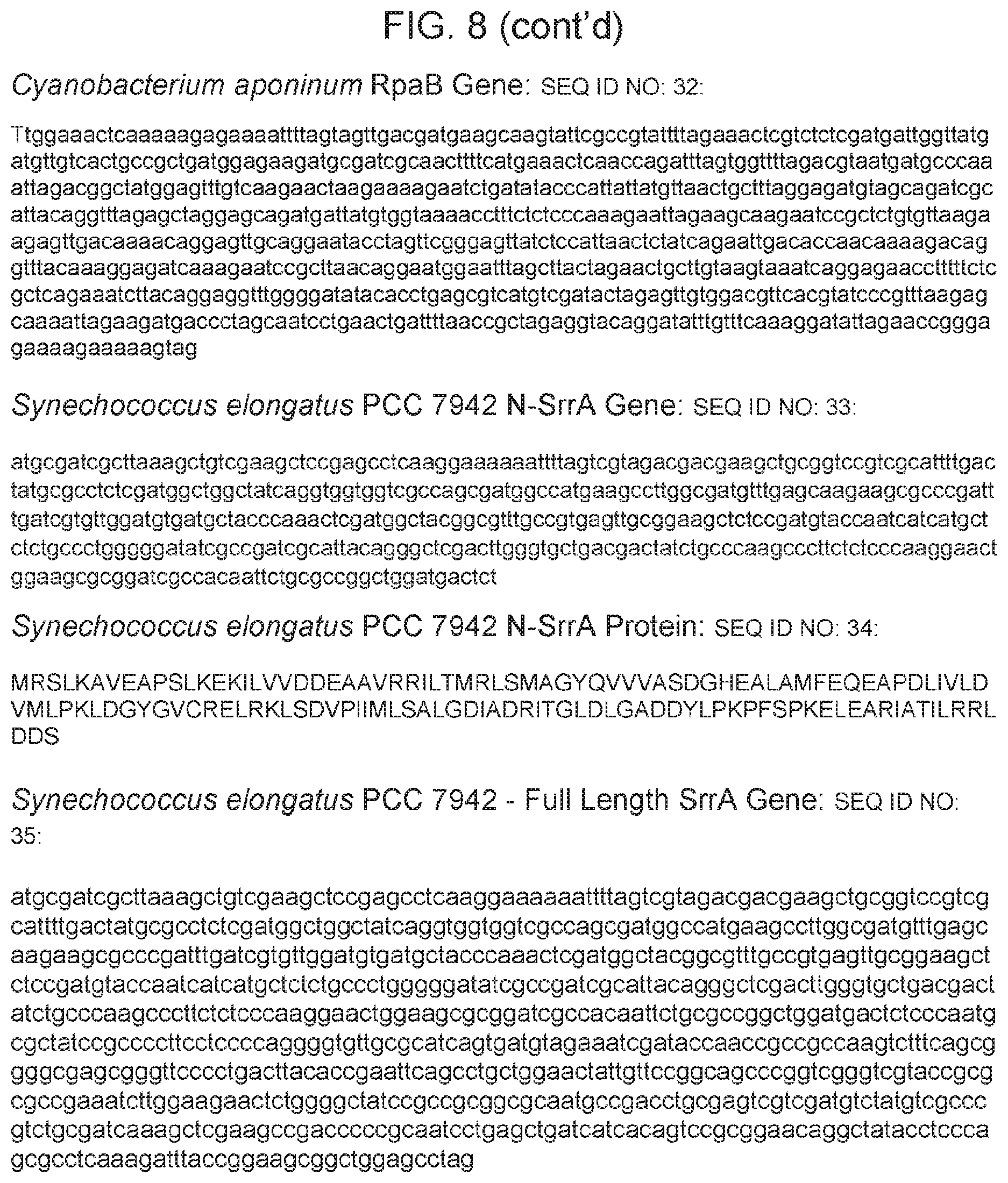
D00014
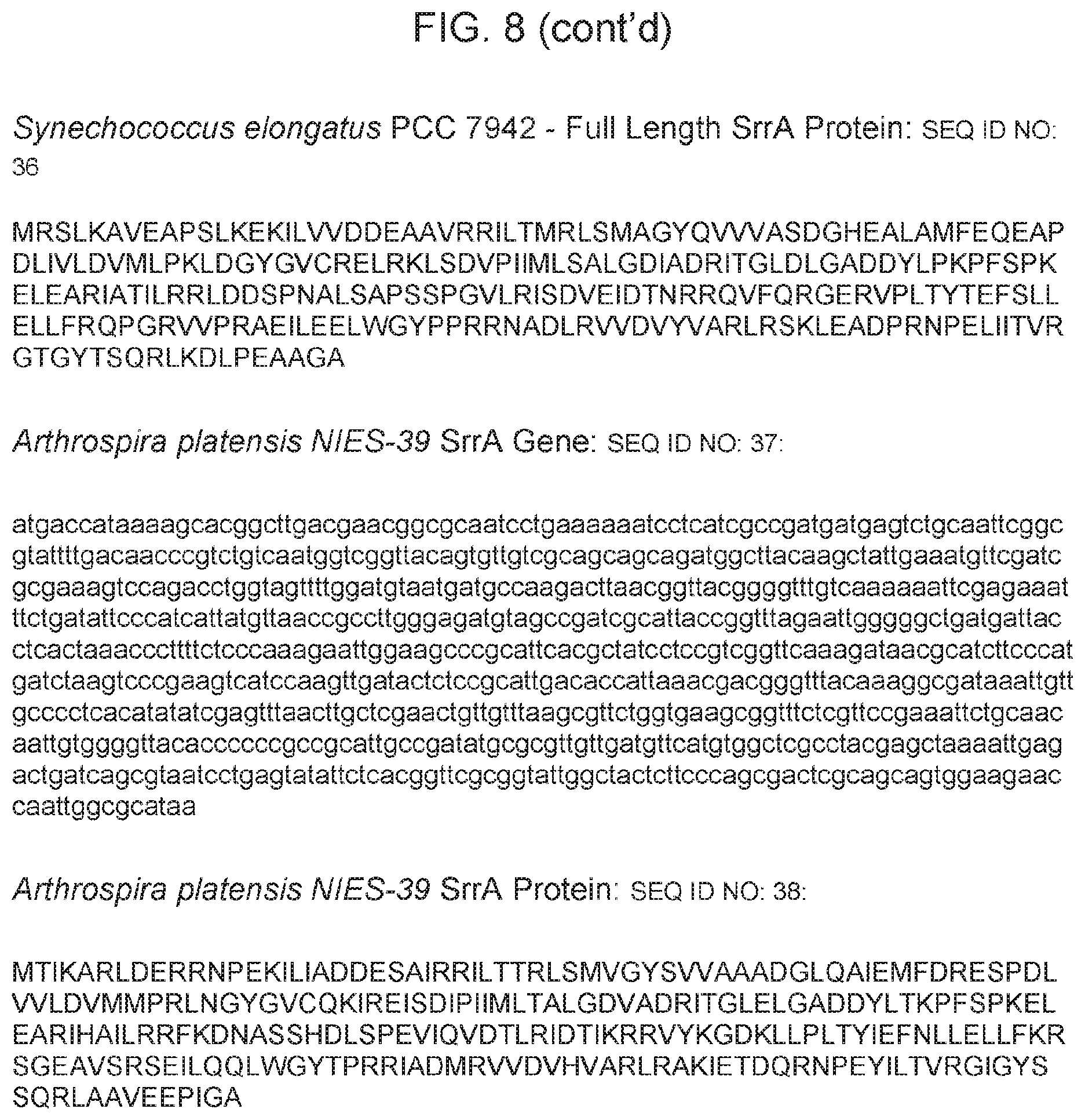
D00015
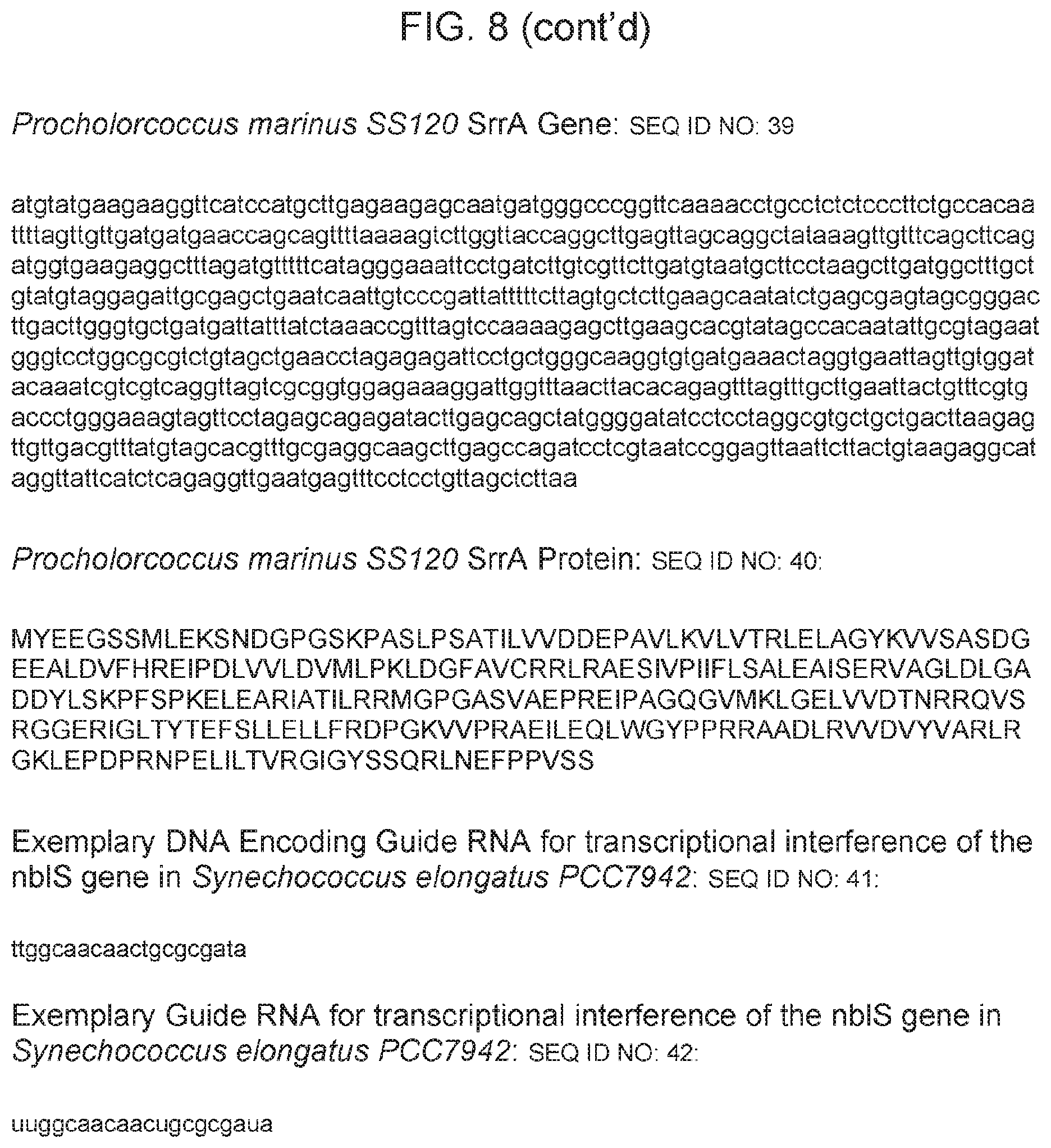
D00016
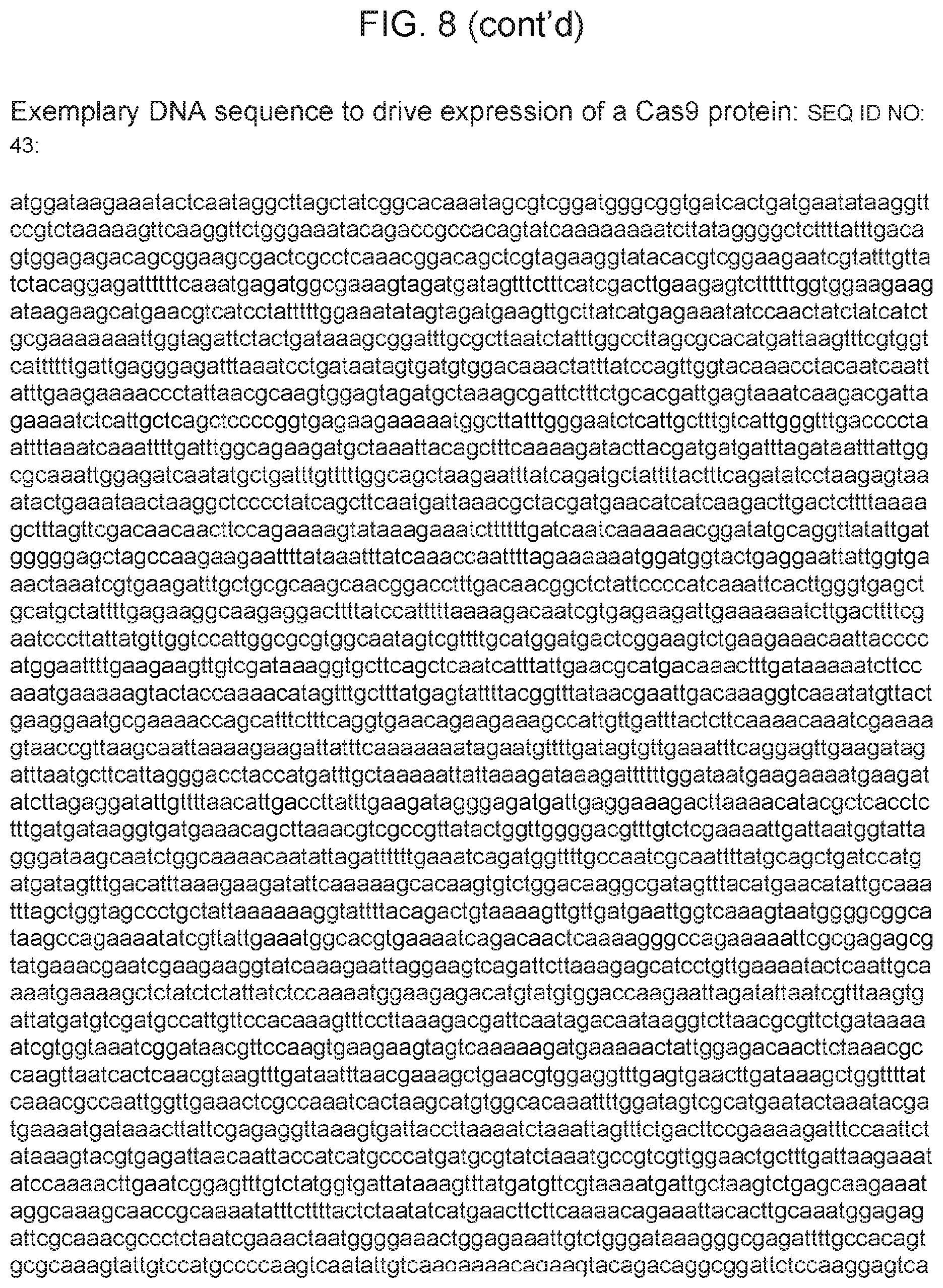
D00017
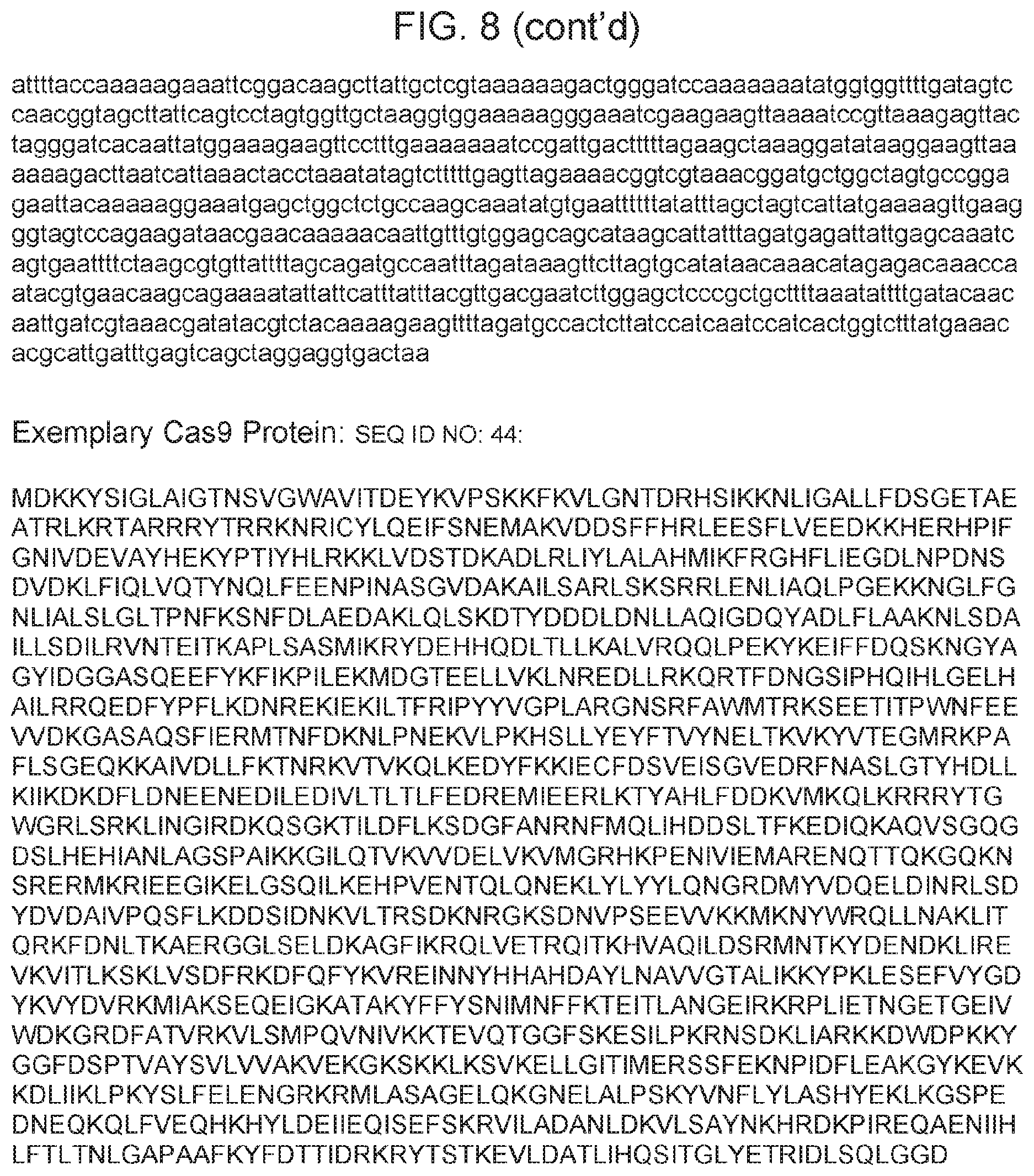
D00018
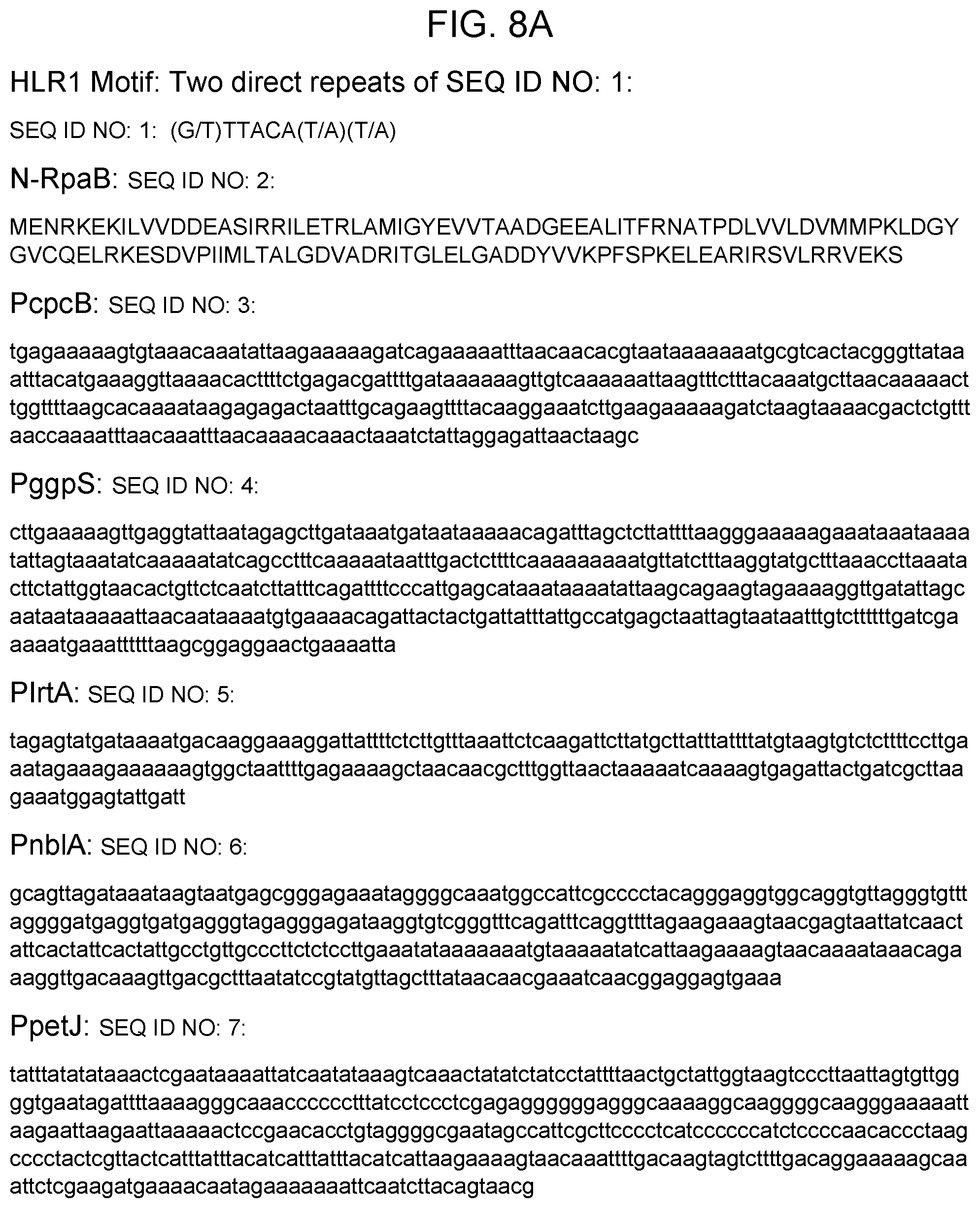
D00019
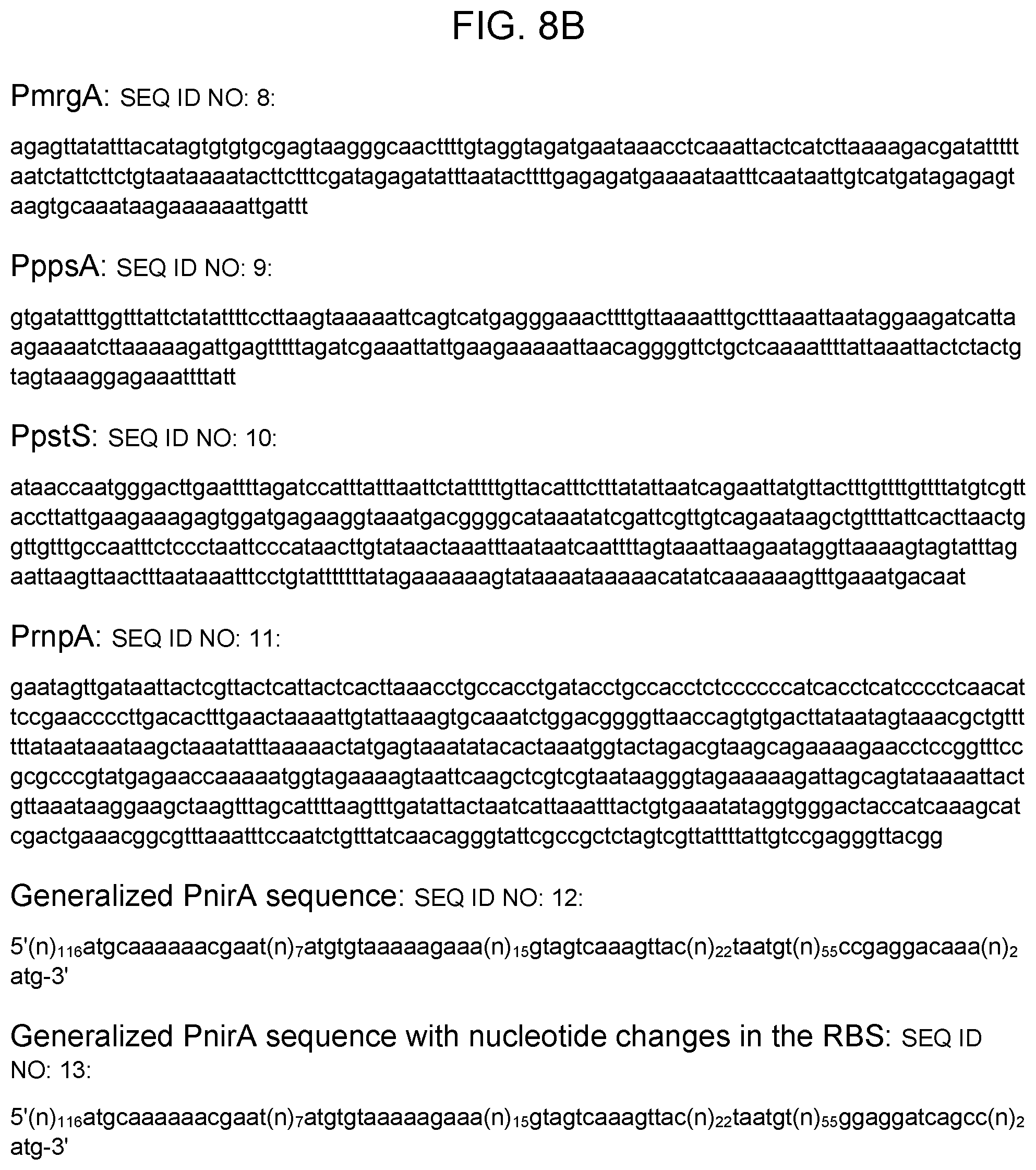
D00020
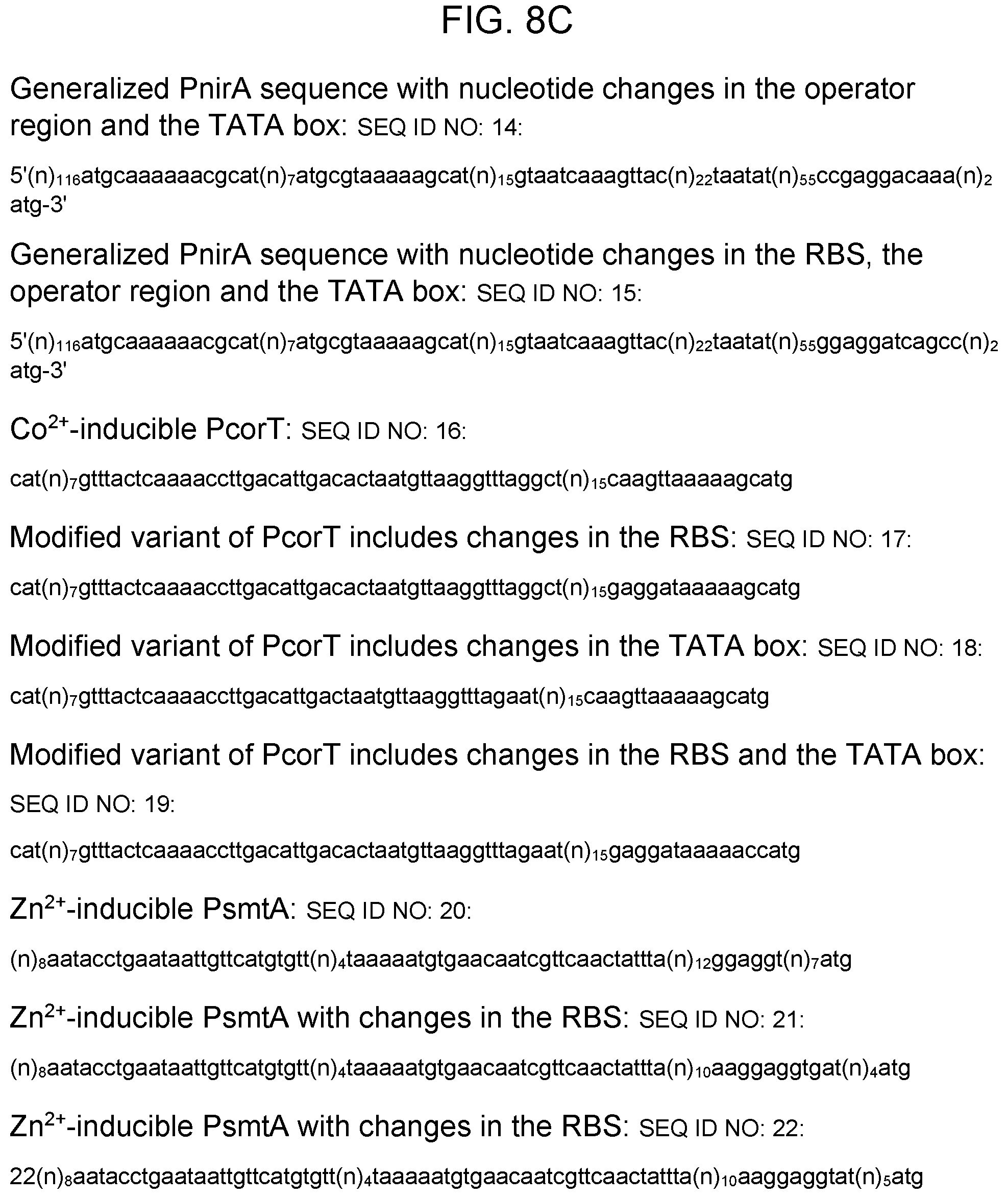
D00021

D00022
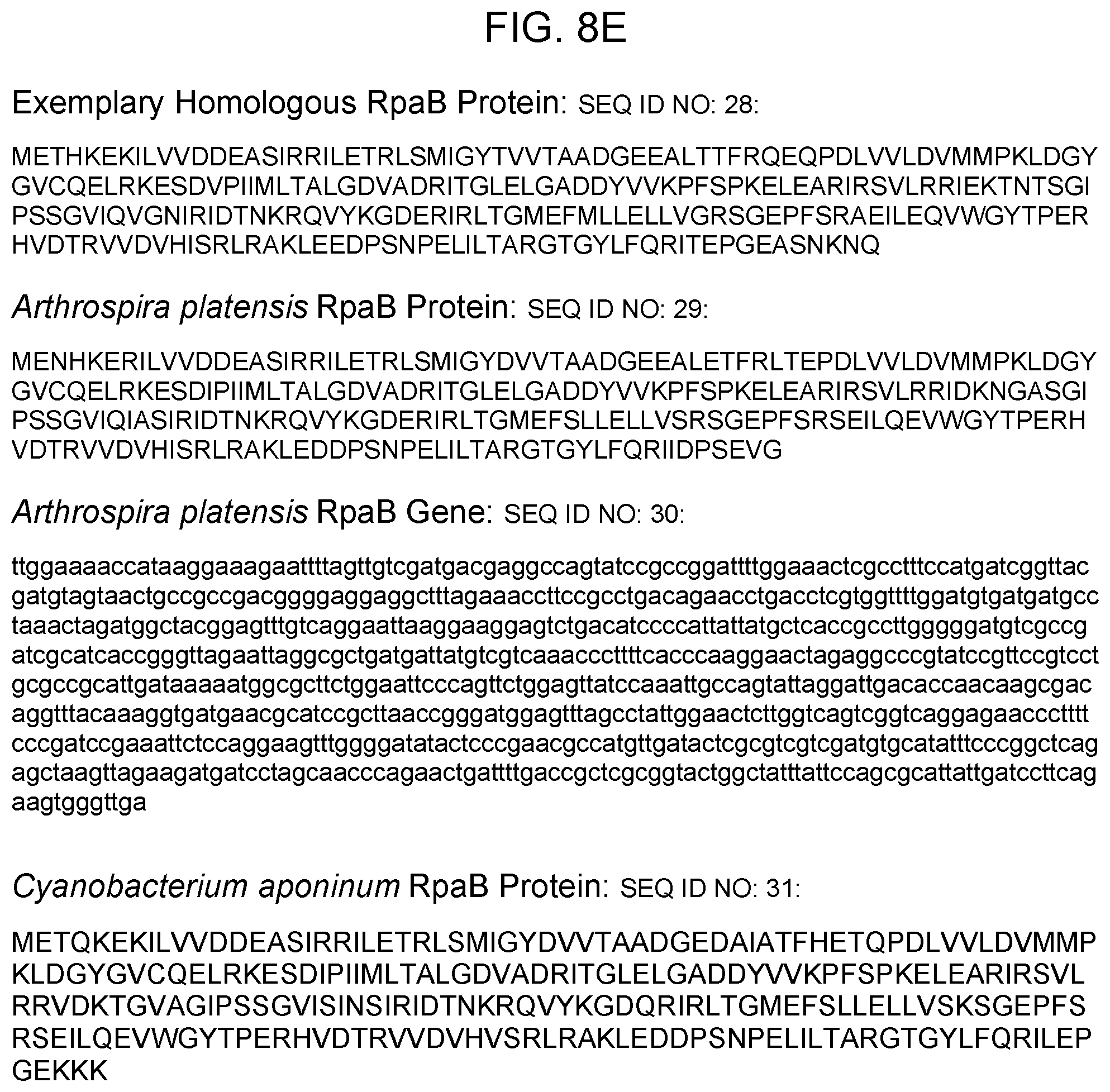
D00023
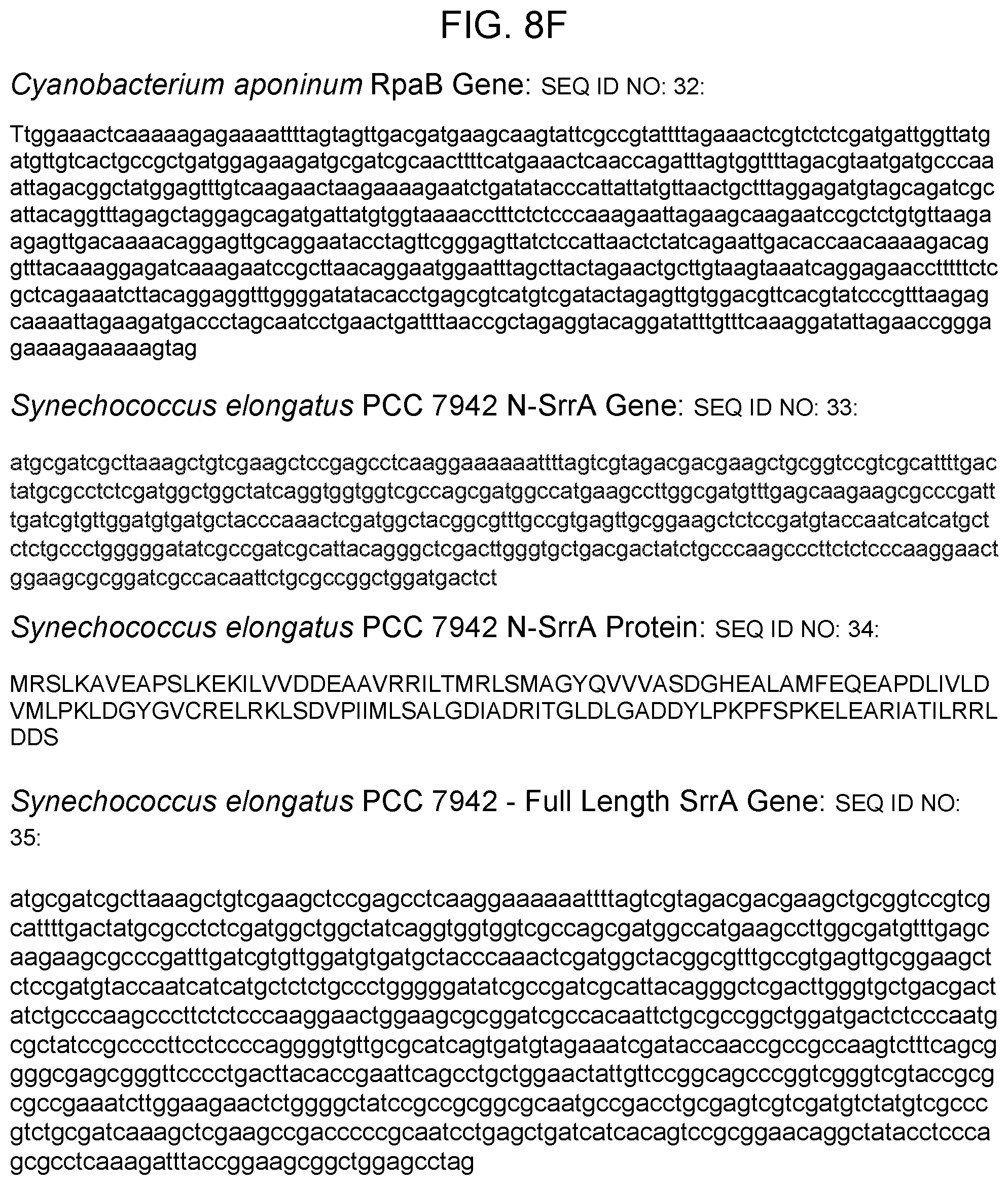
D00024
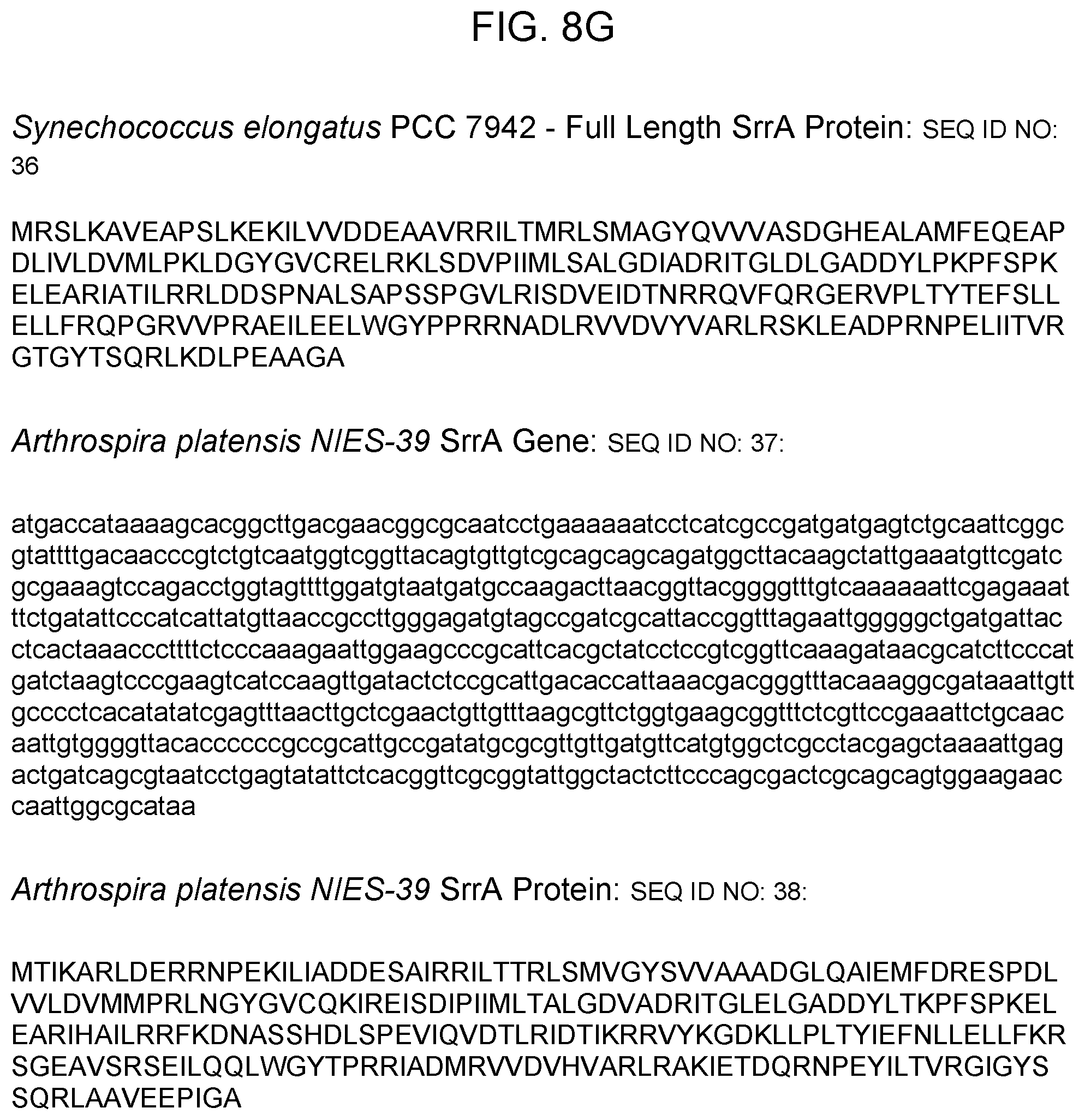
D00025

D00026
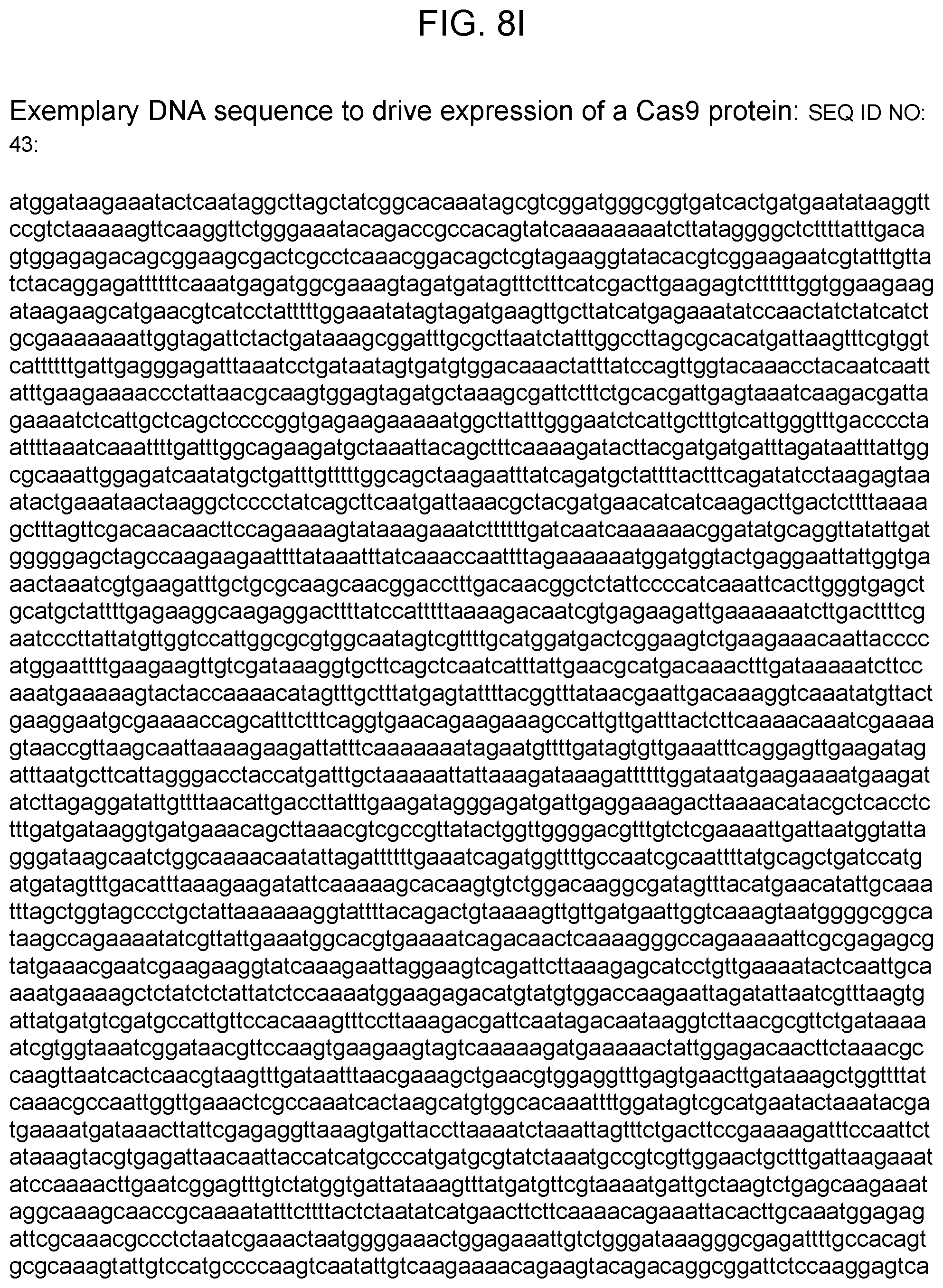
D00027
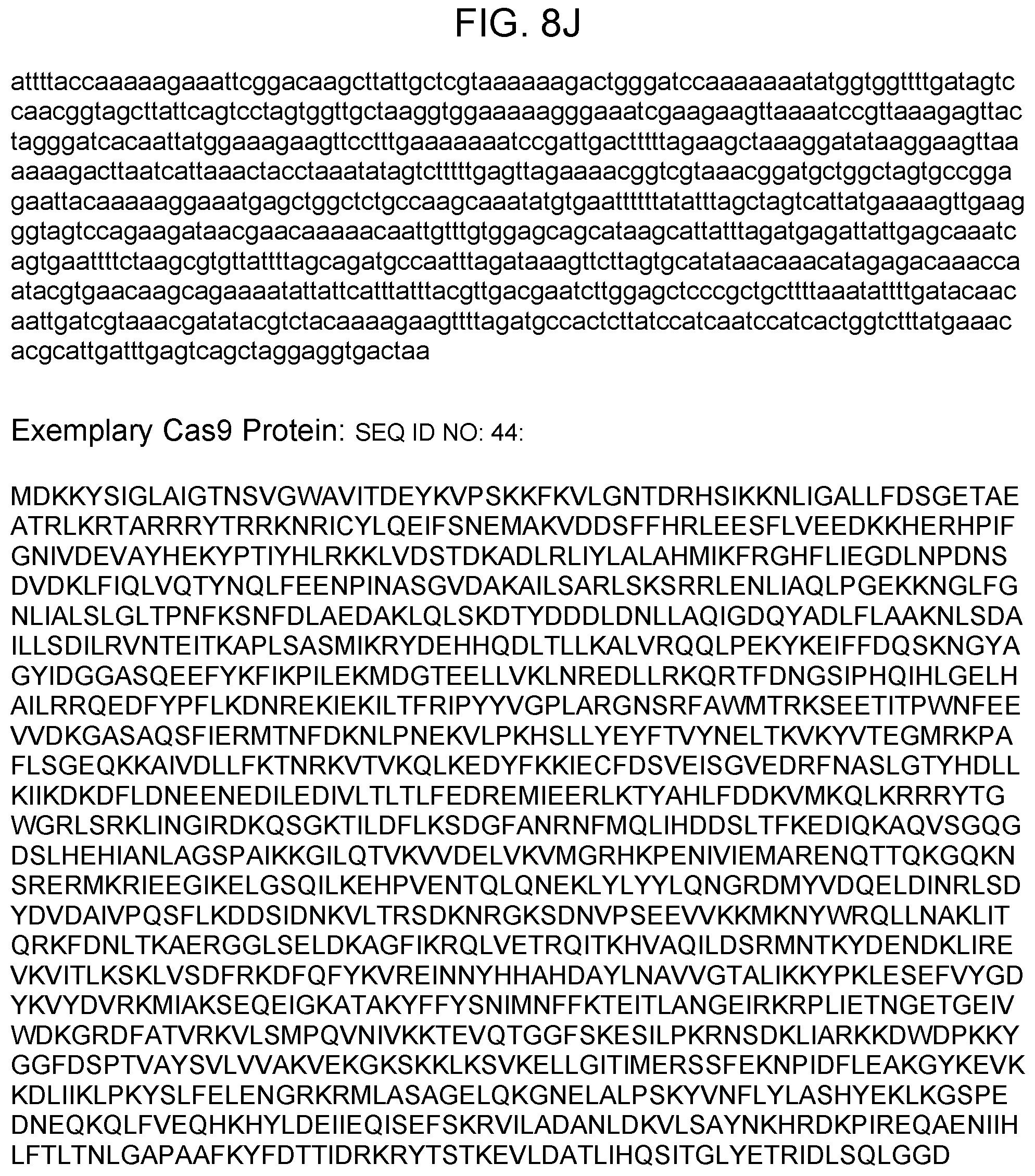
S00001
XML
uspto.report is an independent third-party trademark research tool that is not affiliated, endorsed, or sponsored by the United States Patent and Trademark Office (USPTO) or any other governmental organization. The information provided by uspto.report is based on publicly available data at the time of writing and is intended for informational purposes only.
While we strive to provide accurate and up-to-date information, we do not guarantee the accuracy, completeness, reliability, or suitability of the information displayed on this site. The use of this site is at your own risk. Any reliance you place on such information is therefore strictly at your own risk.
All official trademark data, including owner information, should be verified by visiting the official USPTO website at www.uspto.gov. This site is not intended to replace professional legal advice and should not be used as a substitute for consulting with a legal professional who is knowledgeable about trademark law.